
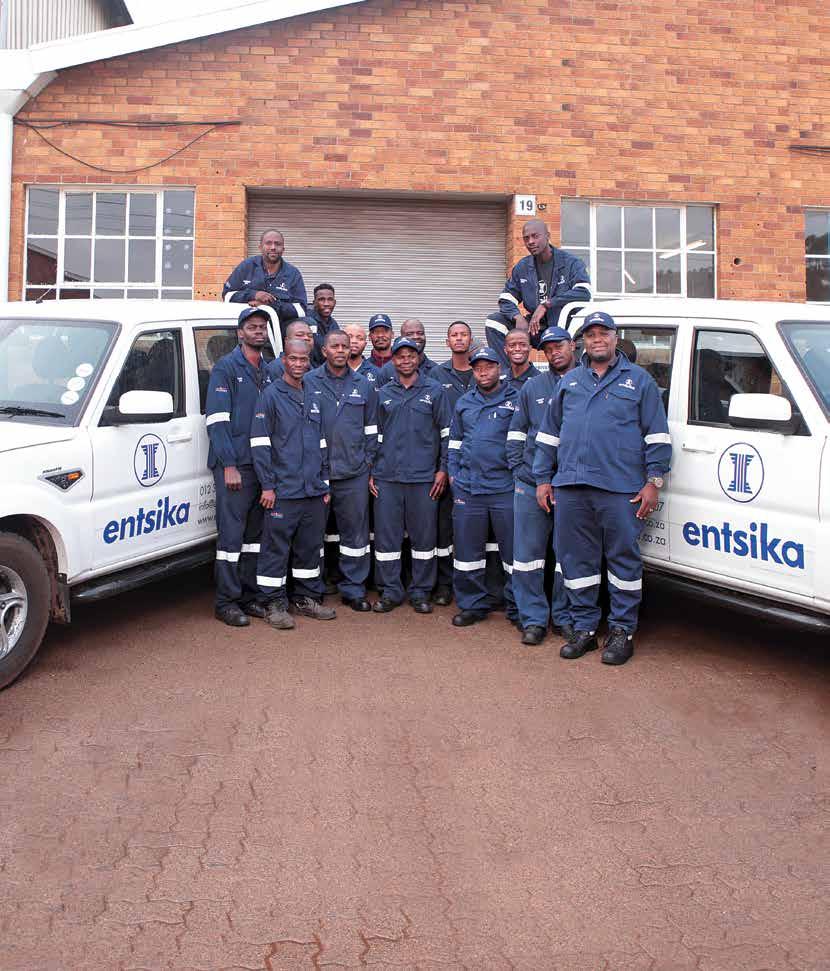

entsika Energy Run-of-river hydropower in the DRC IMESA The official magazine of the Institute of Municipal Engineering of Southern Africa www. infrastructurenews.co.za infrastructure development • Building • m aintenance • service delivery making a difference by investing in technical excellence IN THE HOT SEAT We have created an independent R&D Department, which works closely with Much Asphalt and other AECI companies, to expand our expertise and explore new markets.” Eddie Jansen van Vuuren general Manager, SprayPave ISSN 0257 1978 Volume 44 No.10 • October 2019 • R55.00 (incl. VAT) Always staying ahead Dinesh Chaithoo Managing director, Chaithoo INDUSTRY INSIGHT
















A range of products built on the foundation of quality and durability
Aggregates
Concrete Based Products Industrial Minerals
Contracting International Commodities
www.afrimat.co.za


























Inspiring growth through consistent delivery of solutions that empower our people and our customers.
The Aggregates Division is a key division within Afrimat Limited producing aggregates of a wide variety of sizes and technical specifications, primarily with products including stone, laterite and sand mainly for large-scale civil engineering and infrastructure projects. The Aggregates Division is located in eight of South Africa’s provinces.
The Readymix Division supplies concrete primarily to large-scale civil engineering and infrastructure projects through fixed and mobile readymix plants, where concrete is batched on demand and then transported to site by concrete mixer trucks. Concrete Based Products include bricks, blocks and readymix. Close to 90% of the division’s raw material needs (excluding cement) are sourced from the group’s own quarries. While the mobile concrete batching can be set up in any part of the country, the fixed plants are based in the Western Cape, KwaZulu-Natal, Free State and Mpumalanga.
The Aggregates Division and the Concrete Based Products Division are part of Afrimat Limited, a leading black empowered open pit mining company.
Tel +27 21 917 8840 Fax +27 21 914 1174 info@afrimat.co.za
CONSISTENCY. IT’S WHAT WE’RE MADE OF.
®









IN THE HOT SEAT
SprayPave’s 360-degree approach to customer service, quality and product innovation positions the company for sustained growth in the local and cross-border markets. General manager Eddie Jansen van Vuuren talks about current capabilities and future plans. P10
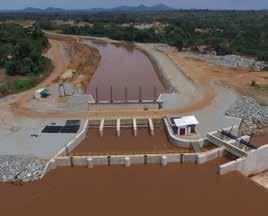


Expanding its range of capabilities year-on-year, Entsika Consulting Services now offers the market a multidisciplinary and integrated range of services encompassing engineering and construction, plant infrastructure asset management, consulting, internal auditing, training and skills development, and enterprise development. P6 volume 44 no. 10 october 2019 Regulars Editor’s comment 3 President’s comment 5 Africa round-up 12 Index to advertisers 79 Cover Story Making a difference by investing in technical excellence 6 Hot Seat Perfecting the grade 10 Industry Insight Always staying ahead 14 Roads & Bridges Start with the best lifetime option 16 Embracing the future today 19 Mogale City Junior Traffic Training Centre gets a revamp 20 Plastic paves the path to new roads 22 Sabita member listing 25 Engineering world-class routes 27 Setting the PG standard 28 A green and versatile course layer 31 Runways Rehabilitating a critical airstrip 32 Partners in Infrastructure Embracing change and innovation 34 Economic lull harming transformation 37 Transport, Logistics, Vehicles & Equipment Ammann’s strategic focus on SMMEs 39 ELB is Ammann’s best compaction dealer 41 Environmental Engineering Going green with gabions 42
28 ROADS & BRIDGES Setting the PG standard 69 44 PIPES, PumPS & vAlvES Relief for drought-stricken Sutherland HyDROPOwER Run-of-river hydropower in the DRC Hydropower Run-of-river hydropower in the DRC 44 Water & Wastewater Introducing Nafasi Water 49 Optimising the treatment process 51 The power of anaerobic digestion 53 The uMkhomazi Water Project 54 Addressing vulnerabilities 56 Dams & Water Storage Specialised water storage solutions 59 Keeping urban dams clean and safe 60 Construction Law Practical solutions to avoid conflict and disputes in construction contracts 62 Pipes, Pumps & Valves Take a look inside your pipes 65 Optimising multistage performance 67 Relief for drought-stricken Sutherland 69 Debunking the myths around HDPE mechanical joining 71 Human Settlements Housing as urbanism 72 Waste Management Old landfills – a resource tank waiting to be unlocked? 75 Landfill ban presents opportunities 77 Cement & Concrete Floors that don’t crack 78 A solid foundation for growth 78 Simplifying large tile adhesion 79 entsika Energy Run-of-river hydropower in the DRC IMESA The official magazine of Municipal Engineering of Southern Africa infrastructurenews.co.za INFRASTRUCTURE DEVELOPMENT BUILDING • MAINTENANCE SERVICE DELIVERY making a difference by investing in technical excellence IN THE HOT SEAT We have created an independent R&D Department, which works closely with Much Asphalt and other AECI companies, to expand our expertise and explore Eddie Jansen van Vuuren General Manager,SprayPave Always staying ahead Managing Director, Chaithoo INDUSTRY INSIGHT
INSIDE
INDUSTRY INSIGHT 14
days
engineering
simply offering
design
management service
being replaced
new, multifaceted skill
technology and
community.
of Chaithoo, shares
perspective.
The
of consulting
firms
a
and construction
are rapidly
by the demand for a
set that embraces
the
Dinesh Chaithoo, managing director
his













































Premium quality Aluzinc steel sectional tanks for bulk water storage throughout Africa • High corrosion resistance • Cost effective • On-site assembly • Tough and durable • Low maintenance • 5kL to 4000kL • Steel-domed roofs or open-top tanks
Human consumption/ food grade certified • Tanks < 350kL require no concrete foundation Proud BBBEE Level 2 Contributor sales@rainbowres.com | +27 (0)11 965 6016 | +27 (0)83 226 8572 www.rainbowtanks.co.za MINING | INDUSTRY | MUNICIPAL | AGRICULTURE | FOOD AND BEVERAGE | FIRE FIGHTING accredited
•
MANAGING EDITOR Alastair Currie
SENIOR JOURNALIST Danielle Petterson
JOURNALIST Nombulelo Manyana
HEAD OF DESIGN Beren Bauermeister
CHIEF SUB-EDITOR Tristan Snijders
CONTRIBUTORS Nico-Ben Janse van Rensburg, Randeer Kasserchun, Neeraj Mannie, Natalie Reyneke, Peter Townshend, Brendon van Niekerk
CLIENT SERVICE & PRODUCTION MANAGER
Antois-Leigh Botma
PRODUCTION COORDINATOR Jacqueline Modise
FINANCIAL MANAGER Andrew Lobban
BOOKKEEPER Tonya Hebenton
DISTRIBUTION MANAGER Nomsa Masina
DISTRIBUTION COORDINATOR Asha Pursotham
SUBSCRIPTIONS subs@3smedia.co.za
PRINTERS Paarl Media KZN +27 (0)31 714 4700
ADVERTISING SALES
KEY ACCOUNT MANAGER Joanne Lawrie
Tel: +27 (0)11 233 2600 / +27 (0)82 346 5338
Email: joanne@3smedia.co.za

PUBLISHER Jacques Breytenbach
Novus Print (Pty) Ltd t/a 3S Media
46 Milkyway Avenue, Frankenwald, 2090
PO Box 92026, Norwood 2117
Tel: +27 (0)11 233 2600
www.3smedia.co.za
ANNUAL SUBSCRIPTION: R600.00 (INCL VAT)
ISSN 0257 1978 IMIESA, Inst.MUNIC. ENG. S. AFR.
© Copyright 2019. All rights reserved.
IMESA CONTACTS
HEAD OFFICE:
Manager: Ingrid Botton
P.O. Box 2190, Westville, 3630
Tel: +27 (0)31 266 3263
Email: admin@imesa.org.za
Website: www.imesa.org.za
BORDER
Secretary: Celeste Vosloo
Tel: +27 (0)43 705 2433
Email: celestev@buffalocity.gov.za
EASTERN CAPE
Secretary: Susan Canestra
Tel: +27 (0)41 585 4142 ext. 7
Email: imesaec@imesa.org.za
KWAZULU-NATAL
Secretary: Ingrid Botton
Tel: +27 (0)31 266 3263
Email: imesakzn@imesa.org.za
NORTHERN PROVINCES
Secretary: Ollah Mthembu
Tel: +27 (0)82 823 7104
Email: np@imesa.org.za
SOUTHERN CAPE KAROO
Secretary: Henrietta Olivier
Tel: +27 (0)79 390 7536
Email: imesasck@imesa.org.za
WESTERN CAPE
Secretary: Michelle Ackerman
Tel: +27 (0)21 444 7114
Email: imesawc@imesa.org.za
FREE STATE & NORTHERN CAPE
Secretary: Wilma Van Der Walt
Tel: +27 (0)83 457 4362
Email: imesafsnc@imesa.org.za
Forging a common vision
Establishing a common vision for the South African construction market is now more essential than ever, given a continued lag in fortunes for this vital sector. I regularly attend conferences where public and private sector leaders share the stage, but often appear to do so in isolation from each other. Government has its mandate; business has theirs – and both assume the other side understands and embraces the same priorities. But clearly that’s not the case. For example, public bodies express their unhappiness about the pace of socio-economic transformation, while the construction sector decries the lack of infrastructure investment, challenges the protracted tender process, and points to the constant job losses being experienced in the sector. Communication and the playing of open cards are the key, especially in segments like construction and mining, which play such a critical role in shaping South Africa’s GDP.
Overall, South Africa’s economy remains in positive territory, as indicated by the recent Q2 GDP data released by Stats SA. These GDP results showed an unexpectedly positive upturn, increasing by 3.1%. Q2 also saw a 6.1% improvement in gross fixed capital formation, following five consecutive dips. Machinery and equipment imports were among the key contributors, partly influenced by a more buoyant mining and quarrying industry. The latter’s contribution rose by 14.4%, accounting for 1% of GDP.
Sadly, the construction industry’s role in the mix remained in negative territory, with this sector only contributing -0.1% and contracting by 1.6%. This is the fourth successive quarter-on-quarter contraction.
According to Trading Economics, South African construction’s historical contribution
to GDP peaked at around R110.1 billion in Q4 2016 and stood at approximately R106.4 billion in Q2 2019. Although this seems like a sizeable number, it will need to grow significantly if we want to sustain our industry and grow South Africa as a major trading nation.
For South Africa to succeed, it has to restore the trust that’s been lost between the public and private sector. This is especially the case when it comes to late payments that have forced both larger and smaller construction companies to close their doors. Continued underspending of approved infrastructure budgets is another compounding factor. So if the current government procurement model isn’t working, let’s change it. Then we can effect real socioeconomic transformation.
As taxation revenues shrink, it, in any case, seems inevitable that private sector infrastructure funding will become an increasingly important part of the mix in sustaining the industry. That, of course, needs to be in alignment with government strategy.
The local and international appetite for public sector investments will depend on how current and future debt is leveraged, as well as the cost of borrowing.
That depends on clearer policy certainty. A silo approach isn’t going to work.
Alastair








Cover opportunity
EDITOR’S COMMENT To our avid readers, check out what we are talking about on our website, Facebook page or follow us on Twitter and have your say.
In each issue, IMIESA offers advertisers the opportunity to get to the front of the line by placing a company, product or service on the front cover of
journal.
position
advertiser
cover story
maximum exposure.
more information
cover bookings, contact Joanne Lawrie
+27
346 5338.
the
Buying this
will afford the
the
and
For
on
on
(0)82
All material herein IMIESA is copyright protected and may not be reproduced either in whole or in part without the prior written permission of the publisher. The views of the authors do not necessarily reflect those of the Institute of Municipal Engineering of Southern Africa or the publishers. Novus Holdings is a Level 1 Broad-Based Black Economic Empowerment (BBBEE) Contributor, with 135% recognised procurement recognition. View our BBBEE scorecard here: https://novus.holdings/sustainability/transformation Infrastructure News @infrastructure4 entsika Energy Run-of-river hydropower in the DRC IMESA official Institute of Engineering Africa www.infrastructurenews.co.za INFRASTRUCTURE DEVELOPMENT BUILDING MAINTENANCE DELIVERY making a difference by investing in technical excellence IN THE HOT SEAT We have created an independent R&D Department, works with Much Asphalt and AECI companies, to expand our expertise and explore markets.” Eddie Jansen Vuuren General Manager, October R55.00 Alwaysstayingahead Dinesh Chaithoo Managing Director, INDUSTRY INSIGHT IMIESA October 2019 3
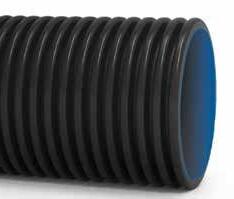

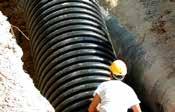

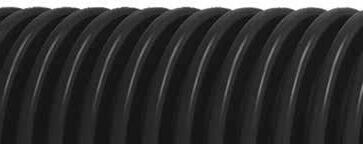
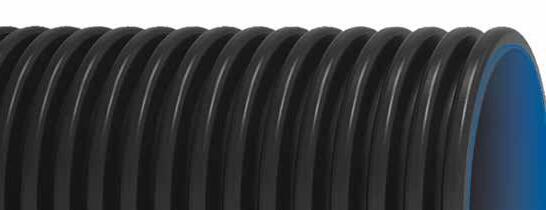
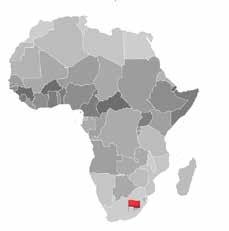

Analysis and execution
Asset management is a critical discipline for municipal managers and engineers, especially when it comes to infrastructure maintenance and service delivery. It begins with the establishment of an asset register and thereafter tying this into a planning and project management tool.
Budget information needs to be included, along with timelines and allocated costs for routine inspections, maintenance and upgrades. Then everyone needs to know their job within the matrix and make sure it’s executed correctly for the whole system to work.
Although an obvious and internationally benchmarked practice, and a requirement in terms of South African legislation, a number of our municipalities are still falling short in these areas. In some instances, asset management registers and systems are either not in place or have not been updated for years. Without accurate data, this means some municipalities are operating blindly and without precise knowledge of their ageing assets.
measure, monitor and report back to a central decision-making task team.
AMPLE approach

In the absence of systematic conditioning monitoring, essential predictive maintenance practices are not in place. Maintenance then becomes reactive when sudden failures occur, like a pipeline burst or a substation fire. Even worse, without accurate assessments, there could be a potential health and safety risk, such as a bridge collapse or sewage spillage. Getting the numbers right is the responsibility of the accounting officer and municipal manager. There has to be a clear financial and risk management strategy, with provision made for future expenditure. At the operational end, it’s equally vital that municipal engineers are equipped with the right tools to assess,
Around 2012, IMESA had already identified the need for asset management training as an essential skill set. Thanks to an agreement concluded with GHD’s Global Assessment Group, IMESA was granted a licence to use the AMPLE tool suite. AMPLE stands for Asset Management Programme Learning Environment and is designed as an e-learning package. There are three levels, starting with an introduction to the subject and transitioning to the ultimate stage. The end goal is to become a master tactician: providing world-class service delivery at the lowest life-cycle cost.
We believe AMPLE is an excellent tool that will simplify the development of your sustainable asset management strategic plans. It can be accessed via our website (at www.imesa.org.za/asset-management-2). There are a few details that need updating, but the learning modules are all ready for use now.
Although it’s designed to be a self-learning package, we understand the benefits of having expert instruction and support. In response, IMESA will be rolling out regional AMPLE workshops in 2020, running alongside our growing series of industry-specific training courses.
More benefits for IMESA members Allied to this, we are currently working on a full
online membership system, which is expected to go live before the end of 2019.
Members will be able to update their contact details and access member-specific facilities being developed. Online services will include event registration, for branch meetings and workshops, and the ability to track individual IMESA CPD activities. We also plan to include news and forum pages. Affiliate members will also be featured.
Moving forward, IMESA remains committed to empowering municipal engineers so that they can fulfil their role as essential change agents. We need to protect our assets.
 Randeer Kasserchun, president, IMESA
Randeer Kasserchun, president, IMESA

IMESA
P RESIDENT ’ S COMMENT
IMIESA October 2019 5
Entsika - Making a difference by investing in technical excellence
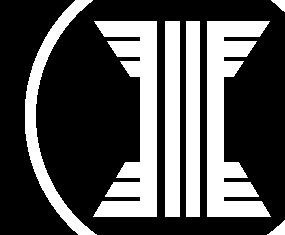
Expanding its range of capabilities year-on-year, Entsika Consulting Services now offers the market a multidisciplinary and integrated range of services encompassing engineering and construction, plant infrastructure asset management, consulting, internal auditing, training and skills development, and enterprise development. They all work together to ensure seamless project and service delivery.
An Auditor General (AG) media release, published on 26 June 2019, flagged a lack of accountability as the major cause of poor local government audit results and the report lists a number of main indicators for the deteriorating accountability during the year under the review – one being the “shortcomings in the development and maintenance of infrastructure”. These included the underspending of grants, delays in project completion, and non-compliance with supply chain management legislation.
The AG cited as a key concern “the lack of attention paid to water and sanitation infrastructure”. He said the condition of water and/or sanitation infrastructure was not assessed by 32% of the municipalities responsible for water and sanitation; and almost half did not have policies for maintenance. Furthermore, the AG found that 39% of the municipalities that disclosed their water losses reported losses of more than 30%, resulting in an overall loss of R2.6 billion.
The AG also highlighted that the maintenance of roads did not receive the necessary attention, with the condition of roads not being assessed by 23% of the municipalities responsible for roads and 41% not having a road maintenance plan.



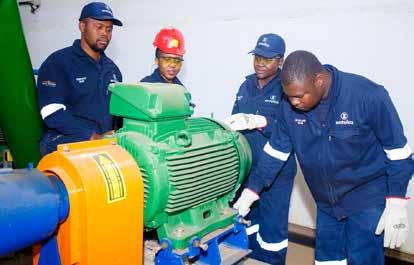
C O v ER STOR y
6 IMIESA October 2019


Quoting directly from the AG’s media release, “These findings indicate major shortfalls in fiscal discipline, maintenance planning and project execution,” says Clifford Makoloane, director, Entsika. “The upside is that they also open the door to new business opportunities for contractors as municipalities weigh up the benefits of outsourcing operations and maintenance management to specialist engineering service providers.”
Entsika is a Level 1 BBBEE Contributor and is a black-owned and -managed business. It was founded by professionals with extensive experience in plant infrastructure asset management (maintenance management), consulting, internal auditing, training and skills development, enterprise development, as well as engineering and construction.
Entsika has delivered on various large projects at both national and local levels. These include water and wastewater pump station maintenance, asset and infrastructure management, water conservation and water demand management, Green and Blue Drop, and water quality management projects. Other projects completed or in progress include process improvement projects, verification of property rates and taxes arrears across 133 municipalities, asset and expenditure verification, and the installation and equipping of boreholes. Entsika works with leading organisations such as the Department of Public Works, Department of Rural Development and Land Reform, Department of Social
Investing in people
Entsika’s technical excellence success hinges on its people. The company employs more than 60 field-proven experts in its Asset Management (maintenance management), and Engineering and Construction divisions. They comprise mechanical, electrical and civil engineers, as well as qualified artisans. In conjunction with TVET colleges, Entsika’s skills programmes train, develop and qualify a growing pool of fitters and turners, electricians, and instrumentation specialists, supported by semi-skilled and assistant workers who are being mentored to grow into any one of these fields.
Growth areas
The asset and infrastructure management side of the business is undergoing rapid expansion, with a niche focus on the water, wastewater,





mining and power sectors. Central to Entsika’s future growth strategy is the expansion of its engineering and construction capabilities.
Entsika is currently graded as an 8MEPE, 5EPPE, 6CEPE, and 1GBPE contractor in terms of the Construction Industry Development Board system. The business, in all areas, serves the Southern African region, for both private and public sector clients.
Entsika has set its sights on business expansion in the water and wastewater segment by providing specialist O&M services to clients, helping them manage their infrastructure assets across the mechanical, electrical, instrumentation and civil disciplines.
“Infrastructure such as electrical equipment, roads, water and wastewater systems are ageing, and their maintenance should be placed as a high priority on the strategic and operational plans of municipalities,” says Makoloane. “It’s one of the keys to sustainable development and economic growth within the country.”
The benefits of infrastructure maintenance are that it:
• keeps infrastructure operational and delivering services
• creates sustainable jobs
• saves costs in the long term, and often in the short term as well
• will ensure that more funds for new infrastructure will be available in the future.
OEM partnerships
Entsika – in partnership with key OEMs that include Xylem, a leading US-based multinational – installs and services OEM submersible pump systems, including associated equipment and/or components for both public and private sector clients in the water and wastewater segments.
Entsika believes that the private sector has much to offer in the maintenance of infrastructure and that it can be given the opportunity to do so through the establishment of strategic partnerships in terms of service level agreements (SLAs) between government institutions, including municipalities.
SLAs are important to ensure the maintainability, availability and reliability of





IMIESA October 2019 7
Development, Rand Water, and ERWAT, to name a few.
CO v ER STOR y
Entsika membership and accreditations: Partnering with:
existing and future infrastructure, ensuring sustainable service delivery provision at all times. To top it off, such SLAs have the potential to encourage further investment and stimulate job creation, locally, provincially and nationally.
Bespoke services
Entsika provides asset management services that are tailor-made in collaboration with its clients across all industry sectors, and the company assists them to:
• maximise operational availability and reliability through the application and execution of sustainable asset management practices
• identify, review and develop asset management strategies, plans, processes and practices, and implement them organisation-wide to achieve maximum long-term operational availability and reliability
• review and optimise the management of assets in line with operational objectives and targets.
Entsika believes that effective and efficient asset maintenance execution is one of the tools to optimise operations without compromising the safety, health, environment and quality of the organisation.
Its maintenance team has the capacity to meet the asset maintenance needs of any client. Services include the following:
• asset maintenance planning and scheduling of preventative, corrective and predictive (condition-based) maintenance tasks
• asset maintenance execution in terms of servicing, repairs and refurbishment of mechanical, electrical and instrumentation equipment and machinery, including facilities maintenance
• asset maintenance spare parts and inventory management
• development of asset maintenance strategies and plans

• refurbishment of equipment and machinery, such as pumps, motors, valves, gearboxes, to name a few
• performance monitoring and reporting (i.e. KPAs/KPIs)
• safety management in terms of the Occupational Health & Safety Act (No. 85 of 1993) requirements.
The company provides a comprehensive, full-service package to asset owners to fully or partly outsource the maintenance of their assets. Furthermore, the company also collaborates and partners with other likeminded service providers such as the likes of Electrical and Pump Centre, that possesses excellent technical skills in the repairs of pumps, motors and gearboxes amongst others, using advanced designs and modern techniques.
Engineering and construction
Entsika’s Engineering and Construction Division provides a wide range of mechanical, electrical, instrumentation and civil engineering services across all industry sectors. These include:
• the design, supply, installation, construction and commissioning of plant, equipment and machinery, including the provision of technical assistance to client staff
• civil works, which includes the construction, upgrading and rehabilitation of roads, stormwater infrastructure, paving of streets, bridge construction, including mass earthworks and geotechnical surveys
• general building works, which includes foundation and geotechnical works, various brick works, concrete works, paving, roofing, and plumbing works associated with residential and commercial buildings
• re-engineering and refurbishment of equipment, machinery and facilities
• project management services on any turnkey engineering and construction project, including feasibility studies, project scoping, planning and scheduling, as well as material procurement and quality management, just to name a few.
Minecrete-S3
Furthermore, Entsika, in partnership with South African Mining & Engineering Supplies, provides a product named Minecrete-S3 as an alternative solution to existing and/or new civil infrastructure works. Clients can reduce their shotcrete application by half with Minecrete-S3 This product can be used for sealing of existing waterways, roadway structures, water canals and damage associated with water flow, among other applications.
Some of the key features of MineCrete-S3 are as follows:
ENTSIKA FOUNDATION
Through the Entsika Foundation, the group is committed to rebuilding and developing South African society and making a long-lasting impact. These initiatives include community development by providing mentorship programmes and supporting young people to become great leaders.
Entsika strives to contribute towards alleviating poverty in the country and make a long-lasting difference. The company embraces social development not because it is compelled to, but because it is driven by a desire to make a difference!
This entails:
• education of children with disabilities
• youth development through awarding of bursaries and mentorship programmes
• provision of school uniforms to disadvantaged learners
• construction of schools in previously disadvantaged areas
• provision of food security for childheaded families and the impoverished in rural areas and townships.

• Minecrete-S3 is a super strong shotcrete with excellent bond and water permeability characteristics.
• Minecrete-S3 is a quick cure product, achieving up to 70% of its total strength after one day.
• Minecrete-S3 is a 100% water sealing product.
• Minecrete-S3 has excellent energy absorption strengths of 915 J in 24 hours for ground movement.
“Proper maintenance of water and wastewater infrastructure is critical to the long life and safe operation of plant and equipment, and Entsika is committed to making a difference by providing municipalities with a comprehensive infrastructure maintenance proposal,” says Makoloane.
“That will also address service delivery challenges, without compromising on the safety, health, environment and quality of the assets and/or plant,” he concludes.

8 IMIESA October 2019
C O v ER STOR y
info@entsika.co.za +27 (0)12 348 2307 www.entsika.co.za

GREAT ROADS START HERE
BECAUSE SUPERIOR QUALITY CEMENT LEADS TO CONSISTENT EXCELLENCE
AfriSam Roadstab Cement is made with AfriSam’s unique, tried and tested C-Tech advanced formulation. Designed to reduce plasticity and enhance the strength and stability of road-based materials this Limestone Composite Cement* is perfect for all soil types. Get the best performance from the road-stabilisation cement you can rely on every time. Choose AfriSam Roadstab Cement.
*Product composition may vary dependent on plant of origin.
Creating Concrete Possibilities www.afrisam.com
promise_13476/E
Perfecting the grade
SprayPave’s 360-degree approach to customer service, quality and product innovation positions the company for sustained growth in the local and cross-border markets. ImIESA speaks to general manager Eddie Jansen van Vuuren about current capabilities and future plans.
immediate assurance of quality.
What does SprayPave offer the roads industry?
EJvv SprayPave’s mission is to be the preferred supplier and distributor of quality bitumen binders in South Africa. We create value for our customers by integrating innovative people with technology to supply a comprehensive range of fit-for-purpose, SABS-approved products to suit different road designs. Our on-site laboratories allow for the issuance of product test result certificates prior to dispatch, giving the customer
The SprayPave fleet, managed and maintained internally, offers an additional delivery and application service. We have 11 tankers in our bitumen distribution fleet, equipped with the Etnyre spraying system, which can spray anything from emulsions and cutback to penetration grade and homogeneous modified bitumen. Four 29 t capacity bitumen haulers move products internally and externally.
Do you have any new products on the market?
We recently started manufacturing a highly modified crack seal called Opti-Crackseal. This new product line is available to the road maintenance industry
from all of our branches. We do have other products under development, but can’t give anything away just yet.
What are the most important changes you’ve made in the past year?
Technology has been one of the most significant improvements at SprayPave in terms of capabilities and output volumes. We have created an independent R&D Department, which works closely with Much Asphalt and other AECI companies, to expand our expertise and explore new markets. The key focus in the 2019/20 period is new product R&D, including capital investment in test equipment. Customer service has also been a key focus area, which has been improved by employing expert sales representatives at our three branches. A new SMS update service is working well

to keep customers informed on the progress of their orders. Customer feedback is vital for continuous improvement. We interact with our customers on a quarterly basis through customer surveys.
At SprayPave, our goal is zero harm. We aspire to operate sustainably, without harm to people, the environment and the communities in which we operate. We recently adopted the AECI SHEQ framework, which is our standardised approach to managing risk and improving SHEQ performance.
How do you add value to the capabilities of the Much Asphalt group? SprayPave provides in-house

H OT S E aT
Eddie Jansen van Vuuren, general manager, SprayPave
10 IMIESA October 2019
A SprayPave tanker at work


solutions to Much Asphalt in the form of polymer modified bitumen (PMB) and a range of bitumen grades that are unavailable to the market from the local refinery.
The latter capability comes in the form of a multistage bitumen converter acquired from Technix Industries in New Zealand in 2017. This enables SprayPave to convert bituminous products from one grade to another and, therefore, enhance the penetration grades of bitumen required for asphalt production.
Bitumen is produced by refineries as a by-product of crude oil, but can only be supplied in broad grade ranges that seldom meet asphalt design specifications.
Our 20 tph converter operating in Cape Town uses pressure, heat and air to precisely convert bituminous products in a way that is predictable and repeatable. Various properties of the bitumen – including softness, penetration index and physical properties – can be changed to exact design specifications.
How has the bitumen converter technology impacted your business and the industry?
Output from the converter has steadily increased since 2017. As this was only the second unit to be commissioned worldwide, the technology presents a learning curve and offers new avenues that are yet to be explored.
Bitumen supply is unfortunately always a sore point, as the incoming material to the converter is still bitumen, albeit a softer grade. However, the
AbOUT SprAypAvE

converter has certainly helped to mitigate the shortage of supply of penetration grades of bitumen required by the asphalt industry. While multigrade bitumen is still in the development stage, the converter is able to make SABS-approved 50/70, with a certification process under way on the 35/50 bitumen grade.
Can you comment on upgrades to your plants?
There have been several plant upgrades at SprayPave’s branches across the country and a new mobile emulsion plant is now based in Polokwane. A state-of-the-art emulsion mill

has also been commissioned recently in KwaZulu-Natal.
High shear mills have been installed at the Durban and Alrode facilities to produce high-quality PMB. PMB improves strength, cohesiveness and fatigue resistance to withstand heavy-duty traffic and extreme weather.
Do you have plans for expansion?
Yes, the acquisition of Much Asphalt by AECI in 2018 has opened up opportunities in other markets locally and across borders. We believe we can benefit from AECI’s extensive footprint and experience on the continent. Watch this space.
The mobile emulsion plant in Polokwane also provides good opportunities to expand our footprint. For customers in Africa who require drummed products, SprayPave’s mobile decanting plants and static tanks ensure that hot bitumen is always available in the quantities determined by the project.

H OT S E aT
Danashia Padayachee, technical manager at SprayPave, tests a sample produced by the multistage bitumen converter
SprayPave has manufacturing facilities in Gauteng, Durban and Cape Town and is a wholly owned subsidiary of Much Asphalt – Southern Africa’s largest commercial supplier of asphalt products.
www.spraypave.co.za IMIESA October 2019 11
Lusanda Jele, branch administrator (left), and Angel Gumede, production supervisor, show their solidarity with the Zero Harm Safety Pledge at SprayPave’s Durban branch
$349 billion
SA alone needs more than $349 billion to reach 2050 national climate goals
SOutHERn AfRIcA
Boosting climate investments
The Development Bank of Southern Africa (DBSA) and the Green Climate Fund (GCF) have signed an agreement that will launch a programme to accelerate investments into climate projects and break market barriers. The agreement seals the GCF’s investment of US$56 million (R837 million) into the DBSA’s Climate Finance Facility (CFF), a first-of-its-kind climate finance facility in Africa using a pioneering green bank model. The programme will target South Africa, Namibia, Lesotho and eSwatini, but has a strong potential to be replicated in other developing countries to rapidly scale up private sector climate investments.

The CFF will break existing market barriers to climate financing by providing credit enhancements such as subordinated debt tranches and tenor extensions to de-risk and increase the bankability of climate projects, in order to crowd in significant investments from commercial banks and project sponsors.
“Climate change is a severe and growing threat that affects Africa’s economies, natural resources, livelihoods and social stability. The signing of this agreement today is a significant milestone that
EtHIOPIA
corridor Project to kick off in 2020
Ethiopia has secured finance for Phase 1 of the Ethiopia-Djibouti Road Transport Corridor Project.
The total cost of the project is US$255 million (R3.36 billion), comprising an African Development Fund (ADF) grant of $98 million (R1.46 billion) to the government of Ethiopia, an ADF grant of $5.3 million (R79.2 million) to the government of Djibouti and a co-financing contribution of $151 million (R2.26 billion) by the government of Ethiopia.
The project will kick off in 2020 and be implemented over a five-year period. The project consists of the construction of the
represents our concerted effort to address climate change and contribute to the broader low-carbon and resilient development trajectory in Southern Africa,” says Patrick Dlamini, chief executive, DBSA.
“The CFF will enable the DBSA to increase our finance support to climatefriendly projects in the region and crowd in private capital investors.”
Southern Africa is exceptionally susceptible to the adverse effects of climate change, such as extreme droughts and rainfall fluctuations. Moving national economies away from fossil fuels, which still dominate the energy mix in the region, will come at a high price. It is estimated that in South Africa alone, more than $349 billion (R5.22 trillion) will be needed to reach national 2050 goals established in the country’s Nationally Determined Contributions.
first 60 km of a four-lane expressway section of the new 126 km stretch from Adama to Awash, and includes the design of a onestop border post at Dewele.
The project will enhance trade by significantly reducing transport costs, thereby accelerating the economic growth of Ethiopia and its neighbour Djibouti, as it is part of the main import-export corridor.

2020
The Ethiopia-Djibouti Road Transport Corridor Project will kick off in 2020
The expressway is expected to improve access to markets for farmers and rural communities. Other beneficiaries include some 3 000 truck drivers who work the 900 km between Djibouti and Addis Ababa, and youths, who will receive over 95% of the job opportunities during the construction phase.
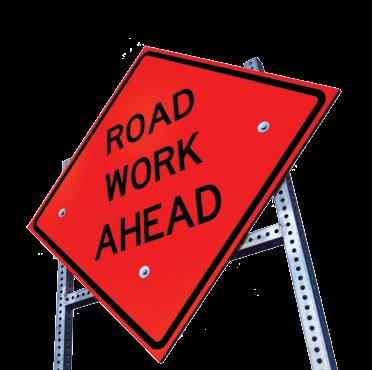
12 IMIESA October 2019 INFRASTRUCTURE NEWS FROM AROUND THE CONTINENT
350 km2
Once complete, Pwalugu Dam will have a maximum reservoir area of 350 km2
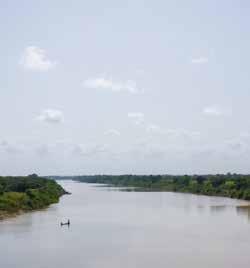
GHAnA
Green light for Pwalugu Dam
Construction works on Ghana’s multipurpose dam at Pwalugu are set to begin in November this year.
The construction of the dam has become crucial as a result of annual floods and deaths in the areas within the flow-way of the Bagre Dam from upstream Burkina Faso. According to officials of the Upper East Region, 7 488.94 ha of farms were destroyed by floods as livestock were carried away in the waters in 2018.
Sensitisation and evacuation plans have already begun in the Pwalugu flood area, following plans by the Burkinabe authorities to open the dam in a few days.
The dam will supply water to communities in the catchment area and comes with a 25 000 ha irrigation scheme expected to increase food production. The project will also include a solar component to balance hydroelectricity with solar power to enhance the reliability of power supply.
Once complete, the multipurpose Pwalugu Dam will have an elevation of 165 m, near the Pwalugu Bridge on the White Volta River, and a maximum reservoir area of 350 km2. The project will also have a powerhouse consisting of two turbines with 60 MW of installed capacity and 16.5 MW of firm continuous capacity, as well as 15 km of overhead lines.
Among other benefits, the dam will reduce the cost of power distribution to the northern regions of Ghana while improving industrialisation, modern commercial agriculture and value chain activities, as well as the general socioeconomic environment. The construction phase is also expected to create thousands of jobs.
mAlI
Rolling out rural renewable energy Mali has received an additional US$22.7 million (R339.2 million) in financing for the Mali Rural Electrification Hybrid System Project, which aims to improve access to modern services and promote the deployment of renewable energy in rural areas.

The overall project is expected to benefit approximately 760 000 people, including households, businesses and community service facilities that are connected to mini-grids. The grant will also support the installation of solar home systems in households not living within the vicinity of a mini-grid, the deployment of solar lanterns, and the delivery of communication and awareness-raising campaigns in targeted areas.
“By introducing lower-cost financing for renewable energy generation in rural areas, the project contributes to reducing the cost of providing affordable and reliable electricity services, facilitates the expansion of energy access, and strengthens Mali’s rural electrification business model,” said Charles Joseph Cormier, practice manager: Energy and Extractives Global, World Bank.
SEnEGAl
Supporting agriculture through water supply development
The government of Senegal has been granted a €87 million (R1.427 billion) loan by the African Development Bank (AfDB) to implement its Project to Improve the Water Supply for the Development of Value Chains (Provale-CV).
The project, which is valued at an estimated €122 million (R2 billion), aims to sustainably increase agricultural production, employment and incomes in rural areas through the use of surface and underground water. It comprises the management of 12 730 hectares,

760 000
The Mali Rural Electrification Hybrid System Project will benefit 760 000 people
including 7 950 hectares fed by retention dams, 3 980 recovered hectares, 800 hectares of boreholefed market gardens, production roadways, warehouses and pastoral infrastructure.
This project will have a direct impact on 38 000 households, or about 300 000 people. The actions planned for the project will help create 28 000 decent jobs, 30% of which will be for women and 40% for young people, together with an average increase in earnings from agricultural production of around €1 520 (R24 938) per beneficiary.
Developed with the support of the AfDB, Provale-CV is the first project under Senegal’s small-scale Local Irrigation National Development Programme. It operates in three agro-ecological areas in the country – Les Niayes, the Groundnut Basin and Casamance – and covers eight administrative regions: Kaolack, Fatick, Kaffrine, Diourbel, Thiès, Ziguinchor, Sédhiou and Kolda.
IMIESA October 2019 13
Always staying ahead

The days of consulting engineering firms simply offering a design and construction management service are rapidly being replaced by the demand for a new, multifaceted skill set that embraces technology and the community. Dinesh Chaithoo, managing director of Chaithoo, shares his perspective.

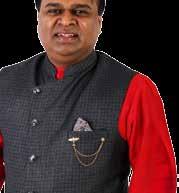
Founded in 2013, Chaithoo is a visionary consulting engineering, project management and transactional advisory leader committed to bridging the skills and infrastructure gaps faced in South Africa and Africa. This vision is based on years of experience, which have proven what works best in theory and in practice.
In refining its capabilities, Chaithoo has supported this approach by recently attaining ISO 9001:2015 accreditation. That ensures that every process implemented by the company has a systematic and verified execution model.
The company is focused on local and international expansion. Within South Africa, projects include design services for road and bridge infrastructure, combined with asset management condition assessments, geotechnical studies, bankable feasibility analysis for public-private partnership initiatives, forensic infrastructure reports, and renewable energy proposals.
KEy SErvIcES
- Consulting engineering
- Project management
- Transaction advisory services
- Training and development
Recent local project examples include the design and construction of a new Gauteng river bridge and the demolition of the old one at an approximate value of R30 million. The existing low-level river bridge was under-designed in terms of its hydraulic capacity, resulting in overtopping during flood conditions.
Also in 2019, Chaithoo concluded a comprehensive asset management and bridge condition assessment for the City of Ekurhuleni. A total of 171 bridges were assessed, with an in-house geographic information management system developed for this purpose.
Past work within this metro includes assisting project owners for the Ekurhuleni Gravel Roads project, where roads were upgraded in areas such as Etwana, Leachville, Daveyton and Watville.
“Providing accurate reports on ageing transportation infrastructure is vital in terms of assessing future capex budgets for new construction and maintenance. It’s also a major safety consideration,” Dinesh
explains. “These are all areas where we have extensive experience.”
Demonstrating its project flexibility, Chaithoo also works extensively in the property development sector. Past examples include the City of Tshwane’s 400 unit Akasia Place social housing development.
Cross-border market
Cross border, one of Chaithoo’s major strategic moves has been its registration of a company in Cameroon. Key developments to date have focused on providing transactional advisory services for government departments in the country. This includes the groundwork for the country’s hosting of the Africa Cup of Nations in February 2020.
In Botswana, Chaithoo also provided the transactional advisory services for the Botswana Green Housing Solution initiative, which is investigating the widespread adoption of rooftop solar power. “Across Africa, renewables and cogeneration are the future, and in both respects there are abundant resources,” he asserts.
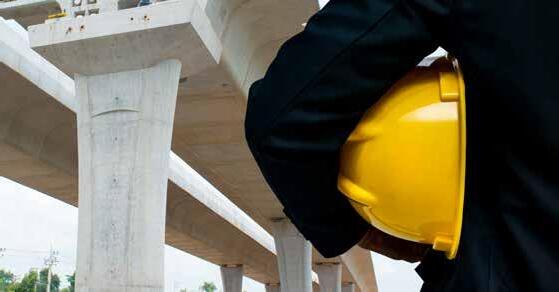
Another African market with great potential is Mozambique, where Dinesh sees growth in the transportation, mining and allied industrial sectors.
“The cyclone events that swept through Mozambique
I ND u STR y INSIGHT
Dinesh Chaithoo, managing director of Chaithoo



earlier in 2019 caused extensive damage to homes and infrastructure,” he says. “In a number of cases, the impact of the storm and ensuing floods was more severe than necessary due to the fact that formal infrastructure was absent. This presents major opportunities to design and construct a range of new services that will add value to their local economy, particularly in the roads and bridges segment.”
Performance-based road contracts
A number of these projects will be backed by institutional funding from donor countries, as well as World Bank loans. This has a bearing on which forms of contract are chosen for tender awards. For example, output and performance-based road contract (OPRC) procurement documentation is the preferred route chosen by international agencies.
Dinesh has gained extensive experience with OPRCs while working for a leading multinational consulting firm prior to forming Chaithoo, which included working in Mozambique. Chaithoo is currently in discussions with Mozambique’s roads agency (Administração Nacional de Estradas) to offer transactional advisory services on a range of projects.
“Key OPRC benefits include an emphasis on long-term maintenance and life-cycle road optimisation, with contract obligations ranging up to 10 years,” he explains. “In the right hands, that ensures the best measurable return on investment for public and institutional investors, since contractors and consultants are paid on a performance outcome basis. For this reason, the introduction of OPRCs in South Africa would also make commercial sense.”
Another concept being advocated by Chaithoo is the wider implementation of context-sensitive
design (CSD) transportation methodologies in line with global best practice. CSD encourages full private and public participation, while taking into account environmental, community, historical landmark and socio-economic factors when building or upgrading future road corridors.
In May 2019, Chaithoo was appointed as one of uPhongolo Local Municipality’s panel of planning consultants for a three-year period. The end goal is to assess the current economy in the town of Pongola and make recommendations for its revitalisation as a Northern KwaZulu-Natal economic hub. “Taking a CSD approach will yield the best results,” Dinesh insists.
From a purely stormwater and roads perspective, Chaithoo was also recently appointed to the Kgatelopele Local Municipality’s consulting panel for the period July 2019 to June 2022. In Setswana, ‘kgatelopele’ means progress, and this Northern Cape district recognises the need for advanced infrastructure to make this happen.
Alongside its other specialisations, Chaithoo has identified the geotechnical sector as a key growth market, for both green- and brownfield expansions. Recent projects include foundation investigations for 14 existing private hospitals in KwaZulu-Natal as part of future on-site expansion plans.
Mathematics as a change agent
Chaithoo’s technical ability is well-proven, but what makes the company especially unique is its commitment to building future skills capacity in the broader construction sector. And that has an immediate and more forwardthinking strategy.
AWArDS
- Acquisition International | Leading Advisor Awards 2018
- Advisory Excellence 2019 Winner
- ACQ5 Global Awards 2019:
• South Africa: “Consultancy of the Year (Infrastructure Asset Management)”
• South Africa: “Game changer of the Year (Engineering/Consulting)”
- Global Law Experts 2019 Winner
Africa.” Dinesh is also a member of AMESA (Association for Mathematics Education of South Africa).
He takes this a step further by actively leading in formal academic engineering education. Dinesh is a lecturer on two key courses in civil engineering at the University of South Africa’s Civil Engineering Department, teaching Geometric Design IV and Foundation Engineering IV. He is also the author of the revised Foundation Engineering IV course.
“Engineers cannot work in isolation. They need to share and communicate their purpose and how it’s achieved. That builds trust and commitment, which is essential when it comes to meaningful service delivery,” Dinesh explains.
“If we want to truly empower individuals and communities, and effect real transformation, mathematics is the critical route for careers in construction and most other industries,” says Chaithoo, who is currently working on a book that demonstrates how students can more simply master complex mental arithmetic calculations.
“Without a solid and practical understanding of mathematics, that will present critical barriers to the essential pipeline of engineers, technologists and engineers needed to build public and private sector capacity,” he continues. “However, if young people embrace and become excited about the subject, there will be a direct and lasting benefit for our economy.”
Chaithoo was a proud sponsor for the 2019 Mathematics Olympiads for the Department of Education – Sedibeng East District, Gauteng.
Initiatives include the introduction of Chaithoo’s Maths+ Division, which provides an alternative approach to mathematics education at primary and secondary level. Dinesh is a registered member of Coaches and Mentors of South Africa (Comensa). As defined by its website, “Comensa’s core purpose is to empower coaches and mentors to make a positive contribution to the people of South www.chaithoo.com

Industry I ns IGH t IMIESA October 2019 15

Start with the
best lifetime option
Concrete roads invariably turn out to be the best economic and community option when thorough life-cycle cost analysis (LCCA) calculations are done to decide between concrete or alternative materials for pavements, says Bryan Perrie, managing director of The Concrete Institute.
All roads authorities and municipalities want to invest in sustainable structures that require only minimal maintenance and offer a high level of serviceability over the longest possible time. The technical considerations may be decisive when choosing a particular pavement structure, but the choice often depends on economic considerations such as:
• expenditure associated with the construction of the infrastructure or the capital cost
• budget for subsequent maintenance, preservation and rehabilitation
• economic repercussions of a lack of maintenance, preservation and rehabilitation operations
• economic impact of delays suffered by people and businesses because of traffic jams caused by road works, and reduced availability of infrastructure.
“The initial investment cost is often and misguidedly used as a primary economic criterion, but this approach can be wrong purely in economic terms if the costs of maintaining the new structure are excessive,” explains Perrie.
“The useful lifetime of a pavement clearly plays an important role and there are mathematical and probabilistic models that can be used to arrive at long-term decisions of this kind in the context of short-term budgetary restrictions,” he states.
Perrie says an LCCA can help to assess the long-term return of various alternative investment options. In its most


ABOVE Bryan Perrie, managing director, The Concrete Institute
LEFT A concrete road under construction
comprehensive form, the LCCA takes account of the costs to both the road owner/manager and road user, and all other relevant costs throughout a pavement’s lifetime for various types of pavement. In this way, utility owners can arrive at an option with lowest long-term cost, but still with the desired performance.
Key considerations
To assess the whole-life costs, the following aspects need to be considered:
• Pavement construction costs: These should include all costs, including agency costs, in administering the project, consultants’ fees for design and supervision, and the contractor’s total costs, including preliminary and general expenditure, and overheads.
• Pavement maintenance costs: These should include all costs as detailed above for annual routine maintenance, periodic treatment, such as joint resealing and overlaying during the analysis period – and it should be total costs and not only unit rates.
• Residual value of the pavement: This will depend on continued use of the alignment, anticipated condition at the end of the analysis period, feasibility of upgrading or strengthening, or the need to remove the pavement before reconstruction. One approach is to value the contribution the pavement would make at the end of the analysis period to the next life cycle of the pavement.
16 IMIESA October 2019
r oads & Br I d G es


TOP Concrete works in progress
ABOVE Deciding on the optimal road pavement design starts with a life-cycle cost analysis
• vehicle operating costs and normal travel time costs: These costs tend to increase as pavement condition deteriorates prior to major rehabilitation. The rate of increase will be different for varied pavement types and strategies.
• Road-user delay costs: These are due to the unavailability of the pavement.
• Pavement construction delay costs: If a pavement is to be placed on an existing
operational road alignment, there is usually some traffic disruption. If the pavement type chosen will affect the duration of the work, the increase in vehicle operating and travel time costs for each alternative should be estimated
• Pavement maintenance delay costs: With pavement alternatives that require frequent major maintenance, the road user costs associated with this work may be significant.
• Accident costs: These should only be considered when different pavement types and maintenance strategies may result in pavement deficiencies causing accidents.
Perrie says a sensitivity analysis should be done using different analysis periods and real discount rates reflecting the actual cost of expenditure.
PWOC case study
“The effect of using inaccurate maintenance costs in an LCCA has already been shown in South Africa. For a rehabilitation contract on the N3 outside Pietermaritzburg, an analysis of concrete and asphalt alternatives using the present worth of cost (PWOC) was carried out in 1984,” he explains.
“The initial costs were based on the average of the three lowest tenders and certain maintenance strategies were assumed. In this analysis, concrete was 18% more expensive than asphalt, but the decision was still made to use concrete for the highway construction.
“In 1998, the actual maintenance costs occurred on the highway over 15 years were used to recalculate the PWOC arrived at in 1984. The results showed that concrete was then only 1.3% more expensive. This shows the importance of accurate maintenance data when using LCCA to assess various options for pavements,” Perrie adds.
“Often only the construction and maintenance costs – and perhaps the costs of demolition and reconstruction –are considered for such assessments,” he concludes.
IMIESA October 2019 17
r oads & Br I d G es

























































FORWARD-THINKING ROAD INNOVATION
Your Complete Pavement Management Solution
Breaking boundaries and setting new standards in industry, ARRB Systems is a global leader in road assessment survey equipment and services.
Delivering value across the pavement lifecycle, we design modular systems that enable multiple data collection sensors to meet and exceed the toughest pavement and asset management specifications.
Our team of international engineers, marketing and software development specialists collaborate
to provide practical, data-driven solutions that maximise road and pavement performance and minimise lifecycle cost.
We are committed to providing the best pavement testing equipment and support while continually advancing the state-of-the-art pavement technology like the introduction of our ‘intelligent Pavement Assessment Vehicle’ (iPAVe), designed for sheer efficiency, speed and functionality.
For future-driven and cost-effective road assessment survey equipment and management solutions, look no further than ARRB Systems































































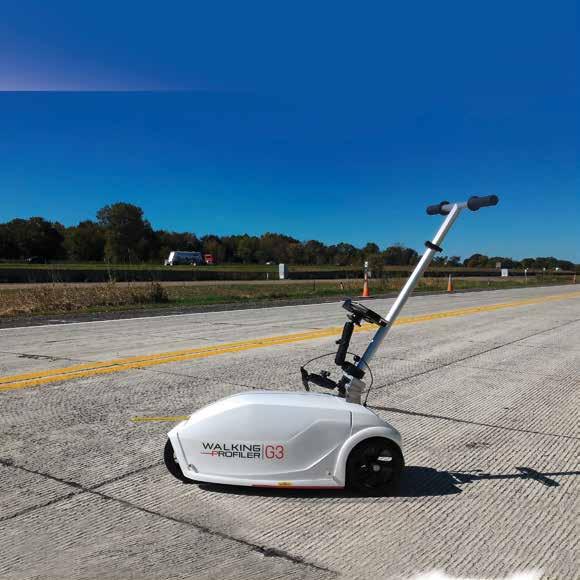
Suite 1, Park 2000, 10 Kyalami Road, Westmead, Durban, 3610, South Africa Tel: +27 31 700 2500, Fax: +27 31 700 2550, www.arrbsystemssa.co.za
embracing the future today
VNA Consulting, a Durban-based and 100%-empowered company, recently acquired a major Australian enterprise and is investing extensively in sophisticated, state-of-the-art pavement strength-testing and road surveying equipment in a drive to remain ahead of the Fourth Industrial Revolution development curve.
The Fourth Industrial Revolution brings global high-speed and fundamental technological change in the way people live and work, unlocking the ability of leaders and business to harness convergent technologies, giving effect to a future that is both inclusive and human-centred. The road survey equipment field is no exception to such change and, with rapidly increasing traffic volumes on South African roads, government, municipalities and traffic authorities need the means for ever more effective asset management in order to keep this country’s wheels turning.
Recognising new technological opportunities, VNA Consulting went on the offensive through the acquisition of the equipment assembly and software business of the Australian Road Research Board (ARRB). The move led to the establishment of Automated Road Rehabilitation

Business Systems South Africa (ARRB SA), positioning the new enterprise as a leading road asset management service provider in South Africa, the SADC region and across the globe.
Vikash Narsai, chairman of ARRB Systems SA, says, “The digital age is well and truly here and it affects every sector of the economy. We acknowledge that technology is the future and we have today embraced that future – a future driven by speedy, technological breakthroughs and the immense impact new systems have on countries, cities and societies across the world.”
ARRB Systems SA has access to such internationally acclaimed and technologically advanced equipment as the Intelligent Pavement Assessment Vehicle (iPAVe), Intelligent Surface Assessment Vehicle (iSAVe), Digital Laser Profiler, GipsiTrac Geometry, Hawkeye Onlooker Live and
Hawkeye Processing Toolkit series, as well as the Walking Profiler G3, Roughometer III and IV, and Hawkeye Insight apparatus.
“Through our equipment, we can offer clients the benefits of highly sophisticated and advanced technology, coupled with highly qualified staff, hugely experienced in pavement data collection,” he adds.
Narsai concludes: “We are poised now to grow ARRB SA’s footprint across the country, Africa and the developing world, providing roads authorities and pavement engineers with exceptional data and scalable solutions, from which to make informed decisions about road infrastructure maintenance.
With its equipment already used globally to measure the quality of road networks, the company continuously strives to exceed international market standards, while applying the latest product technology trends to meet user requirements.

IMIESA October 2019 19 R O a DS & B RIDGES

The South African Road Federation, together with partners 3M South Africa and Mogale City, is implementing a programme to prioritise road safety at schools in Mogale City. SARF recently facilitated the launch of a Junior Traffic Training Centre.
Mogale City Junior Traffic Training Centre gets a revamp

SpONSOrS OF ThE MOgAlE cITy JTTc







20 IMIESA October 2019
Mogale City Junior Traffic Training Centre before and after
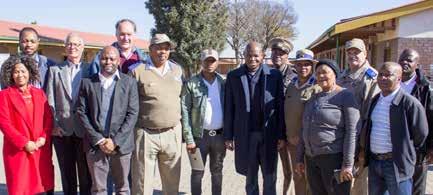
Nelson Mandela once noted that “safety and security don’t just happen. They are the result of collective consensus and public investment. We owe our children, the most vulnerable citizens in our society, a life free of violence and fear.”
The South African Road Federation (SARF) has partnered with Mogale City Municipality and 3M South Africa in the Mogale City Child Road Safety Challenge in order to prioritise road safety at schools in the city. The project is funded by the Swiss Fondation Botnar as part of its Botnar Child Road Safety Challenge, which seeks to address locally relevant road safety problems with practical, innovative and evidence-based interventions.
Revitalising the Junior Traffic Training Centre
During discussions with Mogale City’s Department of Public Safety, it was discovered that the municipality had an old Junior Traffic Training Centre (JTTC) that had not been used for many years.
In a state of disrepair and not funded by the Botnar Child Road Safety Challenge project, funding was needed to revitalise the JTTC. Basil Jonsson, operations director, SARF, together with Garth Strong from DeltaBloc SA and Garry Savill from SARTSMA
rallied support from the SARF Northern Region members.
George Tekane from the Mogale City Traffic and Security Department approached Mogale City Parks Department to cut the tall grass and remove 22 large tree stumps on the JTTC premises. The municipality also repaired a water seepage problem on the Coronation Street side of the centre.
Much Asphalt supplied the hot-mix asphalt and appointed a subcontractor to repair and repave all the roads at the JTTC, as well as place kerbs around all the roads.
Savill, through SARTSMA members, manufactured and supplied all the traffic signs and special plastic poles, which were erected by the Mogale City Traffic Department teams who also painted all the road markings with road-marking paint supplied by SARF.
Mentis supplied fencing, which was erected by DeltaBloc. The new fence keeps cows and sheep from the nearby farm animal centre out of the JTTC, where they were previously grazing and messing on the JTTC roads.
SARF also supplied paint to repaint the JTTC training venue and palisade fence, and donated 16 wire cars. A further 16 wire cars were donated by Aurecon. Children attending road safety best practice training at the centre will use these cars are part of the learning process.
The Mogale City mayor together with local ward councillors and representatives from Mogale City’s engineering and traffic departments, 3M South Africa and SARF at Tsholetsega Public School
“Road safety in South Africa is a critical problem and a large percentage of fatal crashes include pedestrians that are children. Children have different mental and physical characteristics that limit their ability to handle complex traffic situations. We need to educate children –learners in schools – about road safety. Too many of our JTTCs in South Africa are now derelict and unusable,” says Saied Solomons, president, SARF.
“We would like to thank all of our members who contributed to the Mogale City JTTC and, ultimately, to child safety in the city. Without them, we could not have made this a reality,” adds Jonsson.
Once officially launched by the Mogale City Mayor Naga Patrick Lipudi, the JTTC will provide small-scale simulated road environments where Mogale City traffic officers can teach primary school learners good road safety habits.

A new reflective yellow/green ‘School Zone’ sign is being piloted in Mogale City with permission from the RTMC
The Tsholetsega Public School was the first school to receive road safety upgrades as part of the Mogale City Child Road Safety Challenge. SARF, Mogale City and 3M conducted infrastructure upgrades around the school, including the construction of raised pedestrian crossings, repainting all the road markings and putting up new traffic signs.
Notably, the team received permission from the Road Traffic Management Corporation (RTMC) to use a new reflective yellow/green ‘School Zone’ sign. This is part of a pilot project that the RTMC will monitor in Mogale City.
A new gate will also be installed at the school to create a safe zone for parents to drop off their children away from the main road.

New raised pedestrian crossing at Tsholetsega Public School






IMIESA October 2019 21
MOgAlE cITy chIlD rOAD SAFETy chAllENgE
R O a DS & B RIDGES
Plastic paves the path to new roads

In only the second trial ever of recycled plastic asphalt paving to be conducted in South Africa, Shisalanga Construction showed yet again why it is the leading asphalt paving company in the country.


r oads & Br I d G es 22 IMIESA October 2019

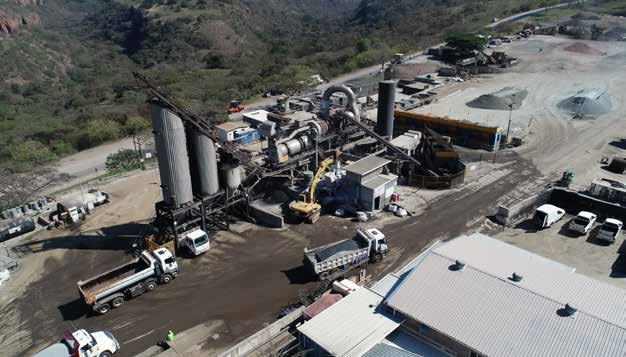

Tuesday 10 September 2019
saw the gathering of officials and representatives from all major roads authorities in KwaZulu-Natal, as well as from national agencies, to witness a global technology in action. This follows the first road surface trial using this phenomenal plastic paving technology at Shisalanga’s Cliffdale depot in KwaZulu-Natal,
By adding recycled plastic generated in South Africa, not only does Shisalanga contribute to reducing a serious waste concern, but its improvement on an international formula achieves at least 6% recycled plastic material content. Recycled plastic has long been used in some international countries, but only recently has Shisalanga Construction introduced this technology into the country. With the globe suffering from environmental fatigue due to so many different influencing
factors, it is an outstanding achievement by a South African company using local raw material and specifically local recycled plastic to find a way to improve the road surface conditions in our country. A further plus is the use of recycled plastic waste material.
“Our aim is to continue perfecting this technique,” explains managing director Deane Koekemoer. “We have already advanced on international technology in that we have applied a considerably higher percentage of HDPE recycled plastic in our formula – in fact, almost double what some international companies have achieved.
“We see this as the first step of many to supporting our roads agencies to not only continue maintaining our road infrastructure, but to do so in a way that we consider what impact we can have on the environment,” he continues.
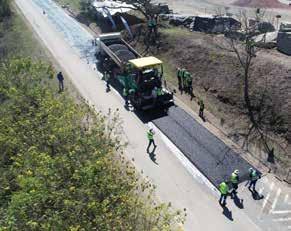
“We won’t stop at this point. We have other plans afoot to take this technology and incorporate it into potential community projects, which we trust will not only create employment, but will also improve community road quality,” says Koekemoer.
An expanding footprint
Shisalanga Construction, a subsidiary of Raubex Ltd, operates in KwaZulu-Natal and the Eastern Cape, but has plans to grow a broader footprint.
“Our technology is transportable and the formula can be easily reproduced in other provinces in South Africa,” says Wynand Nortje, technical manager, Shisalanga Construction. “We have plans to start the process in other regions in the country once we are satisfied that the process is well received and offers what we promise. We are working with the roads agencies at
IMIESA October 2019 23
R O a DS & B RIDGES
AbOUT ShISAlANgA



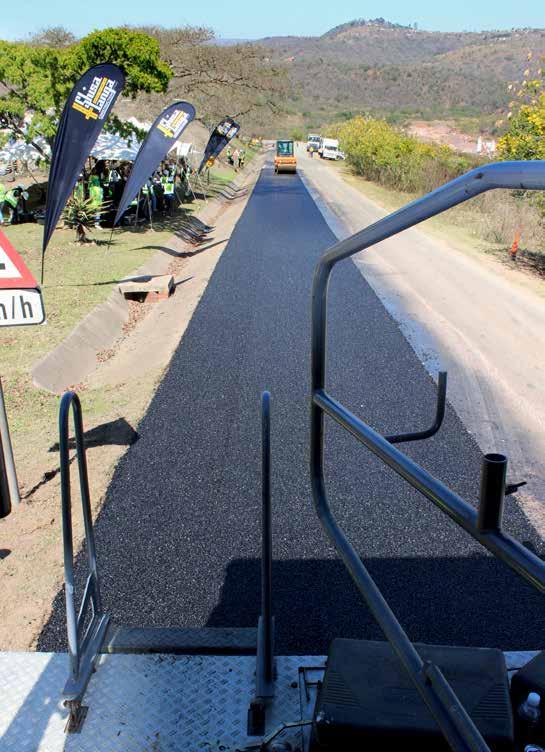
Established in 1998, Shisalanga has grown from strength to strength in the road construction industry and now not only manufactures and paves hot mix asphalt, but manufactures highquality cold mix asphalt and provides specialist solutions in lay surface and slurry seals, crack sealing, deep and shallow milling, in situ stabilising and hydrocutting surface treatment. Shisalanga has become a leader in new innovations, leading the way with products such as steel slag manufactured asphalt, also a first in South Africa. This product is the preferred aggregate used for asphalt manufacture on the busiest highway in South Africa, the National Route 3 (N3). www.shisalanga.com
We are working with the roads agencies at various levels and see this plastic paving technology as being a new dimension in our industry.”
various levels and see this plastic paving technology as being a new dimension in our industry.”
Comment from roads agency authorities is that they are very pleased with the technology and the advancement made in a direction that lends itself to including the use of waste materials.
Industry feedback
Kit Ducasse from the KwaZulu-Natal Department of Transport says: “The recycled plastic road trials being conducted are significant – if we can help the environment, it is better for us and future generations. Shisalanga is an innovative company and innovation that works is great. More tests will be conducted over time and once the technology has been proven, then it will be used. What I’ve seen to date is great.”
Shisalanga Construction will continue to trial and roll out this technology and associated projects incorporating this new intellectual property, along with the sound conventional products that have made the company such an incredible household brand in the South African road surfacing industry.

r oads & Br I d G es

Sabita listing
Mr F Kemp Actop Asphalt (Pty) Ltd
Mr J Pelser Actophambili Roads (Pty) Ltd
Mr D Agenbag Advanced Polymers (Pty) Ltd
Mr JJS Weidemann AECOM SA (Pty) Ltd
Ms AJ Broom AJ Broom Road Products cc
Mr R Lehman Ammann Construction Machinery SA
Ms J Browne Anton Paar Southern Africa
Mr C Burns Aqua Transport & Plant Hire (Pty) Ltd
Mr N Pienaar Aspasa/Sarma
Mr P Grindley Astec Technologies (Pty) Ltd
Ms L Mthethwa Astron Energy
Mr JG Robertson Aurecon SA (Pty) Ltd
Box 16661
Box 16661
Box 3173
Box 16421
253, Private Bag X43
Box 50471
Bag X11
Boksburg 1465
Benoni 1500
1683
Mr W Nelson BituGuard SA Cambridge Street 32 Bethlehem 9701
Mr AL Botha Bitumen Supplies & Services (Pty) Ltd
Box 1028 Sunninghill 2157
Mr D Smith Bitumen World (Pvt) Ltd PO Box AY 20 Amby, Harare
Mr W van Niekerk BSM Laboratories (Pty) Ltd
Mr A Greyling BVi Consulting Eng. Wc (Pty) Ltd
Mr A Hill Cape Laboratory Equipment
Mr P Neal Cape Peninsula Univ of Technology
Mr B Ballantyne CIM Chemicals (Pty) Ltd
Mr H Groenewald Colas South Africa (Pty) Ltd
Mr
Mr
Mr WAG Venter DMV Harrismith (Pty) Ltd
Mr R Ntombela Dow Southern Africa (Pty) Ltd
Mr M Lehoko Dubang Roads & Environmental Solutions
Mr TW McKune Durban University of Technology
Mr TD La Grange EFG Engineers (Pty) Ltd
Mr G Brown Gavin Brown & Associates
Mr AJ Moffett GIBB (Pty) Ltd
Mr B Cilliers GladAfrica Consulting Eng. (Pty) Ltd
Mr GM Hattingh GMH/Tswelelo Consulting Engineers

Box 782
Box 101112 Pietermaritzburg 3209
Box 3800
Botanic Grove
Box 3965
Box 2201
Mr L Moshoane Green Asphalt (Pty) Ltd Stand 541, Road D1660, Cyferskuil Moreleta Dist NW 0483
Mr B Henning GT Designs & Technologies (Pty) Ltd Unit 6 Sugarbush Plce, 10 Sugarbush Cres Pinetown 3608
Mr C Bradley Hatch Africa (Pty) Ltd
Mr AJ Laatz HHO Africa
Mr G Clunnie I MESA
Mr M Bechan Impact Chemicals (Pty) Ltd
Ms N Mzinyane
Mr
Mr
Mr
Mr PA Olivier JG Afrika (Pty) Ltd
Mr
Mr
Mr
Mr MC Barnard Leo Consulting (Pty) Ltd
Mr MA Van Reenen Letaba Laboratory (Pty) Ltd
Mr N Berning Liesen Bitumen (Pty) Ltd
Mr
Box 25401 Gateway, Durban 4321
Box 6503
Box 2190
Box 30792 Kyalami 1684
R O a DS & B RIDGES IMIESA October 2019 25 Title Initials Last Name Company Postal Address City Postal Code
PO
Atlasville,
Boksburg 1465
PO
Atlasville,
PO
Gallo Manor
Box 742
2052
PO
Pretoria 0001
PO
Dowerglen
1612
Suite
Rynfield,
PO
Randjiesfontein
Private
Ashwood
3605
PO Box
Ruimsig 1732
1983
P O Box
Rothdene 1964
140
5 Century Boulevard Century City 7441
PO
Cape
8000
Box 494
Town
PO
PO
Westmead 3608
Box 15318
PO Box,
Century City 7446
86
PO
Big Bay 7448
Box 20244
ABC Building,
Floor, Symphony Way Bellville 7530
1st
Postnet
Gallo
Suite 479 P/Bag X29
Manor 2052
PO
1740
Box 1007 Krugersdorp
PO Box 585 Bedfordview 2008
B Theron Concor Infrastructure
King Lab Supplies
PO Box 82138 Southdale 2135
RC King Dick
(Pty) Ltd
PO
Harrismith
Box 912
9880
PO
Halfway
Box 3332
House 1635
PO
Melrose
Arch 2076
PO
PO
Durbanville
7551
24
Berea
4001
PO
Cape
Town 8000
PO
Cape Town 8000
boX 3893
PO
Randburg
2125
PO
PO
Roggebaai
8012
PO
Westville
3630
PO
Industrial Oleochemical Products
PO Box 12080 Jacobs, Durban 4026
(Pty) Ltd
Instant Tar Surfaces PO Box 17219 Norkem Park 1631
S Tinarwo
PO Box 398 Bellville 7535
R Burger iX engineers (Pty) Ltd
PO Box
Malvern 4055
J Van Niekerk Javseal (Pty) Ltd
28041
PO Box
Sunninghill 2157
1109
PO Box
Cape Town 8000
GR Tyndall Kantey and Templer (Pty) Ltd
3132
PO Box 116 Pinetown 3600
P Pratt Kaymac (Pty) Ltd T/A Kaytech
PO Box
Durban North 4016
AD Wills Kraton Polymers Nederland Bv
201636
PO Box
Totiusdal 0135
32798
PO
White River 1240
Box 739
Postnet Suite 228,
X9063 East London 5200
P/Bag
Business Enterprises PO Box 380 Steelpoort 1153
V Makabate Mafate

Mr D Moodley Masana Petroleum Solutions (Pty) Ltd
Mr SRM Adande Mdubane Energy Services (Pty) Ltd 214 9th Avenue
Mr W Reusch Milling Techniks (Pty) Ltd
Mr B Burger Mmila Civils & Traffic Services (Pty) Ltd
Mr O Peringuey More Asphalt (Pty) Ltd
Mr JR Uys Mott MacDonald Africa (Pty) Ltd
Mr BC Greyling Much Asphalt (Pty) Ltd
Mr DS Judd N3 Toll Concession (Pty) Ltd
Mr F Samaai Nadeson Consulting Services
Mr M Manicum Naidu Consulting (Pty) Ltd
Mr J Strydom Namibia Technical Services cc
40158
Box 49 Eersterivier 7103
Park 0169
2796
Box 30623, Pioneers Park Windhoek
Mr N Nathoo Nathoo Mbenyane Engineers PO Box 47595 Greyville 4023
Mr D Bennett National Asphalt (Pty) Ltd
Mrs B van der Wat Nelson Mandela University
Mr L Heathcote Outeniqua Lab (Pty) Ltd
Mr T Freestone Polokwane Surfacing (Pty) Ltd
Mr N Burger Power Construction (Pty) Ltd
6536
0704
Box 129 Blackheath 7581
Mr W Venter Pride Lab Equipment (Pty) Ltd 3 Van Eyck Crescent
Mr P Chirnside Puma Energy SA (Pty) Ltd
Mr J Nicholson Raetex Industries 1550 Tiburon Boulevard, Suite B1
Mr L Cochrane Rand Roads (a div of Grinaker-Lta) Ltd Cnr Jurgens Street & Jet Park Road Jet Park, Boksburg 1459
Ms S Rattray Rankin Engineering Consultants PO Box 50566 Lusaka, Zambia
Mr J Louw Raubex (Pty) Ltd PO Box 3722 Bloemfontein 9300
Mr G Catin Raubex KZN (Pty) Ltd PO Box 10302 Ashwood 3605
Mr T Saks Reliance Laboratory Equipment (Pty) Ltd PO Box 911-489 Rosslyn 0200
Mr D Weldrick Rettenmaier South Africa (Pty) Ltd Bldg 4, Quodrum Office Park Johannesburg
Mr G Joffe Road Material Stabilisers (Pty) Ltd PO Box 84513 Greenside 2034
Mr T Thothela Royal Mndawe Holdings (T/A ROMH Consulting) Whitby Manor Office Prk, 14th Rd Noordwyk, Midrand 1687
Mr PB Joubert Royal HaskoningDHV (Pty) Ltd PO Box 867 Gallo Manor 2146
Mr JB Lansdell Salphalt (Pty) Ltd PO Box 234
Mr BI Jonsson SARF PO Box 8379

1621
Mr A Marais Sasol Chemicals (a div of Sasol SA Ltd) Sasol Place 6th Floor 50 Katherine Str Sandton 2000
Mr S Shabalala Sasol Energy (a div of Sasol SA Ltd)
Mr RL Hornsey Shell Downstream SA (Pty) Ltd
Mr WRJ Nortje Shisalanga Construction (Pty) Ltd
Mr C Botha SMEC South Africa (Pty) Ltd
Ms K Makamu Specialised Road Technolgies (Pty) Ltd
Mr E Jansen van Vuuren Spraypave (Pty) Ltd
Mr MP Prinsloo Tau Pele Construction (Pty) Ltd
Mr L Qhobela Tekfalt Binders (Pty) Ltd
5486
15324
531
Mr D Pagel Tosas (Pty) Ltd PO Box 14159
Mr V Nel Total SA (Pty) Ltd
Mr RB Purchase T PA Consulting (Pty) Ltd PO Box 1575
Prof GJ Jordaan Tshepega Engineering (Pty) Ltd PO Box 33783
Pinetown 3608
0009
9302
2021
1422
2132
Mr V Mabunda Tzaneen Asphalt & Paving Manufacturers Site 800 Nkowankowa Industrial Nkowankowa 0870
Prof WJVDM Steyn University of Pretora, Dept Civil Eng Lynnwood Road, Hatfield 0002
Prof KJ Jenkins University of Stellenbosch Private Bag X1 Matieland 7602
Ms R Ganga Worldwide Tanks On Hire cc PO Box 2250
Mr M Muthen WSP Group Africa (Pty) Ltd PO Box 98867
Mr JM Pearce Zebra Surfacing (Pty) Ltd PO Box 14335
Mr S Gama Zimile Consulting Engineers (Pty) Ltd Postnet Suite 252, P/Bag X11 Halfway House 1685
Mr P Sreedhar Zydex Industries Pvt Ltd G1 Gotri Sevsai Rd, Sevasi Vadudara Gujarat 39021
R O a DS & B RIDGES 26 IMIESA October 2019
PO
Saxonwold
Box 1085
2132
Morningside, Durban 4001
PO
Box 779 Gillits 3603
PO Box
Faerie Glen 0043
PO
Durbanville
Box 2180
7550
PO Box 7786 Roggebaai 8012
PO
PO
Highveld
Box 67166
PO Box
V
A Waterfront
51121
&
8002
PO Box
Westway Office
Park 3635
PO
PO
Box 247 Bon Accord 0009
Dept Civil Eng. Block
Summerstrand Campus
C, Room C210
6001
PO Box 3186 George Industria
PO Box 288 Ladanna
PO
De La Haye Bellville 7530
Alice Lane, 3rd Floor Sandton
15
2196
Tiburon, Ca 94920
Isando
1600
Birchleigh
PO Box
Johannesburg
2000
27 Canterbury Village, 3 Blessing Ninela Hillcrest
3610
Hillcrest
PO Box 1657
3650
Lynnwood
PO Box 72927
Ridge 0040
Westmead,
PO Box
PO
Alberton
Box 674
PO
Noordstad
Box 13125
Bergvlei
PO Box
Wadeville
Rosebank
3 Biermann Ave
Westville
3630
Glenstantia 0010
Durban 4000
Sloane Park 2152
Kenwyn 7790
Name
Postal Address City Postal Code
Title Initials Last
Company
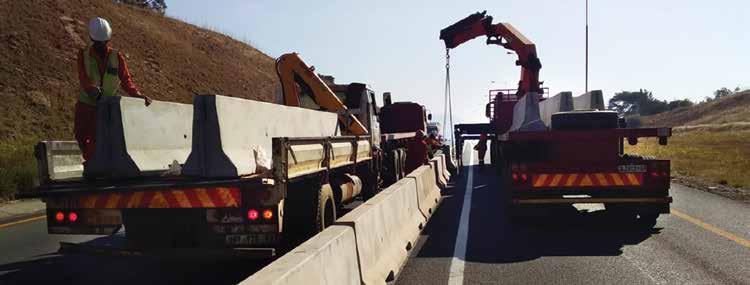
Bakwena Platinum Corridor Concessionaire is a caring and responsible road authority that finances, builds, operates and maintains sustainable and safe road infrastructure.

Bakwena manages a 385 km N1-N4 network that serves a steadily rising volume of traffic. Monitoring vehicle patterns and ensuring that the optimal accident prevention measures are in place are top priorities.
A recent example is Bakwena’s decision to install median concrete barriers on the N4 at Helen Joseph interchange in Rustenburg.
Solomon Kganyago, commercial manager, Bakwena, says the toll concessionaire had noted a significant increase in the number of crashes over this section due to motorists making illegal U-turns. An urgent intervention was required.
Together with the relevant authorities, Bakwena researched the best solution. A key consideration was that the traffic measures chosen would not create an additional hazard.
Investigations showed that concrete barriers were the fastest and most effective option.
To create space for the concrete medians, the existing shoulders were reduced from 2.5 m to 1.5 m. The installation was carried out by Basella Maintenance and took approximately three weeks. During this time, stop/go controls in both directions were in place to ensure the safety of motorists.
As an additional measure to protect vehicles, TAU Tube crash cushions have been installed at the end points of the concrete barriers. Supplied by Lindsay Africa, the TAU Tube system is designed to meet EN1317-3 50 km/h, 80 km/h, 100 km/h and 110 km/h test criteria in a 6 m footprint.
Engineering world- class routes
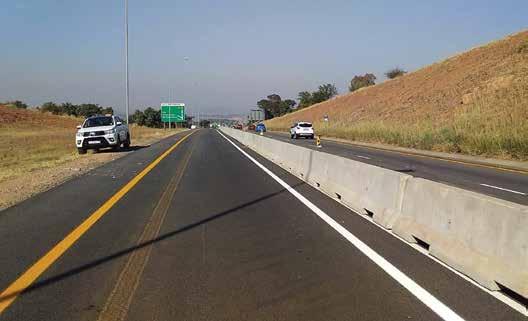
Previous enhancements to the Helen Joseph interchange have included:
• widening of the embankments at the northern and southern terminals to allow for the provision of two through lanes northbound and southbound on Helen Joseph Road itself
• the provision of a dedicated right-turn lane at the northern terminal
• the provision of a dedicated left-turn slip lane at the southern terminal
• the provision of traffic signals at the northern and southern terminal
• enforcement by traffic authorities to prosecute vehicles that ignored the road signage and markings prohibiting U-turns.
“We approach safety in two key ways: first, through engineering design and construction, and second, via safety awareness and simulated emergency incident training, working with local traffic authorities,” says Kganyago.
“It’s a continuous process as we find new ways to improve driver behaviour,” he concludes.


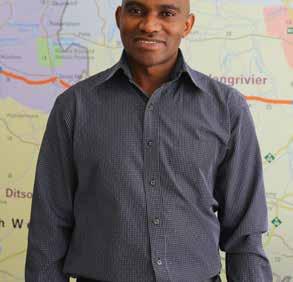

IMIESA October 2019 27
Concrete median barriers being positioned on the N4
No more U-turns: Bakwena is committed to ensuring that its network meets the best local and international safety standards
A TAU Tube crash cushion: these products are designed to shield concrete barriers, bridge piers and steel barriers
www.bakwena.co.za R O a DS & B RIDGES
Solomon Kganyago, commercial manager, Bakwena
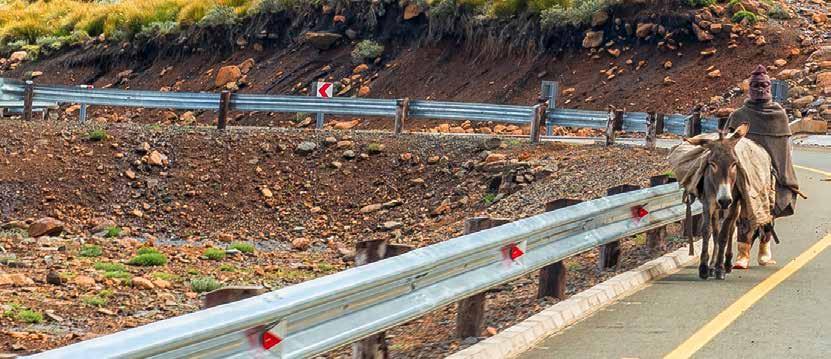
Setting the PG standard
Durability, riding performance and safety are key factors motivating the adoption of industryrecognised performance grade (PG) specifications for bitumen in South Africa.
The modern era of higher traffic volumes and loads demands an improvement in the durability of paved roads. Current empirical binder testing provides limited information on future pavement performance and, moreover, empirical tests cannot effectively characterise modified binders, which are being increasingly used throughout the world. This has resulted in a move internationally to establish specifications based on fundamental engineering properties capable of better
guidance in considering the performance requirements of asphalt mixes.
This evolution has not escaped South Africa: it started tackling a possible new specification way back in 2003, with the intent that PG should:
• include measures describing stress/strain relationships under field loading
• consider the pavement conditions: temperature, traffic speed, traffic volume and pavement structure
• include acceptance limits derived from experience and actual field performance.
TABLE 1 SA technical specification and report values
This initiative was given further impetus with the development of the South African Road Design System and the new Asphalt Mix Design Manual (Sabita Manual 35/TRH8), both calling for performance-tested characteristics.
Basis of the specification
Asphalt layers and spray seals in service are required to resist the following forms of distress:
• distortion – permanent deformation
• fracture due to:
G* and δ at TIT, Pa, degrees
G*/sinδ, at 10 rad/sec and Tmax , (kPa)
Viscosity @ 165°C, ≥30 s-1 , (Pa.s)
Compulsory report only during implementation phase
report only
Storage stability at 80°C (% diff, G*T and G*B) at Tmax 1 ≤ 15
Flash Point (˚C) ≥ 230
G* and δ at TIT , Pa, degrees
AFTER RTFO AGEING
Compulsory report only during implementation phase
Mass Change (m/m), (%) ≤ 1.0
JNR @ Tmax, (kPa-1)
Ageing Ratio, G*RTFOT/G*Original
G* and δ at TIT, Pa, degrees
AFTER RTFO AND PAV AGEING
Compulsory report only during implementation phase
Creep stiffness, S (60s) at Tmin + 10oC, MPa, ≤ 300 m (60s) at Tmin + 10oC, minimum, MPa/s ≥ 0.300 ΔTc =Tc S – Tc, m, (0C) ≥ – 5
Ageing Ratio, G*PAV/G*Original ≤ 6.0
Note: 1 While the binder is sampled at 80°C, G* is determined at Tmax
28 IMIESA October 2019
r oads & Br I d G es
PERFORMANCE GRADE 58S -22 58H -22 58V -22 58E -22 64S -16 64H -16 64V -16 64E -16 70S -10 70H -10 70V -10 70E -10 Maximum pavement design temperature, Tmax (˚C) 58 64 70 Minimum grading temperature, Tmin (˚C) -22 -16 -10 ORIGINAL BINDER
Test property
Compulsory
≤ 0.9
≤ 4.5 ≤ 2.0 ≤ 1.0 ≤ 0.5 ≤ 4.5 ≤ 2.0 ≤ 1.0 ≤ 0.5 ≤ 4.5 ≤ 2.0 ≤ 1.0 ≤ 0.5
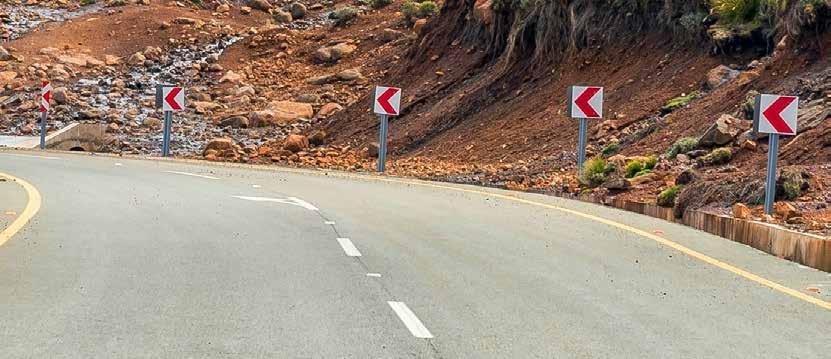
– fatigue or loss of durability
– temperature fluctuations.
In addition, they should be durable – i.e. maintain their properties to counter distress for a long period. As a result, the concept of damage-resistance characteristics developed in 2010 in the USA was introduced to provide a specification framework to gauge the binder’s resistance to damage resulting from:
• permanent deformation (viscous flow) – at elevated temperatures and slow rates of loading
• cracking – at intermediate temperatures
• temperature fracture – at low temperatures. The specification framework should facilitate the rational selection of binders on the basis of:
• traffic volumes and speed
• climate (max and min temperatures)
• binder durability.
Further to the above performance-related properties, additional requirements have been set in the interests of safety, storage stability and viscosity limits to facilitate handling and application at elevated temperatures.
This draft specification has now been published as a SABS Technical Specification, SATS 3208. While SANS 4001-BT1 will for now still be the applicable standard of compliance for those that carry the SABS mark, SATS 3208 allows for the market to specify performance-related specifications in South Africa. Sanral and certain other roads authorities will now call for compliance to SATS 3208 in tender documents.
Detailed laboratory testing protocols have been developed for these tests and will be published as Sabita Manual 39.
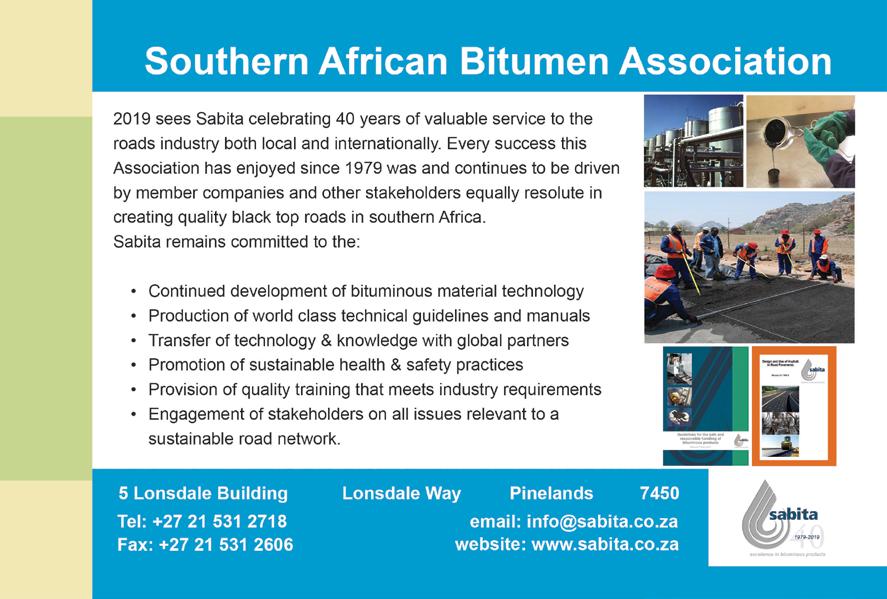
r oads & Br I d G es

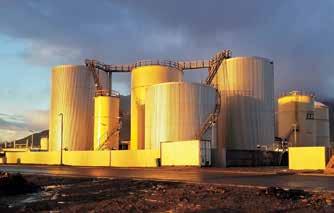
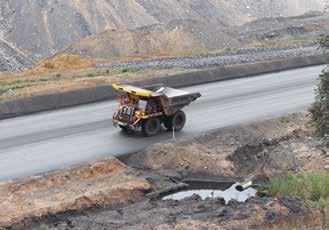


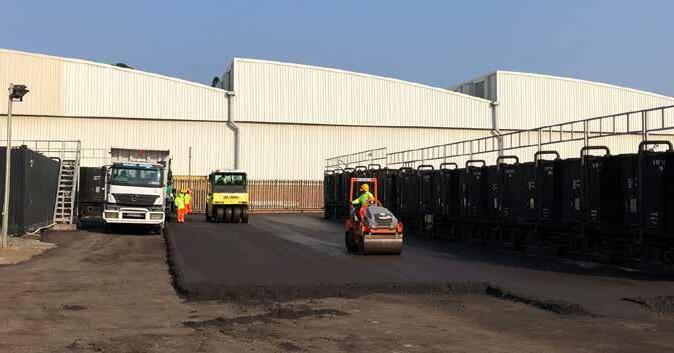

A green and versatile base course layer
Colas South Africa introduces Valorcol, a Colas speciality solution that provides an environmentally friendly and economic way to upgrade gravel roads, re-profile existing roads or build stabilised base layers.
Valorcol is a cold-mix technology made with anywhere from 1% to 100% reclaimed asphalt, the balance comprising new aggregate or, alternatively, the in situ material. Aggregates are carefully selected and subject to a detailed mix design process performed in Colas’ state-of-the-art laboratories.
A mixture of aggregate and bitumen emulsion is processed in a fit-for-purpose, mobile cold recycling mixing plant, which can be established anywhere in the country in close proximity to the customer’s site. Since the process is cold, this results in a safer work environment, easy application and significant reduction in energy usage. The product is also workable for longer periods when compared to hot-mix alternatives.
Application process
Valorcol is applied using only a grader or asphalt paver and compacted using pneumatic and steel drum compactors. Depending on the design, Valorcol is placed in a layer from anywhere between 3 cm to 30 cm. The pavement can be opened to traffic as soon as compaction is completed. A seal coat can be applied to create a waterproof seal and set any loose course material.
ABOVE RIGHT Valorcol is applied using only a grader or asphalt paver and compacted using pneumatic and steel drum compactors
This innovative product has been successfully used by Colas around the world on a variety of projects, from wearing course applications in the southern French Alps to sub-base replacement in a new build on Reunion Island.
Durban
Locally, Colas recently completed the first Valorcol trial at its bitumen storage facility in Durban using 70% recycled asphalt.
The existing gravel surface was uneven and corrugated, with severe drainage problems occurring during wet weather. The application of Valorcol has created a stable, smooth surface with a significant improvement in wet weather performance.
The possibilities are endless, as Valorcol offers superior performance in light to medium traffic applications, making it possible for any small contractor to deliver a quality product that meets both the client and end user’s expectations.
Valorcol has demonstrated superior performance on rural gravel road upgrades,
solving social issues such as dust pollution and mobility challenges. The product is also ideal for labour-intensive construction techniques.
Main uses
- Maintenance: levelling, re-profiling
- Pavement reinforcement
- Base for new pavements
- Upgrading of gravel roads
- Logistic facilities and storage yards
a dvantages
- Uses recycled asphalt pavement
- Savings on materials, binder and transportation
- Conserves natural aggregate resources
- Cold-mix technique with significant energy savings
- Lower emissions and fumes
- Storable and workable for longer periods
- Characteristics adapted to requirements, depending on the selected application
- Improvement of roadway profile
- Adhesion of courses
- Uniformity of structure
- Can be laid down either by a paver or by a grader

IMIESA October 2019 31
Roads & B R idges
Colas recently completed the first Valorcol trial at its bitumen storage facility in Durban using 100% recycled asphalt
Rehabilitating a critical airstrip
Rebuilding and extending the Rubkona gravel runway in South Sudan paved the way for larger-bodied fixed-wing transport aircraft servicing a humanitarian aid station and refugee camp for internally displaced people. Faced with a range of options, WSP Group Africa devised a value engineering approach that cut costs significantly and provided a lasting solution. By Alastair currie
High aircraft traffic volumes had progressively taken their toll on Rubkona’s airstrip, which had become heavily corrugated, with ensuing gravel loss. This was progressively exacerbated by the geology and the wet and dry extremes experienced in the region. During the rainy season, typically extending from May to October, air traffic for fixed-wing aircraft was restricted to intermittent dry runway days.
Up to 48 hours were required for the airstrip to dry out sufficiently for the safe landing of fixed-wing aircraft. During the summer months, the underlying black cotton soils also meant that severe and deeper-level surface cracking occurred – large enough to insert a closed hand – making the runway unsafe for planes.
Characterised as expansive clays, black cotton soils have a high potential for shrinkage
or swelling, subject to moisture variables. On this site, these soils reach a depth of up to 15 m deep, with a silty-sand layer below.
Road transport would have been an alternative option, but the general state of infrastructure is poor to the point where the route becomes non-negotiable in wet periods, hence the reliance on aviation. So when planes couldn’t land, this meant that inbound logistics for the aid mission had to be supplied by military-scale helicopters. However, given the much higher fuel burn rate of rotary aircraft, this added a greater payload cost.
Need for larger planes
The client brief to WSP was to come up with a design solution that would restore and then extend the runway to accommodate larger transport planes, like Lockheed Martin’s C-130 Hercules and its civilian variant, the
L-100-30 Hercules – all year round. These aircraft are equipped to carry a cargo of approximately 19 tonnes. Prior to the upgrade, the Antonov An-26, with its approximately 5.5 tonne payload, was the largest plane that the airstrip could handle.
“During construction, a key requirement was for the airstrip to remain open to traffic,” explains Hercu du Preez, principle associate: Pavements – Transport and Infrastructure, WSP Group Africa, who led the project.
“For this reason, the works were split into two phases. The first phase entailed the rebuilding of the existing 800 m airstrip, followed in Phase 2 by extension works to establish the final 2.2 km runway,” he continues.
Sourcing the layer works materials was an immediate challenge that subsequently had a major influence on the approved design. This resulted in WSP specifying the application

Ru N way S
Each geocell panel measure 2.5 m x 10 m. Using on-site labour, these are stretched out and stitched together
With routine maintenance, WSP’s design will ensue that the Rubkona airstrip will remain functional and serviceable over its 10-year design life.”
of polymeric nanocomposite alloy geocells as the preferred mechanically stabilised and accepted construction methodology.
Compared to alternative HDPE options, polymeric nanocomposite alloy geocells have exceptionally high creep resistance, which is an essential feature for runway construction. Permanent deformation of the geocells occurs due to constant loading. Equivalent HDPE systems are not designed to achieve this result and are, therefore, unsuitable for this application.
“Geocells have a 3D honeycomb shape and each cell is filled with material to form its final integrity. At Rubkona, this comprised white silty sand sourced from a local borrow pit,” says Du Preez, adding that by confining the material, the modulus of elasticity is improved significantly, depending on the nature of the supporting layer. In this case, that was another geocell layer.
“To accommodate larger planes, you need maximum stiffness in the upper pavement layers and this was optimally achieved with the geocells,” he continues. “Thanks to the design, we were also able to keep the pavement as light as possible, to reduce the risk of any potential settlement.”
The final design
After detailed assessments, the approved layer works design comprised the following:
• a 150 mm gravel wearing course composed of G6-G7 ferricrete material, referred to locally as Murram
• a 150 mm white sand layer mechanically stabilised with a 100 mm geocell grid
• a further underlying geocell grid layer to the same specification

• a 40 kN geotextile separation layer above the underlying black cotton soil.
The original construction cost using a conventional chemical stablisation methodology was estimated at around $US27 million (R393 million), making it a non-starter. The accepted WSP design came in around approximately $10 million (R145.5 million), which then received the green light.
Thanks to the black cotton soils, the conventional design would have required around 600 mm of Murram to form the wearing course. But the source of the nearest Murram commercial aggregate was situated some 160 km away. Aside from the sheer distance and the constant risk posed by civil unrest, the roads leading to the site were in too poor a condition to enable on-time project delivery. Therefore, importing this wearing course was cost-prohibitive.
A calculation also showed that by going the chemical stabilisation route, at least 1 000 truck-loads of cement or lime would have been needed for the project. So going the geocell

The sand stockpiles are back-tipped on-site and then the successive windrows are bladed into the cells using a grader
route made things much simpler: packed in containers, they were all flown in by Antonov An-26 aircraft. An alternative G6-G7 material was also sourced closer by, for the gravel wearing course.
Construction began in November 2017 and was completed in May 2018, which is a remarkably short time frame for a project of this nature.
“Thanks to a geocell solution, fixed-wing aircraft approaching Rubkona airstrip can now land every day of the year, given permissible flying conditions,” Du Preez concludes.
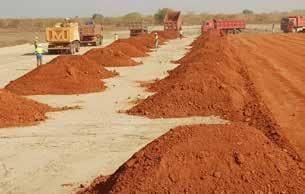
final

IMIESA October 2019 33
Ru N way S
Geocell establishment at an advanced stage of construction
Applying the
150 mm gravel wearing course
A transport aircraft parked on the new runway apron

Embracing change and innovation
JG Afrika has embarked on a drive to position the company at the forefront of developments under way in the built environment.
The global engineering sector is facing major disruption, driven by, among other innovations, 3D printing, drones, alternative energy sources, sustainable materials, as well as artificial intelligence and machine learning – all areas being incorporated by JG Afrika within its future capabilities and services.
Paul Olivier, managing director, JG Afrika, says that this drive to revolutionise the way in which the company innovates will ensure that it remains among the vanguard of the industry.
“Constant innovation has ensured that we’ve remained relevant throughout our proud 97-year history. We, therefore, have a sound basis upon which we are able to continue to build. In today’s fast-paced engineering environment, we now have a wonderful broad platform from which to fully capitalise on new ideas and developments to create new
opportunities and innovative solutions for our clients,” Olivier tells ImIESA
Led by Chris Wise, technical director at JG Afrika, a team of ‘Innovation Facilitators’ has been established to collate new ideas from staff.
“Our approach has already started paying dividends, having generated many ideas over the past few months since the initiative was launched. Moreover, we have seen that our people – JG Afrika’s strategic assets –are starting to think differently about their projects and the way they approach them,”
Wise says.
This initiative is complemented by the significant cross-pollination that continues to take place between JG Afrika’s more than 20 different disciplines and among the firm’s professionals working on the company’s many projects.
Ideas range from ‘low-hanging fruits’ that can be implemented swiftly and with minimal
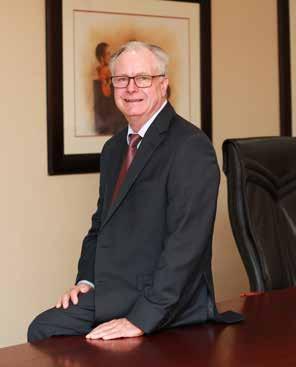
effort through to more ambitious programmes and projects with a significantly larger impact that will be realised over the medium to long term. Olivier says that the biggest challenge is identifying those ideas that should be implemented first.
Circular economy
Potential ‘quick win’ examples are innovative integrated waste management solutions to assist industries in deriving sustainable value from their residue streams, in order to achieve a more circular economy.
“We have some really creative people in the waste industry. They have helped implement the first fully integrated waste facilities in Cape Town and Durban, and have identified more opportunities to explore in terms of recycling, managing waste and energy generation, which have been implemented at these and other facilities,” Olivier says.
Notably, JG Afrika recently received a commendation at the 2019 CESA AON Engineering Excellence Awards for its work on the new portable flush toilet cleaning facility at the Borcherds Quarry wastewater treatment works site in Cape Town.
JG Afrika and Project Assignments (SA) were appointed by the City of Cape Town to design and develop this facility, which efficiently and safely disposes of the sewage collected from informal settlements. Mechanised and automated, it is believed to be the first of its kind in the world and several patent applications are pending.
34 IMIESA October 2019
Pa RTNERS IN I N f R a STR u CT u RE
Paul Olivier, managing director, JG Afrika
Constant innovation has ensured that we’ve remained relevant throughout our proud 97-year history.”
Olivier says that there is also potential for JG Afrika to grow its presence in the decentralised energy market.
“It is a growing global trend that is challenging traditional centralised generation models. South African companies are also increasingly looking at ways of generating energy from alternative sources, considering concerns around the reliability and skyrocketing costs of grid electricity. Although the costs of alternatives, such as wind and solar, are still comparatively high, they are steadily declining. In many instances, they can also be combined with a grid-tie system to produce a level of electricity saving and reliability,” he explains.
Water conservation
Meanwhile, JG Afrika has also played a leading role in assisting companies, municipalities,

schools and universities to build resilience to water restrictions.
Work undertaken for the International School of Cape Town still stands out as a sound example of JG Afrika’s stellar work in the field. When all three phases of the project are implemented, the school will be able to achieve savings in water of between 95% and 98%.
The company also designed and is implementing innovative means of reusing
campus grey water in fit-for-purpose applications at Stellenbosch University. It was the winner in the Division Award – Water category in the SAICE Western Cape Regional Awards programme.
One of the largest installations of its kind in Africa, the system will significantly improve campus water supply resilience once all phases have been completed. The network will flush more than 1 300 toilets that are used by about 25 000 university students to meet between 20% and 30% of campus water supply and supplement campus irrigation.
Olivier says that JG Afrika’s innovation drive supports the company’s focus on being the best at what it does and to grow and retain a broad range of disciplines, as opposed to being the biggest in the industry.
“It will enable us to differentiate ourselves in the market and position the company in such a way that it can negotiate change easily. This is in addition to growing a new generation of thought leaders in the field and potentially opening up new operating niches or lines of service to the market,” he concludes.

9879_JG a5 Ad20190805_2UW.indd 2 2019/08/22 12:14 Pa RTNERS IN I N f R a STR u CT u RE
Joint Conference with IMESA & IAWEES
Institute of Municipal Engineering of Southern Africa & International Association of Water, Environment, Energy and Society
EVENT: 84TH IMESA Conference in collaboration with IAWEES
VENUE: Cape Town International Convention Centre
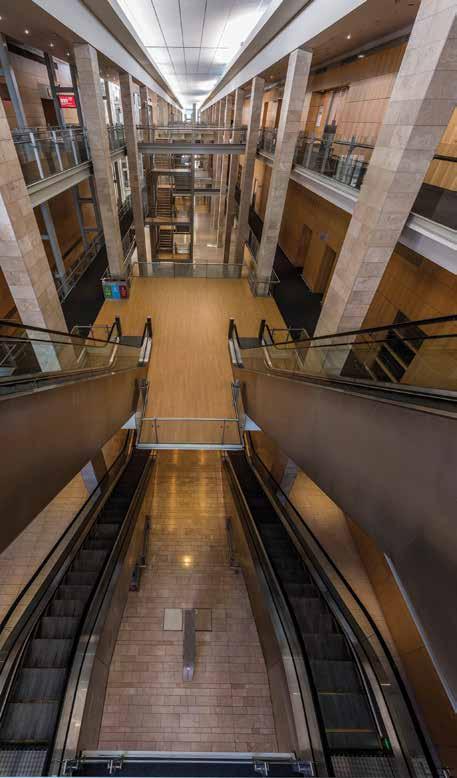
DATES: 28-30 October 2020
THEME: Synergy through Engineering







t: +27 (031)266 3263
e: conference@imesa.org.za marketing@imesa.org.za www.imesa.org.za
Earn 2.5 CPD points by attending
















SAVE DATE the
IMESA The Institute of Municipal Engineering of Southern Africa & International Association of Water, Environment, Energy and Society CONFERENCE ENDORSED BY CONFERENCE HOSTS

Economic lull harming transformation
The inertia of South Africa’s economy is having a significant negative impact on the transformation of companies, says Nonkululeko Sindane, CEO of civil engineering project management and consulting firm Mariswe.
Mariswe, formerly UWP Consulting, rebranded in early 2019 following sweeping changes within the firm, which included the acquisition of three black-owned consultancies coupled with a strong and successful internal transformation journey.
Today, Mariswe is 100% employee owned and 55% black owned. Black women effectively own 24% of the company. Mariswe also successfully retained its Level 1 BBBEE Contributor status in its first audit under the Amended Construction Sector Codes of Good Practice in November 2018.

Mariswe CEO Nonkululeko Sindane warns that sustainable construction sector transformation depends on economic growth
“We place strong emphasis on growing our shareholding by black employees and specifically black woman employees, recognising that we started from a low base,” Sindane explains. “But our progress is at risk in the current environment, where projects are few and far between. Our employees use their dividends to

Pa RTNERS IN I N f R a STR u CT u RE
pay for their shares and this is not possible without growth,” she explains.
Skills development at risk
“Transformation is a priority for our government, so everything necessary must be done to improve the performance of the South African economy and particularly the construction industry,” she continues. “This sector fuels industries such as steel, materials and other manufacturers, banks as financiers of large projects, and many more – all strong creators of employment.”
Mariswe’s sustainability is founded on the training and development of young employees into well-rounded professionals with management and technical skills. The firm has been forced to cut back on its development programmes due to the slow economy.
“We are faced with many young people finishing their studies with hopes of candidacy training, internships and learnerships. Yet companies can no longer afford to give many of these young people opportunities for development, which also harms the industry. Without new projects, opportunities for on-the-
job training are also diminished. While this is disappointing, we are focusing on protecting the gains we’ve made,” says Sindane.
Preparing for the future
The firm is accredited by the National Credit Regulator to offer loans to employees to pay for their shares, with special focus on younger employees, to drive loyalty, ownership, sustainability of the company and individual financial growth of the shareholders.
A strategy to grow black woman leaders in both technical and administrative roles has included the revision of internal strategies to attract and engage women in the business. This includes improvements to policies that affect women and participation in Mariswe’s three-year Leadership Development Programme.
The Mariswe difference lies in understanding the challenges raised by management and finding ways of working around them. “If transformation is applied well, it should not be seen in isolation, but as an integral part of the company strategy for business growth and sustainability,” she points out.

Mariswe has grown its supplier base using preferential procurement guidelines, with a focus not only on procuring from black service providers, but also on quality and sustainability of the services procured to optimise the business.
“We are very happy with our service providers because they add real value to the products we deliver to our clients,” she adds.
Management attitudes are key to building a transformation ethos, Sindane believes.
“The civil engineering sector needs growth to transform and to attract young people to join the industry. It is simply not possible to keep the momentum we wish for in the current climate,” Sindane concludes.






38
IMIESA October 2019
Pa RTNERS IN I N f R a STR u CT u RE
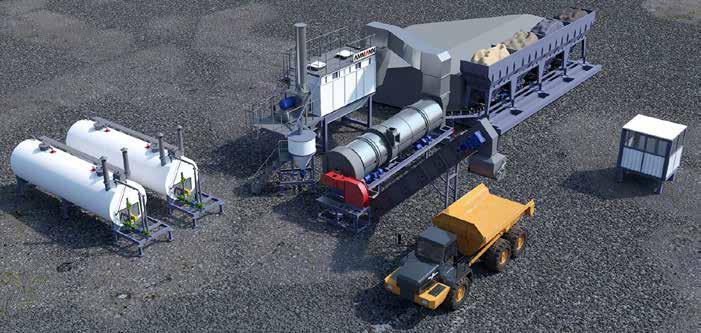
Ammann’s strategic focus on SMMEs
Ahead of the curve, Ammann leads the way through innovation and expert support for large and small businesses globally. Within Southern Africa, Ammann’s value-added solutions are helping to build SMME capacity and industry transformation in the roads and general construction sector.
On the ground in more than 100 countries worldwide, Ammann has an in-depth understanding of developed and emerging market requirements. That’s not surprising when you consider that the Group celebrated its 150th anniversary in 2019.
Early milestones that helped to shape the business include the acquisition of the Swiss patent for tar macadam machines in 1908, and the introduction of the first motorised Ammann road rollers in 1911. That formed the base for a multifaceted range of products that keeps on evolving.
Rocco Lehman, managing director, Ammann South Africa, explains, “Our business is founded on creating the best customer experience, either via our dealers or through a direct OEM interface.”
Locally, ELB Equipment is Ammann’s Southern African dealer for its machine line-up. A wholly owned South African company with a 100-year history, ELB has 20 outlets in Southern Africa. In turn, Ammann South Africa directly sells and supports the OEM’s asphalt and cement plant series.
Business advice, training and support “Ammann doesn’t sell machines in isolation. We take a holistic approach,” Lehman continues. “The end goal is to guide and train contractors at all levels on the best machine and plant setup to run a profitable business, whether as a road paving contractor, an asphalt supplier, or a combination of the two.”
Most construction companies across the globe start out as SMMEs and, based on expertise and reputation, progressively become leaders within their own country, and with further vision to expand internationally. While Ammann is now a major multinational, it also began life as a small, family-run business. Today, it’s managed by the fifth generation, but with the same unwavering customer-centric approach.
Lowering barriers
At present, Ammann is one of the few OEMs able to provide a complete asphalt solution catering for all market requirements. Units range from highly sophisticated plants to more simplified ‘entry-level’, environmentally compliant units that meet all Sanral and allied roads agency specifications.
“High capital equipment costs and a lack of access to finance are the two main barriers to launching an SMME construction business,” says Lehman. “We make provision for this through market-specific product development, as well as provision for internal and external equipment finance.”
A good example of an SMME spec is the costcompetitive CounterFlow asphalt plant range manufactured by Ammann’s state-of-the-art production facility in India. Capacities range from 80 tph to 120 tph and meet recycled asphalt specifications.
“It’s a proven fact that SMMEs are essential – and the backbone – for any economy, whether it’s in Germany, India or South Africa. That’s why

Ammann has been supporting client business growth from inception through purpose-built mechanisation,” Lehman explains.
“We’re proud to state that, in the past eight years or so, we’ve worked alongside five or six new entrants into the South African and crossborder asphalt market, all of which are now operating sustainable businesses with Ammann products,” states Lehman. “Given the expected upturn in the local roads market, the potential for further strategic partnerships is much greater.”
Alongside this, ELB has supported around 10 South African SMMEs to grow their Ammann compaction and paving fleets.
In terms of equipment finance, Ammann is investigating the rent-to-own model for its asphalt plant series, with maintenance managed by the OEM. For the machine range, ELB already works with leading financial institutions that offer lease, rental, and hire purchase agreements in line with standard industry practice. In addition to this, ELB makes provision for trade-ins.
“Our next step in the value chain is to work with roads departments and allied private and public sector infrastructure stakeholders to investigate how we can help nurture South Africa’s current and future SMME contractors,” Lehman concludes.

IMIESA October 2019 39 Pa RTNERS IN I N f R a STR u CT u RE
www.ammann.com
Rocco Lehman, managing director, Ammann South Africa
An Ammann CounterFlow asphalt plant manufactured in India





















ELB is Ammann’s best compaction dealer
The Ammann Top Dealer Award 2018 for Compaction Equipment recognises the Swiss OEM’s topperforming dealers and it’s a highly prized achievement.
Since taking on the agency for Ammann compaction equipment in 2014, ELB Equipment has led the brand, making massive inroads into the local compaction and road paving equipment market. In the compaction segment, Ammann is now firmly ranked in the top three locally thanks to ELB’s dedicated focus on sales and after-sales support.
Right stuff
“This is a considerable achievement considering the quality and status of our opposition,” says Desmond van Heerden, divisional director,

Desmond van Heerden, divisional director, ELB Equipment, proudly displays its Ammann Dealer of the Year 2018 Award for compaction equipment
ELB Equipment. “We attribute our success to a combination of our excellent reputation in the industry, as well as the quality of Ammann products, our large support footprint and reputation for quality of service and supply.
“With the correct ingredients, we have taken the market by storm with the right product, at an affordable price and with backup to ensure a long and productive lifespan of the equipment. As a result, it has become the product of choice for contractors in South Africa and a preferred brand when it comes to compaction and road construction,” he continues.
ELB offers a full range of compaction equipment, including rammers and plate


compactors, as well as walk-behind, tandem, pneumatic tyre rollers, and soil compactors.
Contractor friendly
The Ammann brand continues to gain traction across the industry spectrum. A comprehensive line-up of models ensures that there’s a purposedesigned machine for small- and largescale projects. From international airport runways to national roads, parking lots and pathways, Ammann has a solution. Within the emerging contractor market, Ammann’s walk-behind rollers and allied compact equipment models are the ideal entry point.
ELB recently announced all-new extended warranties: a 36-month or 3 000-hour warranty is provided for all Ammann walk-behinds, rammers and plate compactors, while a twoyear, or 2 000-hour, warranty comes standard for Ammann large compaction machines.
“This is sure to boost the range and further extend Ammann’s popularity in the marketplace,” Van Heerden concludes.
Pa RTNERS IN I N f R a STR u CT u RE

Going green with gabions
Alongside conventional roles, like river erosion channels and mass gravity retaining walls, gabion and gabion mattress designs can be adapted to suit a wide range of applications that include foundation support and bioengineering.
By Alastair currie
Within the civil engineering arena, the tremendous structural strength of gabions makes them an ideal choice for bridge abutments tying into retaining wall systems. These can range from national highway-type structures to more simplified works.
A classic example in terms of the latter is the Bailey bridge originally developed for military applications during the Second World War, but still extensively in use worldwide for forming crossings that can be either temporary or permanent. They are particularly well suited for establishing quick and lasting bridge connections over rivers and gullies.
Typically constructed using modular structural steel sections, Bailey bridge components are relatively easy to transport to remote areas. Once the construction phase begins, though, the starting point is to found and establish the abutments.
Reinforced concrete is an option, but will prove challenging from a logistics perspective in more off-the-track settings. Gabions, on the other hand, are an ideal choice. In most cases, naturally occurring rock materials can be sourced on-site to form the gabion mattress foundation and integrated retaining wall structures supporting either end of the bridge. In river crossing applications, gabion walls and gabion mattresses also provide scour protection, which is especially important during flood conditions.
Since no specialist equipment is required, these projects are ideally suited to labourintensive construction methods, which is a key consideration in addressing poverty alleviation and unemployment within rural communities.
“When properly constructed, gabion walls exhibit high compressive strengths, typically of around 300 t/m2, and so are well suited to carrying a wide range of vehicular traffic,” explains Louis Cheyne, managing director
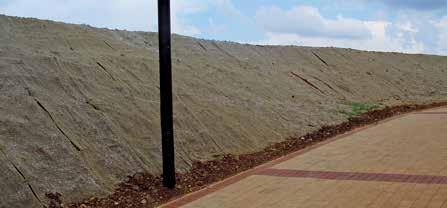
of Gabion Baskets, a leading manufacturer and specialist in environmentally engineered solutions.
To date, Gabion Baskets has supplied a number of gabion orders for Bailey projects. These include installations completed by Bridges for Africa, a local company that specialises in this area.
Bioengineering
Aesthetics has become a key design mandate for all built environment structures, whether they be buildings, bridges or walls. These structures increasingly incorporate vegetation, either as a landscaping element or as an integrated green façade feature to enable them to blend in with the environment.
In this respect, gabion walls and gabion mattresses naturally lend themselves to being bioengineered, or greened, and there are diverse techniques that can be used to achieve this.

e nv I ronmental e n GI neer I n G
A Bailey bridge supported on a gabion foundation A typical embankment protection design using a biodegradable blanket A close-up view of a jute blanket 42 IMIESA October 2019
River mattress with seeded soil pockets
Seeded soil pockets made by geotextile filled with soil
There are essentially two key techniques for establishing vegetation on a gabion retaining wall. The most common approach is to have two thirds of each basket filled with rock. A geotextile layer is then added and the balance of each basket (the remaining third) is filled with a mixture of rock together with washed- or brushed-in topsoil, held in place by a geotextile. Each step is then also covered with topsoil and seeded. The minimum recommended thickness is around 200 mm.
The second option, particularly for gabion walls, is to create pockets in the top of the steppedback gabion system. These are lined with a filter fabric and filled with a mixture of rock and soil, followed by planting with water-wise plants.
Since gabion frames are composed of doublehexagonal twistedwire mesh, there are endless opportunities to vegetate them. This includes using creepers or shrubs designed to
Geotextile A4 (U24)
Rock with topsoil washed/broomed in afterwards
Geotextile A2 (U14)
Geotextile
Biodegradable soil blanket
grow through the gabions to completely cover these structures.
“The harsh rock effect of a gabion retaining wall can create a deliberate design impact, especially when complemented by our special PVC colour coating range. However, we are increasingly receiving requests from developers and municipal clients to recommend how these
can blend in more, or even be completely greened,” Cheyne expands.
Sometimes, a softer engineering approach can be adopted that provides environmental and structural benefits. This is especially the case on newly constructed slopes and mechanically stabilised earth embankments.
“It’s important to choose the right approach for the fill face,” says Cheyne. “Without an intervention, severe surface erosion can occur. In this respect, biodegradable soil blankets are highly effective in establishing long-lasting stability. They are usually founded at the base of the embankment with coir logs or sausage gabions for controlled drainage.”
Typically made of jute, a vegetable fibre, these blankets are designed to degrade over a year or two. During this time, these blankets help to keep the soil cool and moist, allowing plant root systems to form and take hold to create a naturally occurring revetment.
Topsoil over step
1/4 full brace Front section 1 rock (230 mm) wide filled with rock
Normal rock fill
“Contractors can hydro-seed the slope before applying the blanket,” Cheyne explains. “Alternatively, small cuts can be made at preset intervals to enable the planting of shrubs that will then grow through. Research has shown that well-established root systems are very strong and effective.”
In addition to embankments, sausage gabions, which measure around 650 mm in diameter, can also be used in small river channels or for donga rehabilitation. Filled with rock, or a combination of rock and soil, they also lend themselves to the establishment of vegetation growth.
“Being permeable structures, gabions and gabion mattresses are potentially among the greenest environmentally engineered options available. Advances in specialised flat-welded mesh gabions are also proving popular for architectural cladding and walls. Design elements here can include the planting of shrubs to enhance the final result,” Cheyne concludes.

E N v IRONMENTal E NGINEERING
Typical section of a vegetated gabion wall
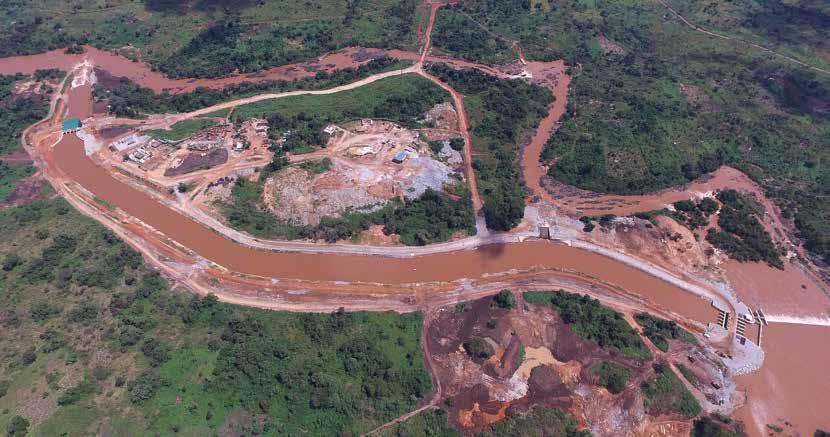
Hydropower in Africa
Constructed exclusively using local Congolese contractors, the Azambi Hydropower Project is a classic example of a fit-for-purpose approach. This was particularly the case given the fact that the appointed civil contractors had no previous experience on a dam or hydropower development.

The 11 MW Azambi hydropower plant (HPP) is located in a remote area of the Orientale province in the Democratic Republic of the Congo. It was commissioned as the third hydropower plant for the Kibali Gold Mine, a subsidiary of Barrick Gold Corporation, to meet its growing power demands. The construction implementation stage extended over an 18-month period and the hydropower station was commissioned successfully in August/September 2018.
As the appointed consulting engineer, Knight Piésold worked closely with Kibali Gold Mine to develop a purpose-built, low-impact and cost-effective installation that now produces approximately 64 GWh of renewable, reliable electricity annually, and increases the mine’s combined installed hydropower capacity to approximately 43 MW. Of this, the mine supplies 1.5 MW free of charge to local communities via its grid connection, helping to power homes and businesses

44 IMIESA October 2019
Hydropower
A view of the entire scheme
The powerhouse viewed from the upstream right bank
The intake area and RMC diversion weir
and reduce their reliance on timber to meet energy requirements.
Kibali now has three run-of-river hydroelectric plants in operation that provide the majority of its energy requirements. In the process, it has drastically reduced its reliance on diesel power, reducing energy costs from about US$400/MWh (R5 850/MWh) to close to $100/MWh (R1 460/MWh).
Historically, Randgold Resources (RRL), which recently merged with Barrick Gold Corporation, together with AngloGold Ashanti and Sokimo, purchased the Kibali Gold Mine, formerly the Moto Gold fields, in 2009.
Shift to renewables
In an area with sparse infrastructure and no dedicated electricity utility provider, RRL developed the mine into what is now one of the largest gold mining operations in Africa. Extensive advance establishment works were required, including the provision of a diesel power station and an internal power grid, with all associated transmission lines and substations.
The large Kibali and Nzoro rivers envelope the concession and RRL immediately recognised the importance of developing renewable energy resources.
A preliminary design/scoping study for potential hydropower development opportunities

A perspective of the intake from downstream, showing works at an advanced stage of completion

was conducted; in 2011, RRL earmarked four run-of-river schemes, located within 30 km of the main gold mine. The hydropower projects included sequential construction of the 22 MW Nzoro II HPP, 11 MW Ambarau HPP, 11 MW Azambi HPP and finally the 7 MW Sessenge HPP, over a 10-year period, to provide 49 MW base power to the mine grid.
The gold mine itself was developed in two overlapping phases and Nzoro II was constructed in the first phase between 2011 and 2013. Thereafter, Ambarau, Azambi and Sessenge were packaged into a single turnkey EPCM contract (named the Kibali River Hydropower Plant Projects), which was
later awarded to South African and European contractors who had been engaged on the mine establishment works.
Forming part of the original turnkey EPCM contract, a duplicate set of Kaplan turbine and generating units were purchased simultaneously and stored at the mine, intended for installation at both Ambarau and Azambi before the detail engineering designs had started.
Ambarau HPP was configured as a run-of-river station, comprising a 23 m high symmetrical hardfill dam constructed to create the required water head drop for an integrated hydropower plant. Construction of Ambarau HPP
Leading the Development Process




and
GeoAfrika draws on the skills of experienced professionals across town planning, land surveys, GIS technologies, environmental law and property management to seamlessly tackle the land development process. www.geoafrika.co.za
Winner of the Standard Bank KZN Top Business Awards 2019 'Construction
Development' Category
Hy DROPO w ER

commenced in 2013 and the station was completed in 2016.
During its construction stage, RRL opted to terminate the original EPCM model and instead develop Azambi HPP following standard FIDIC white and modified red book contract forms.
Knight Piésold was then appointed for the full engineering design through to construction completion of the envisaged hydropower scheme, inclusive of concept and
detail design studies, procurement and fulltime construction monitoring.
Azambi’s salient features
Distinctive features of the Azambi project are the inclusion of a rubble masonry concrete (RMC) gravity diversion weir, reinforced concrete intake structure with sluice and sediment scour facilities, a 1.06 km long, 45 m wide power canal, and an integrated forebay to reinforced concrete powerhouse
19-08-08_033_ID19150_eAZ_Kapstadt_Imiesa_210x148_RZgp
CAPE TOWN
to tailrace. The powerhouse is equipped with the two Kaplan turbine and generating units, feeding an 11 kV switchyard and a 7 km long 66 kV transmission line.
From concept stage, engineering designs were required to follow a qualitatively balanced approach, with structural components tailored to suit the available topography, and using materials that were immediately available in the area. All this had to be achieved while maintaining sound international design and best practice quality standards.
The waterway system had to be engineered to achieve rated head and flow conditions for the particular turbine and generator units already purchased, within an unexplored project site. This was a constraint from a design perspective and certainly not the norm.
The option of constructing another large dam and integrated hydropower works was considered, but soon eliminated on the basis of risk and cost. Instead, a small diversion weir and canal system proved to be the most economical, low-risk option for Azambi.

EFFICIENT SEWAGE SYSTEM
State-of-the-art tunnelling technology from Herrenknecht is currently being applied to upgrade the sewage system in Cape Town. 1.2 km of new, sustainable tunnel infrastructure has been constructed with minimal disruption to the local community. www.herrenknecht.com
Construction of the Cape Flats 3 Bulk Sewer – Phase 2 Client: City of Cape Town Engineer: AECOM CSV Construction
Terry February
Credit:
Hydropower
Radial gates
Project highlights
The following is a summary of the highlights and innovations employed:
• The overall project concept was optimised to deliver a low-impact, continuous power by run-of-river operation, utilising local materials, labour and contractors. This included optimising the location of the diversion weir in order to reduce its height and cost, and to allow for the construction of an RMC dam that would promote labourintensive construction (i.e. local training, community involvement and employment).
• The intake structure was designed to facilitate bed load sediment removal by including a forebay sediment trap and vortex de-sander to provide both continuous sediment removal downstream of the trash rack and a guaranteed continuous ecological flow release.
• The headworks were positioned on the left bank of the river, which has gentler topography and a westerly river curvature, resulting in a shorter length of the power canal to attain the required head drop for the turbine rated conditions.
• The 185 m long RMC diversion weir with adjacent radial gate allows for large flood discharge capacity.
• The 1.1 km long power canal with emergency spillway was designed for the required flow capacity and positioned on the topography so that it did not require additional canal lining, thereby reducing costs and promoting the use of local materials.
• A surface powerhouse was configured for the two horizontal axis pit Kaplan-type turbine-generator units.
• Overall optimisation of the project increased the project’s initial average annual energy estimation by approximately 5.3 GWh/year, equivalent to $19 million (R277 million) per year in energy savings.
The project was executed jointly by Knight Piésold’s Canadian and South African offices. Overall project management responsibility was taken by Knight Piésold South Africa.
Roads and bridges
To avoid community disturbance due to driving through the local village with heavy construction equipment, a new bypass road was constructed, which also followed the alignment of the new 66 kV transmission line to the main substation.
This provided road access for construction right of way and long-term maintenance of the transmission line. A permanent bridge over Kibali River was required to reach the works
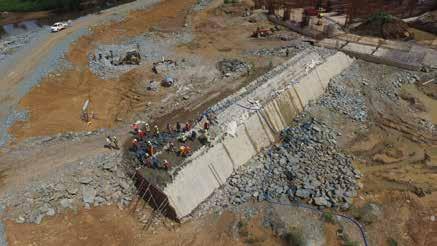
RMC construction is ideally suited to labour-intensive construction

and this formed a critical-path activity to allow construction to initiate at the time.
With the wet season approaching, a narrow section of the river was identified, and reinforced concrete abutments were constructed on either side of the riverbank.
A single-span, 36 m long weathering steel girder bridge with 80 t capacity was ordered and fully assembled on the right bank, before being lifted into position with the mine’s 300 t mobile crane. The bridge construction was expedited and commissioned within a week before the wet season arrived.
Project headworks
The project headworks are positioned at an outside bend of the river, at a location where a small island divided the river naturally.
The diversion weir axis ran over this island, perpendicular to the regional dip of rock strata, to simplify channelling and diverting the river during construction and to minimise the overall extent of foundation preparation.
The headpond is formed by the small reservoir created behind the weir. Since Azambi HPP will not operate as a peaking
station, only limited storage was provided. The weir is constructed to reduce the velocities of approaching river flow while directing water to the intake structure, and to pass flood events in a controlled manor. The headpond will also only settle out a limited amount of sediment and the key silt settlement facilities were installed and managed directly from the concrete intake structure.
The application of RMC for the small weir structure proved to be very successful. While promoting cost savings compared to a mass concrete equivalent, it offered a durable structure that is resistant to flood damage and was constructed with an unparalleled utilisation of labour.
In the end, and despite the need to integrate a myriad of factors and construction elements, Azambi HPP was delivered on time and at a fraction of the comparative final cost of the previous hydropower schemes.
In recognition, it recently won the Best International Project Category at the 2019 CESA AON Engineering Excellence Awards and at the 2019 SAICE Johannesburg Branch Awards.
IMIESA October 2019 47 Hy DROPO w ER




Introducing Nafasi Water
Following its sale, established water treatment company Aveng Water will now be known as Nafasi Water.
Aveng Water was recently bought out of the Aveng Group by Infinity Partners, owned by Suzie Nkambule and E-Squared. Now in the process of rebranding to Nafasi Water, the company retains its expert capabilities and remains true to its goal of preserving sub-Saharan Africa’s water while ensuring access to alternative sources for potable and industrial use.
Building on strong foundations
With a focus on water reclamation and desalination technology for application in complex industrial and wastewater systems, Nafasi Water began a journey in 2003 to develop, implement and operate world-class industrial desalination projects.
As a 100% black-owned South African leading water technology and water utility service company, Nafasi Water partners with industry, government and local communities to provide sustainable solutions to broader water security challenges. Combining innovative technology with the funding and delivery of world-class water and wastewater treatment projects and services, the company aims to sustainably reclaim water affected by industrial and human activities.
With considerable experience in the design, construction, commissioning and operation of complex water treatment plants, the company boasts three large-scale water treatment plants under its O&M Division. These include the eMalahleni and Middleburg Water Reclamation Plants, along with the flagship Erongo Sea Water Desalination Plant in Namibia. Nafasi
Water was also responsible for the construction and former operation of the Optimum Water Reclamation Plant.
Expert capabilities
Nafasi Water provides consulting and contracting services for the mining, municipal and industrial water sectors, specialising in the design and engineering of treatment plants for:
• seawater desalination
• industrial effluent treatment and reuse
• municipal water and waste water reuse
• water supply for power generation infrastructure.
For the treatment of mine water, Nafasi Water has developed a unique, internationally recognised product called HiPRO. With this, Nafasi has pioneered the application of reverse osmosis (RO) to treat mine water and achieve ultra-high water recoveries of 97% to 100%.
The HiPRO process achieves its high water recovery through the use of multiple stages of ultrafiltration and RO membrane systems, operating in series, and with interstage precipitation of low-solubility salts. This is applied without the expense of evaporators and crystallisers typically used in the final concentration step. The result is a very small brine stream that can be further treated or discharged into a lined evaporation dam.
Not only does HiPRO produce SANS-quality drinking water, it boasts lower capital and operating costs than other technologies and the recovery of potentially useful by-products.
Operations and maintenance
Nafasi Water has the commercial experience
and capability to offer project financing as build, own, operate (BOO) and build, own, operate, transfer (BOOT) contracts.
As leading providers of complete water treatment solutions, Nafasi Water offers a costeffective water management service, which includes water analysis, utility management, audit and condition monitoring, routine maintenance and equipment renewal.
The company’s unique Sigma Ops monitoring and control system adds to its O&M capabilities, allowing Nafasi Water to extract the longest possible operational life from membranes, even with very difficult to treat feedwater.
Partner of choice
“Nafasi Water is a partner of choice for municipalities and organisations in search of full-scale water and wastewater treatment solutions,” says Suzie Nkambule, CEO, Nafasi Water.
“We partner closely with our clients to ensure we add value by developing local capacity through skills transfer. We are proud to be a business that contributes meaningfully to the sustainable development of the geographic markets in which we operate.”

IMIESA October 2019 49
+27 10 205 1800 WATER & WASTEWATER











FOR AFRICA








 AMBITIONS
AMBITIONS
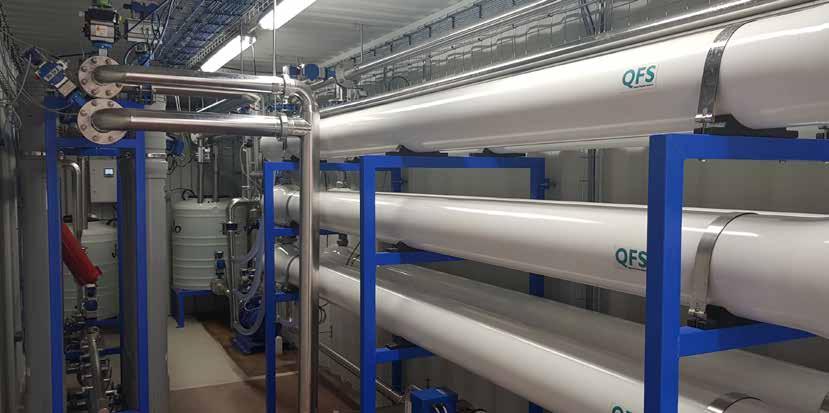

Optimising the treatment process
The University of the Western Cape has recently commissioned a treatment plant to treat a blend of borehole water. The feedwater requires a number of technologies and processes to be combined and optimised to ensure the plant meets the required output standards.
The University of the Western Cape (UWC) plant has been constructed using a combination of processes and technologies to treat the water. The process is optimised by making use of blends and bypasses – reducing capital and operating expenses, as well as cutting out the need for a stabilisation step.
Removal of monovalent salts
Monovalent salts – typically sodium chloride, which mostly makes up brackish and seawater – are not easily removed from water. The exceptionally well-organised crystal structures of these monovalent salts result in a great increase in entropy when these salts dissolve.
By nico-Ben Janse van Rensburg*
When TDS (total dissolved solids) levels need to be reduced to potable levels, or to near-pure levels, reverse osmosis (RO) is a technology that is proven to be significantly more energy efficient than evaporation and produces little chemical waste, excluding the brine produced from the desalination process.
Similar to working with pumps and a hydraulic system, the energy required is usually given in pressure units rather than in joules. In RO, the osmotic pressure refers to the pressure required to break even with the osmotic pressure. This sentence may be rephrased as the osmotic pressure represents the energy released when the salt content is dissolved in the water.
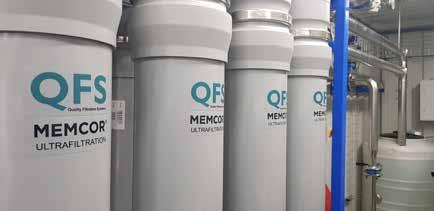
Applying this same amount of energy places a system in equilibrium, which will produce no separation of water and salt.
Typical osmotic pressures for sodium chloride solutions are given in Table 1. The values and ranges therein are taken from experience of typical boreholes encountered. The separation is performed by a semipermeable membrane, typically made from polyamide.
Removal of iron and manganese
Iron and manganese, both considered heavy metals, are not effectively removed by RO. Further to this, iron oxidising on the membrane surface causes rapid blockage of the membrane, resulting in the frequent need for CIP, which in turn shortens membrane life. If iron and manganese are present in the water, the first step is to oxidise the iron and manganese to an insoluble state and then remove the particles by means of filtration.

UWC process optimisation
At the UWC plant, water from a blend of borehole feeds is to be treated. The boreholes
water & wastewater IMIESA October 2019 51
22 m3/h of production. This blend ratio:
• reduces the energy required to remove monovalent salts and, therefore, reduces operating expenses while bringing the levels down well within limits
• reduces the RO size and, therefore, the capital required to construct the plant


contain high levels of iron at 2.5 mg/ℓ (SANS 241:2015 specifies 0.3 mg/ℓ or less), and levels of sodium and chloride that are slightly above the limit (SANS 241:2015 specifies 200 mg/ℓ for sodium and 300 mg/ℓ for chloride).
Apart from the levels that are above the limit, there is also calcium in the water at 120 mg/ℓ, which is good, but scaling. The calcium can be reduced to 40 mg/ℓ to provide a stable product water that is neither scaling nor corrosive.
The first step in the UWC plant is to oxidise the iron and elevated pH of 9.5, and then use a manganese dioxide catalyst filter to oxidise the remaining iron.
The iron particles – and other colloidal particles, bacteria and viruses – are
filtered by means of ultrafiltration (UF).
The UF, therefore, has a dual purpose, for both typical pre-treatment to the RO and for the effective removal of iron and manganese, provided the oxidation process is operating optimally.
As stated above, the removal of monovalent salts takes a significant amount of energy. Since the sodium and chloride levels are so close, it is not required to run the full production through RO. Instead, the calcium levels are used as a guide, and a portion of the water is treated by RO to achieve the desired calcium levels of 40 mg/ℓ. This results in only 14 m3/h of RO permeate being produced, and the remaining raw water from the UF to be blended to produce a total of
• removes the need for a stabilisation step in the process, thereby drastically reducing chemical consumption and operating costs.
Of the critical elements mentioned in this article, final water quality shows these to be well within specifications. The following values were attained from a SANAS-accredited laboratory from the final water produced at this plant:
• Chloride: 103 mg/ℓ
• Sodium: 88.6 mg/ℓ
• Iron: <0.024 mg/ℓ (below detection limits).
Stability of the water, as calculated by the Langelier Saturation Index, is -0.06, which is very close to the optimal zero.
*Nico-Ben Janse van Rensburg is a process engineer at QFS



Typical osmotic pressures Description Typical TDS (mg/ℓ) Osmotic pressure at 25oC (bar) Bottled water (from actual label) 83 0.071 Tap water 100 –1 200 0.086–1.03 Brackish water 1 200–2 000 1.03–1.72 Borehole water with seawater ingress 2 000–21 000 1.72–18.43 Seawater 33 000–45 000 29.36–38.33
TABLE 1
water & wastewater
52 IMIESA October 2019
The power of anaerobic digestion
Given the right process conditions, wastewater treatment plants create invaluable opportunities for renewable energy. Chris Braybrooke of Veolia Water Technologies South Africa discusses the strategic importance of anaerobic digestion in South Africa’s energy, economic and environmental future.
Veolia’s goal for South Africa’s wastewater treatment facilities with suitable chemical oxygen demand (COD) effluent conditions is to help these plants become 100% energy selfsufficient by utilising their waste as an energy source. In addition to the obvious advantages this will bring to operating and waste disposal costs, it will also help reduce energy demand on South Africa’s national power grid and, by extension, reduce the requirements for coal-based energy, lowering carbon emissions.
The science behind one the key technologies of such plants is simple: they use anaerobic biological digestion to compost organic matter, which produces biogas (mostly methane) that is then harvested and used as a fuel for the plant’s heating and cogeneration requirements. Such systems have already been installed or are being piloted by Veolia South Africa for companies in the food and beverage and municipal sectors, including Distell and eThekwini Municipality.
Veolia’s Memthane anaerobic membrane bioreactor is designed for treating high-strength effluents such as high-concentration streams (up to 250 000 ppm); ethanol waste; fat, oil and grease streams; starch slurries; and highCOD chemical applications. Memthane is being
used to achieve up to 100% energy and heat requirements in applications such as distilleries through biogas production, while efficiently treating complex compounds and reducing disposal costs.
For industrial effluents with significantly high amounts of suspended solids, Veolia manufactures the Biobulk completely stirred tank reactor (CSTR) – the anaerobic equivalent to the conventional activated sludge digestion system. This solution is used by Distell to lower the COD load in the outfall to Stellenbosch Municipality, harvest the energy in the wastewater for reuse, and lower the overall cost of effluent treatment.
Upflow anaerobic sludge blanket (UASB)

Memthane combines anaerobic biological wastewater treatment and ultrafiltration in a single process that is ideal for high-strength wastewaters, resulting in crystal-clear effluents
contains approximately 75% methane and can be utilised to provide the energy needs of the entire wastewater treatment plant in a combined heat and power unit.
Across the world, Veolia’s Upthane UASB treatment system has been used to develop over 500 energy-neutral sewage treatment plants –and other low-strength wastewater applications – utilising anaerobic microorganisms. The biogas

Completing Veolia’s anaerobic treatment range is its integrated fixed film activated sludge system (AnoxKaldnex Hybas); moving bed biofilm modular reactor (AnoxKaldnes Z – MBBR); and expanded granular sludge blanket (Biobed) systems.
Creating syngas from sludge Veolia’s research and development team in France is currently experimenting with a new tiered gasification technology to transform sewage sludge into energy-rich synthesis gas. In gasifying sewage sludge, using a mixture of steam and oxygen at 700°C to 1 000°C, results to date have demonstrated the technical feasibility of the process in terms of producing a high-energy-potential gas, rich in hydrogen and methane. This research and innovation process responds to Veolia’s desire to gradually make its various wastewater treatment sites energy-independent.
“By using the energy generated from their own waste, wastewater treatment plants could in the future reduce their environmental impact along with their energy bills, ultimately becoming self-sufficient in their energy requirements,” Braybrooke concludes.
water & wastewater
Veolia’s Biolbulk completely stirred tank reactor is used by Distell to treat effluent and harvest biogas for use as a fuel
The uMkhomazi Water Project
The answer to future regional supply, the uMkhomazi Water Project, upon completion, will be one of the largest bulk water infrastructure schemes constructed and operated in South Africa.

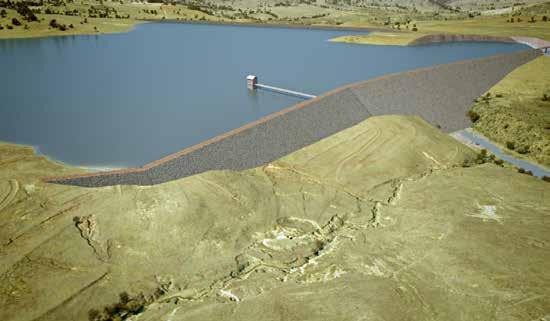
Progress continues to be made with preparations for implementation of the multibillion-rand uMkhomazi Water Project Phase 1 (uMWP1) in the wake of growing optimism that water delivery to eThekwini Metro’s Western Aqueduct by 2027/28 still remains a possibility.
In a significant endorsement of the project and its strategic importance, Umgeni Water and the Trans-Caledon Tunnel Authority (TCTA) received approval from the Minister of Water and Sanitation to go ahead. This was in the form of a Ministerial Directive, issued in February 2019, which also defines the roles and responsibilities of Umgeni Water, TCTA and the Department of


Water and Sanitation (DWS) – the custodian of South Africa’s water resources.
• In terms of Section 103 (2) of the National Water Act (No. 108 of 1997), TCTA will fund and implement the raw water component.
• In terms of Section 29 of the Act, Umgeni Water will fund and implement the potable water component.
• Umgeni Water will develop a financial model to fund the potable water component.
and TCTA in order to ensure requisite skills are available.
• There will be capacity building and transfer of skills, which will enable Umgeni Water to deliver on similar large projects in future.
• TCTA will take all reasonable measures to ensure water delivery by 2028.
Umgeni Water, TCTA and DWS officials are already working closely to resolve institutional, financial and project coordination hurdles and to also facilitate implementation of the project. Their joint efforts will ensure that preparations for implementation, which at this stage are largely in the environmental sphere, are executed timeously.
Progress to date has included agreement on the development of two project charters, one by TCTA and the other by Umgeni Water. TCTA has completed work on a draft project charter while Umgeni Water is working on its charter and the overall project charter.
Issues that have the potential to cause project delays
Past occurrences show that environment-related objections have great potential to stall the implementation of projects, leading ultimately to delayed completion and commissioning. An example is the outcomes of an avifauna study that was done as part of the environmental impact assessment (EIA) for the uMWP-1.
• A project office will be established from where Umgeni Water and TCTA will jointly coordinate implementation of the bulk and potable water components.




• Staff will be seconded by both Umgeni Water


The study concluded that the site of the proposed balancing dam is likely to adversely impact – from moderately to severely – the habitat of the endangered blue swallow bird species and their future nests. The investigation also recommended that tunnelling and blasting take place while the blue swallows are in migration.
Umgeni Water has since made changes to the system configuration, including excision of the balancing dam. Extensive discussions have been held with eThekwini Metro and approval obtained regarding the risks associated with not building the balancing dam.
Submission of an amended application for EIA to the Department of Environmental Affairs, Forestry and Fisheries (DEFF) is expected to occur by November 2019.
54 IMIESA October 2019
water & wastewater | I n F rastru C ture development
Phase 1: Smithfield Dam Phase 2: Impendle Dam Existing Umlaas Road Reservoir WTP 2 2 uMWP: PSC 20 August 2014 1
m³
wall height:
m FSL:
Smithfield Dam:
Volume: 251 million
Max
81
930 masl
Thami Hlongwa, chief executive, Umgeni Water
Investigating the best approach
The uMWP-1 has been identified as the most financially viable option to sustainably meet the long-term water requirements of domestic and industrial water users in the Inner and Outer West areas of eThekwini and parts of Pietermaritzburg.
There is widespread concern in political and business circles that further delays could impact negatively on economic growth in eThekwini and Msunduzi, and on household consumption.
The most recent mandatory water restrictions in the Mgeni System, including eThekwini, were lifted in July 2018 after the end of a protracted drought. The restrictions were 15% for domestic, commercial and industrial, and 50% for irrigation users.
Reconciliation studies conducted by the Department of Water and Sanitation triggered alarm bells when it was concluded that the water requirements of Durban’s Western Aqueduct would not be met in full without augmentation of the Upper Mgeni System (Mearns Weir, Spring Grove Dam and Midmar Dam).
These studies showed that the long-term water requirements of eThekwini Metro, Msunduzi Local Municipality and surrounding areas would exceed the assured yield of the entire Mgeni System (Midmar, Albert Falls, Nagle, Inanda and Spring Grove dams, and Mearns Weir) from 2016. This system’s deficit would increase to 202 million litres per annum in 2040.
In an attempt to manage this potentially serious risk, Umgeni Water investigated wastewater reuse and seawater desalination as possible alternatives to a conventional water storage, treatment and supply scheme. However, reuse and desalination were ruled out as expensive short-term solutions, and it was found that supply derived from these sources would soon be outstripped by demand. The uMWP-1, therefore, emerged as the preferred option.
Factors that favoured the uMWP-1
It will be a gravity scheme and consequently carry lower energy requirements and associated operating costs. An additional advantage is that it will be able to meet increasing demand in the long term (>25 years) and it will also be financially viable, especially in the context of capital and operating costs.
Conditional on obtaining EIA authorisation, it is anticipated that design for the uMWP-1 could begin in early 2021. The tunnel is on the critical path and it will take about five years to construct. If construction of the tunnel begins by 2023, commissioning of the scheme could be between 2028 and 2030.
What the uMWP-1 will comprise and its magnitude
The uMWP-1 will be comparable to the Lesotho Highlands Water Project Phase 2 in terms of volume, tunnel length and diameter.
The following are the components of the scheme:
Raw water component:
• Smithfield Dam, situated on the uMkhomazi River where it passes through the Ingwe Local Municipality
• a 33 km tunnel from this dam to Baynesfield
• a 7.5 km raw water pipeline

• based on current estimates, approximately 1 487 ha land will be required for Smithfield Dam.
Potable water component:
• 625 Mℓ/day water treatment plant at Baynesfield, which will be supplied by the 7.5 km raw water pipeline
• 19.4 km 2.8 m diameter potable water pipeline to Camperdown. This pipeline will ultimately supply the Western Aqueduct.
Mega investment
“Based on 2014 figures, the DWS’s portion was estimated to be R14 billion and Umgeni Water’s portion was estimated at R8 billion,” explains Thami Hlongwa, chief executive, Umgeni Water.
“However, these estimates are conservative at present-day construction, material and labour costs, and it would not be off mark to suggest that, in 2019, the estimated total cost of completion could be in the region of R26 billion. This project is vitally needed, which then makes it a sound financial investment in the future water needs of our region.”
Possible sources of funding of Umgeni Water’s portion of cost are borrowing on the open market, grants from the DWS and Umgeni Water’s balance sheet.
Future expansion of the uMWP-1
Water produced by the first phase of the uMWP-1 (625 Mℓ/day) will be supplied exclusively to eThekwini Metro and will be sufficient to meet eThekwini Metro’s demand projections for at least 25 years if it is commissioned in 2025. From this point onwards, Phase 2 of this scheme, which will be able to produce an additional 600 million litres per day of potable water, will be required.
However, if eThekwini Metro’s water demand, beyond its current level, remains below 500 million litres per day, Phase 1 will most likely meet this need for more than 40 years. Phase 2 will only be required once this additional demand exceeds this limit.
Phase 2 will comprise a dam at Impendle, outside Pietermaritzburg. This segment of the scheme will only be required, in the best-case scenario, in about 2050. Further infrastructure would be a duplication of the tunnel, pipelines and increased treatment capacity.
These projections are based on eThekwini Metro’s Spatial Development Planning processes and are calculated on an assumed growth rate of 1.5% per annum between 2013 and 2053.
One of the major benefits of the uMWP-1 is that it will bring into use water from an underutilised source – the uMkhomazi River Catchment. It is estimated that between 10% and 15% of water in the uMkhomazi River ultimately makes its way into the sea, and is lost. uMkhomazi is among the three largest rivers in KwaZulu-Natal. The other two are the uThukela and Umzimkhulu rivers.
“The uMkhomazi Water Project, through heightened security of supply, will play a pivotal role as a catalyst for future growth within eThekwini. By creating capacity within the Upper Mgeni System, it will also contribute to further socio-economic development within the uMgungundlovu and Msunduzi regions by making more water available to these customers,” Hlongwa concludes.

www.umgeni.co.za
water & wastewater | I n F rastru C ture development
IMIESA October 2019 55

Addressing vulnerabilities
Outcome 9 of the Medium Term Strategic Framework (MTSF) 2019-2024 calls for 100% access to safe and affordable water and sanitation, and a 15% reduction in non-revenue water by 2024. If this is to be achieved, water services authorities (WSAs) need to understand and address their weaknesses and vulnerabilities.
By Danielle Petterson
There are a number of challenges to the delivery of reliable, safe water in South Africa. These range from ageing infrastructure, shifting demands and resources, to poor planning, competing political priorities, a lack of skills and finance, and more.
Allestair Wensley, chief engineer, Department of Water and Sanitation (DWS), argues that, in order to address these myriad challenges, WSAs must be able to identify and address their areas of vulnerability. This can be done using the Municipal Strategic SelfAssessment (MuSSA) System – an annual assessment that allows WSAs to determine their overall business health in order to better deliver services.
The award-winning MuSSA system has evolved since its development in 2008. The assessment includes 18 key business health attributes, which are assessed by asking five strategic questions per attribute, to help WSAs determine their level of vulnerability. Thereafter, the
The 18 key business health attributes assessed by the MuSSA
aim is to address vulnerabilities, improve delivery of reliable services, monitor issues confronting WSAs and direct support.
The MuSSA is not a regulatory tool but rather a self-help tool that is fully aligned with all other planning processes. The DWS is constitutionally obliged to report to the Presidency on municipal vulnerability per WSA via MuSSA in terms of Outcome 9 of the MTSF.
National conclusions
Nationally, 40% of WSAs reflect extreme vulnerability, while another 38% reflect high vulnerability, reports Wensley. A combination of weak finances, poor operations and maintenance of assets, and weak technical capacity has resulted in elevated vulnerabilities in service provision attributes, most notably wastewater, environmental safety and regulatory compliance.

“There is a high vulnerability throughout the country, and the diagram never changes,” says Wensley. However, he points out that it is important to note that vulnerability does not imply immediate dysfunctionality, but rather that the business is not operating ideally.
Responses show that 64% of WSAs are not implementing an appropriate water and sanitation services plan and 58% have not developed a suitable WC/WDM (water conservation/water demand management) plan. Furthermore, 53% indicate that wastewater treatment works are fast approaching capacity, while a further 51% report that water treatment works are nearing capacity, and 44% indicate a water shortage of more than 20% of current needs.
56 IMIESA October 2019 water & wastewater
A look at SA’s WC/WDM
According to Wensley, using the qualitative data it is possible to monitor the country’s non-revenue water (NRW) performance based on feedback from the MuSSA. Section 6 of MuSSA asks five questions pertaining to WC/WDM:
1
Your WSA has developed a councilapproved WC/WDM strategy that includes a standard water balance (e.g. modified IWA).
2 Please indicate your percentage of NRW as per the modified IWA water balance.
3 System input volumes (bulk) to the WSA are accurately monitored using calibrated bulk meters (e.g. check metering).
4 Please indicate what percentage of all connections are metered and billed (residential and non-residential (commercial, industrial, etc.)) on a monthly basis.
5 Your WSA is implementing appropriate intervention programmes to reduce NRW (e.g. minimisation of night flows through press management, removal of unlawful connections, leak detection and repairs, consumer educations/awareness).
Having received the MuSSA results from 142 out of 144 WSAs, the DWS was able establish that the national NRW average has increased slightly from 36.39% 2015 to 36.55% at present. It must be noted that this is on the conservative side of many sector estimates and the percentage could in fact be much higher.
The regions with the highest levels of NRW are KwaZulu-Natal and the Eastern Cape. Encouragingly, these provinces have shown an increase in WC/WDM planning and assessment. However, there has been a
decrease in the four remaining assessment areas, states Rivonia Pillay, candidate civil engineer, DWS.
Even the best performing region – the Western Cape – showed a slight decrease in strategic planning, input volumes monitored, and connections metered and billed. However, interventions implemented increased drastically, which significantly decreased the percentage of NRW.
Pillay also provides an overview of the nine WSAs in Gauteng, which shows a high level of vulnerability. Only Ekurhuleni and Johannesburg score low on the vulnerability scale. The main vulnerabilities in the province, identified in the complete MuSSA, were financial asset management, technical staff capacity, and wastewater and environmental safety and regulatory compliances.

Gauteng has seen a slight decrease in NRW from 36.11% to 35.5%, which, although encouraging, is not substantial. Unfortunately, WC/WDM planning showed a decrease, and it was found that one WSA has no WC/WDM plan, while another only has a water balance. System input volumes have increased, but connections metered and billed have decreased.
Between 2015 and 2016, there was an improvement in the number of NRW intervention programmes implemented; however, this was followed by a decrease between 2016 and 2018. “We need to go back and assess why this is happening in terms of the entire business of the municipality,” says Pillay.
She goes on to list three areas of focus for Gauteng WSAs to lower their vulnerability when it comes to WC/WDM:
1. Ensure that WC/WDM plans are properly developed and updated moving forward.
2. Increase metering and billing of connections.
3. Significantly increase the NRW interventions implemented on the ground.
“Knowing that WC/WDM is a hotspot leg, we can look at the other 17 legs of the MuSSA to see what else is influencing this sector. Vulnerabilities could be linked to staff skills and capacity, O&M, or finances. The results should help us to navigate where to focus our resources.”

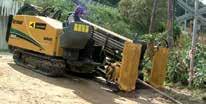


water & wastewater Our range of services include: • Pipe Bursting • Horizontal Directional Drilling • Pipe Rehabilitation • Slip Lining • Pipe Ramming • CCTV Inspection • Dewatering • Industrial Pipe Cleaning • HDPE Welding • Deep Excavation and Shoring • Underground Service Detection • Close-fit lining: COMPACT PIPE For more information you can contact us: +27 (0)21 761 3474 F +27 (0)21 797 1151 E info@tt-innovations.co.za www.tt-innovations.co.za
Technology Specialist
Trenchless
Structa Technology’s Prestanks are hygienically safe, cost effective and a reliable way to store water for commercial sectors, private sectors and even for personalized storage. Choose from temporary or permanent erection at mines, powerstations, building sites, hospitals, water affairs,municipalities, rural communities and agriculture.
Prestank tank capacities range from 1 500 litres to 4.2 million litres designed to SANS 10329:2004 guidelines and SANS structural codes. Our Hot Dipped Galvanising units are easily transported and assembled on even the most remote sites.

sustainable & long term
SOLUTIONS WATER STORAGE

Structa Technology is a now a Level 1 BBBEE contributor Manufactured in SOUTH

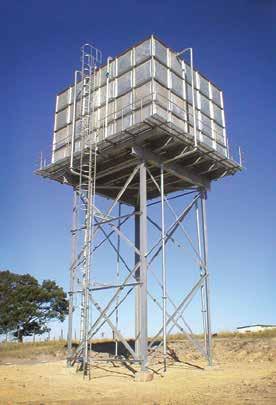
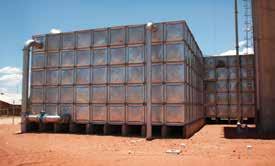

Pressed Steel Sectional Water Tanks
Specialists
in the manufacturing of domestic and industrial water storage
RODDY TANK
Robust steel tanks specifically intended for rural, domestic, industrial and agricultural water storage needs.
Roddy tank capacities range from 3900 - 10,000 litres and stands 5m and 10m high. Designs are based on SANS 10160 and our Hot Dipped Galvanised units are made according to SANS 121 (ISO 1461) standards.
MEYERTON | 0861 STRUCT (787828)
Email: watertanks@structatech.co.za
Director: Rodney Cory
Email: rodney@structatech.co.za
Tel: +27 (0)82 575 2275 and is 51% Black Owned of which 34% is Owned by Black Women (Designated)
www.prestank.co.za
AFRICA

What range of utilities services does Structa Technology provide?
Pc Our main aim is to support the public sector – specifically municipalities, water utilities, schools, hospitals and clinics – in its water infrastructure roll-out programme.
We are one of the preferred suppliers of water storage tanks to municipal authorities and mines because we are known to deliver on time and within budget, while adhering to the best quality standards. Our 40-year-old Prestank brand has proven itself as a hygienically safe, cost-effective and reliable way to store water for community, commercial and private needs.
How does Structa Technology partner with municipalities to improve service delivery?
Structa Technology not only provides municipalities with a durable product that is cost-effective and easy to maintain, but our philosophy
Specialised water storage solutions
Meyerton-based Structa Technology, a member of the Structa Group of Companies, provides much-needed water storage to rural communities throughout South Africa. ImIESA talks to Piet Coetzer, chairman: Structa Group, about the company’s range of products and services.
is to partner with local contractors for foundation construction and installation. In this way, we support the respective municipality’s localisation policy and create much-needed jobs.
Tell us more about Prestank’s storage capabilities.
Our Prestank water storage tank is the ideal water storage solution for volumes of 10 000 litres and above. Structa Prestanks are fully customisable, high-quality water storage solutions that are manufactured according to SANS guidelines and meet South African hot-dip galvanising requirements. They can be used for various water storage applications such as temporary or permanent installations at mines, power stations, building sites, hospitals, municipalities, rural communities and agriculture.
Prestank now also offers a wider range of associated tank products and services, which include:
• Roddy tanks, which are smaller,



welded-steel round tanks with up to 10 000 litres of capacity; these tanks are robust, durable and hot-dip galvanised, requiring minimal maintenance
• tank inlet and outlet piping for both small and large tanks
• foundation construction, and in some cases precast foundations
• tank refurbishment solutions.
What makes your products and services an ideal solution?
Structa’s pressed steel sectional tanks are hot-dip galvanised for corrosion control in accordance with the requirements of the SANS 121 (ISO 1461) galvanising standard. The thickness of the hot-dip galvanising coat is applied with a range of 80 µm to 100 µm – more than five times the thickness of zinc on pre-galvanised
corrugated steel cylindrical tanks. The purpose is to ensure an extended, maintenance-free life for the storage of water with aggressively corrosive properties. Structa prides itself on thorough engineering in the design and development of its respective tank ranges. The most modern finite element analysis techniques are employed in our product design and our tanks are thoroughly tested to withstand the requirements of SANS 10329, as well as being fatigue tested to ensure longevity of welds and panels.
All tank products are manufactured under ISO 9000 conforming quality programmes and all our products have a recorded material and manufacturing history, resulting in a top-quality, wellengineered product.
IMIESA October 2019 59
waTER & wa STE waTER
Piet Coetzer, chairman: Structa Group
Keeping urban dams clean and safe
Dams in urban areas can be either an asset for recreation or a liability if polluted. Measures like automatic scour and crest gates are highly effective in countering flotsam and sediment build-up while retaining optimum storage capacity.
By Peter townshend*
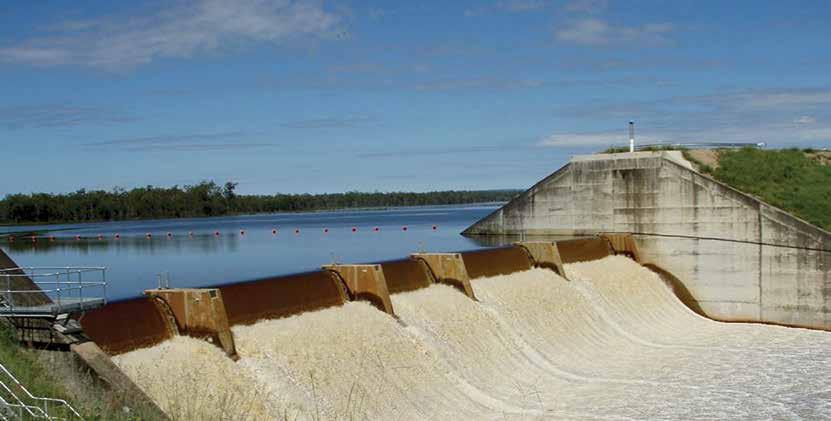
Dams such as Emmarentia
Dam in Johannesburg or the lakes in Benoni are attractive water features and enhance the quality of life for the community, especially where fishing and boating occur. These dams have catchments that are predominantly developed residential areas where the run-off has low pollution and litter loads.
ABOVE 2 m high crest gates
BELOW LEFT An effective litter trap upstream of the dam offers an advantage in reducing the eyesore view of litter strewn along the banks and the biodegradable material in the dam
However, dams on watercourses that drain from high-density city areas or developing sites with informal settlements can and have


caused considerable problems and are then liabilities for the local authority.
One such feature was Bruma Lake on the Jukskei watercourse, which drains from the high-density areas of Hillbrow and Berea in Johannesburg. Initially, it was a big attraction with prestigious office blocks, shops and restaurants on the waterfront; however, over the years, it became highly polluted

An automatic scour gate discharging sediment-laden water from a river weir

60 IMIESA October 2019
d ams & water stora G e


and an environmental hazard. The standing polluted water with high E. coli counts became anaerobic, releasing unpleasant odours.
Further litter and debris, emanating from urban areas, were strewn along the watercourse and in the lake.
The Bruma Lake problem was solved by filling it in and returning the watercourse to a natural stream. Similar adverse conditions were also experienced at Centurion Lake on the Hennops River, also resulting in its eventual drainage and closure.
Countermeasures
Given rising pollution trends, there’s a fair chance that similar problems are currently developing or occurring at other water features and dams in urban areas or municipal boundaries across South Africa. The good news is that there are ways to improve the functioning of such dams.
Automatic scour gates can be fitted to the base of the dam spillway or embankment; these open automatically when the water level rises in the event of a heavy rainstorm in the catchment. A considerable amount of sediment emanates from disturbed development and building sites, which accumulates in the dam. This can soon render the dam ineffective, which was the case with Rattray’s Weir on the Braamfontein spruit in Randburg. It was once a pleasure resort in the early 1900s, with boating and fishing, but is now totally silted up.
The scour gates will open automatically in heavy flows to pass the sediment through the dam or weir while the sediment is still in suspension or rolling on the river bed. The gates will then close automatically to retain the full supply level.
It is possible to allow the scour gates to draw down the water level in the dam slightly below the full level and then close so that the dam fills with relatively clean antecedent run-off.
The gates can also be opened manually to drain the water feature, if necessary, to clean it out occasionally.
Scour and crest gates
Automatic gates fitted to the crest of the spillway will also open automatically in floods to decant the debris- and flotsam-laden surface water from the dam. They also close automatically after the flood has passed to retain the full water level. A combination of scour and crest gates works well on low spillway heights of up to 12 m, to keep the dam relatively free of sediment and pollution. An effective litter trap upstream of the dam offers an advantage in reducing the eyesore view of litter strewn along the banks and the biodegradable material in the dam.
Automatic spillway gates can also be used to increase the storage capacity of urban dams, especially those that have extractions for water treatment works or urban irrigation. Again, these gates will open automatically to pass floods and close again to retain the full supply level.
By using these gates, small dams have had their capacity doubled following a water rise increase of as little as 600 mm. Larger regional dams would benefit with larger gates, which can increase storage capacity by about 50% depending on the dam characteristics.
With droughts more common now as a result of global warming, additional storage in regional supply dams is important. These gates can be fitted within a few months and meet dam safety requirements.
*Peter Townshend, Pr Eng, is the managing director of Amanziflow Projects.
For further details, visit www.amanziflow.com




Practical solutions to avoid conflict and disputes in construction contracts
Dispute avoidance is not rocket science – it is simply applying common sense, working methodically, being proactive and recording and filing information systematically. All members of the construction team need to be on board to make this possible. By
natalie Reyneke*
Dispute resolution procedures in a contract may be timeconsuming and expensive. Generally, parties use legal experts to draw up adjudication or arbitration papers because disputes often involve complex contractual issues. Ideally, the parties to a construction contract should try to avoid the dispute arising at all. But how practical is this?
There are various stages of project execution, including agreeing on a common project definition, as well as business planning and risk identification. The aim is to finish the project on time, within budget and to quality requirements.
At municipal level, tendering procedures are governed by legislation, but there does not seem to be a requirement
 Natalie Reyneke, associate, MDA Attorneys
Natalie Reyneke, associate, MDA Attorneys
62 IMIESA October 2019
Constru C t I on l aw
to use the most appropriate contract form for works. All too often, we see service-level agreements appropriate for air-conditioner maintenance services, for example, included with RFQs for completely different works, like the design and build of a water treatment plant.
Pre-contract
Avoiding conflicts and disputes during the project execution or construction phase begins before the contract is even signed. There are various contracting options, procurement methods and execution methods for both the design and construction phases. Not only is the work in each phase quite different, the risks are also different and, therefore, the project team needs a good understanding of the various options. For instance, a design and build contract may make it difficult for an employer to change a poorly designed brief without incurring significant delays and additional costs. When the project documentation lacks crucial information, disputes may arise that could have been avoided had sufficient consideration been given to all options and stages of the project.

from the contractor. The quality and presentation of construction information can also have serious consequences for the contractor – errors in dimensions, and contradicting information between drawings, specifications and bills of quantities are two examples.
Practical tips from a construction law specialist
agreed-on time period or risk being in default of the contract.
Documentation and legality
Documentation is required for construction projects across all methods of construction. It is crucial that contracts and documentation are appropriate to the construction works.
Before construction can begin, all statutory requirements must have been complied with or the instruction to commence would be outside of the law. If so, the contractor can refuse to work. Contractors can claim for time extensions and costs in the event that they are issued with a stop order by an inspector from the local authority. This is often the first delay event claimed on a project.
While it sounds obvious, required information needs to align with the construction programme. Assuming that the construction programme accepted by all parties is reasonable, issuing information late could give rise to claims
Effective and proper communication under a contract is key. To achieve this, I advise clients to establish a communication protocol in the early phases of the project. Create stationery for the project that clearly identifies the purpose of each document (contract instruction, notice, certificate, etc.) to make it simpler to act appropriately and file all communications. Similarly, drawings should be clearly identified so that all parties immediately know whether they should be regarded as preliminary, for construction, or for information only. Reports, meeting minutes and instructions should be concise, use short sentences and communicate in simple English. Project kick-off workshops can be extremely valuable to the project team. All members of the project team should be present to gain a proper understanding of the content of the contract, lines of communication, expectations, rights and obligations.
There are a number of standard-form contracts used in the construction industry, and although the principles and concepts are the same, they each contain specific guides to the execution of the works, situations when either party needs to give notice, respond to instructions and to make payment within an
Nobody likes to serve notices – it is uncomfortable and often feels confrontational. For this reason, I explain to clients that it is the employer who provides the contractor with the contract. By doing so, the employer invites the use of the provisions of the contract, including claims provisions. Whatever you do, don’t put the contract into ‘file 13’ and pull it out when something goes wrong! Proper recordkeeping of communications is vital (particularly notices that comply with the contract), design documentation, instructions, payment certificates and programme revisions. All standard-form contracts incorporate dispute resolution clauses and envisage amicable settlement. Being organised and ensuring your claim is valid will encourage the other party to seek a resolution before proceeding moving to adjudication or arbitration. In my experience, submitting a poorly set-out and documented claim does not encourage the assessing engineer or project manager to find in your favour. Even though the claim may be valid, this is a breeding ground for disputes.
My parting advice is to be clear about what constitutes completion of the works, as the various standard-form contracts use different terminology when it comes to completion (practical completion versus taking over of the works, for example). It is generally accepted that a project is not complete until all relevant paperwork has been completed – this applies to ‘as-built documentation’, product or service warranties, and operational information needed by the employer to operate and maintain the building or plant over its lifespan.
When payment terms are structured around the achievement of this milestone (or any milestone, for that matter), it is key to have a properly defined trigger for that payment. Once the contractor’s specified obligations have been completed, the contract administrator will issue a certificate of completion, which generally commences the defects liability period.
*Natalie Reyneke is an associate at MDA Attorneys.
IMIESA October 2019 63
CONSTR u CTION law
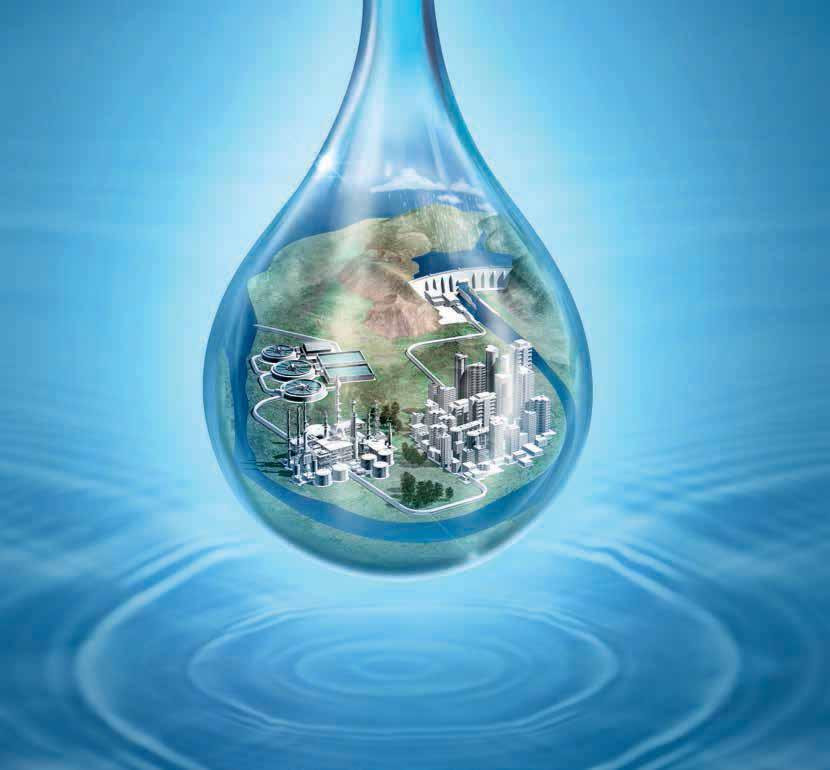
The cycle of solutions –water technology by KSB
Water is crucial for our survival – for every one of us, for all nations and peoples. Clean water supplies and efficient sewage treatment have never been more important. Prosperity and well-being depend on it, worldwide. KSB’s know-how and extensive pumps and valves product range help you meet all water supply and treatment requirements, efficiently and affordably. We are one of the few suppliers worldwide with endto-end solutions addressing all stages of the water cycle – from water extraction to sewage treatment.
KSB Pumps and Valves (Pty) Ltd
www.ksbpumps.co.za
Tel: +27 11 876-5600

Our technology. Your success. Pumps n Valves n Service

Take a look inside your pipes
South Africa’s ageing pipeline infrastructure is under increasing stress. Pipe condition assessment allows utility owners to assess the deterioration and remaining life of pipelines to inform asset maintenance and replacement strategies.
Averda’s Pipe Inspection Division is responsible for assessing the condition of underground waste systems, namely sewer, stormwater and effluent pipelines.
Using specialised equipment designed to monitor the performance or structural integrity of these pipelines, Averda is able to supply clients with accurate, repeatable data to inform asset management strategies.
CCTV pipe inspection cameras are used to assess or inspect the condition of these pipelines, providing a visual indication of the repair and/or maintenance requirements.
Added to this is laser pipe profiling technology, which measures any deformation or corrosion within these pipelines that cannot be determined with CCTV alone.
Using the combined technologies, it is possible to determine the maximum corrosion, debris and ovality.

Benefits of Averda’s services
Clients are faced with a myriad of problems relating to poorly performing pipeline infrastructure. These can include:
1 The pipelines have already collapsed or are blocked and overflowing, therefore polluting the environment and damaging other infrastructure such as streets, roads and buildings.
2 The sewer or stormwater system is not functioning properly and maintenance is required.
3 An assessment is required to determine the cause of a problem in a pipeline, often a result of a lack of maintenance.
4
The client is not aware of the location or condition of its pipelines.
5 The client requires verification or quality assurance on the workmanship of a newly installed pipeline. Before a catastrophic pipeline

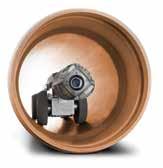
failure occurs, Averda can inspect and pinpoint the exact location of the problem. By proactively assessing the condition of the pipeline, data is collected and clients are advised on the best solution to the problem – this can be either to repair or maintain. Averda can give a report on defects and costs of repairs and maintenance, while advising on best practice and the best solutions for the client. This helps inform the client’s decision as to whether to rehabilitate or replace infrastructure, while also prioritising their budget spend. Condition assessment should always precede rehabilitation. The ultimate benefit of proactively assessing the condition of pipelines is that Averda can also develop a detailed map of underground pipeline infrastructure using geographic information systems (GIS) to produce an accurate asset register.
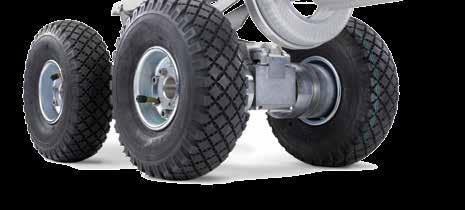
IMIESA October 2019 65 pI pes, pumps & valves
www.averda.com













it us at stand
Optimising multistage performance
High-head pumps play a critical role in areas like bulk water delivery, which makes selecting the right product equally important.
AProudly South African company, Mather+Platt and its group company APE
Pumps are original equipment manufacturers (OEMs) with a product history in the local market dating back to 1952.
Mather+Platt manufactures horizontal multistage pumps designed for high-pressure applications, and split-case pumps chiefly for high volumes. In turn, APE Pumps specialises in the design and manufacture of vertical industrial turbine pumps, split-case and endsuction pumps for most industries. APE

Pumps and Mather+Platt also provide an installation and commissioning service. All products are designed, cast and assembled in South Africa.
What sets them apart is their ability to devise standard and custom-designed solutions across the entire fluid transfer spectrum. Within the public sector, this includes bulk water transfer systems for municipalities and utilities. Here, Mather+Platt leads with its PL/PJ range of multistage centrifugal pumps.
High-head
duties
These pumps, available either in horizontal or vertical configuration, are designed for a wide range of high-head duties at sustained highest efficiencies. This makes them particularly well suited for applications that include high-lift mine drainage duties, mainline water supply, and high-pressure boiler feed pumps operating at elevated temperatures. They feature a heavy-duty, ringsection design and robust fabrication.
Incorporating the latest hydraulic design principles, the materials used in their construction are selected to ensure the compatibility of rotating and stationary wearing parts, combined with high corrosion and erosion resistance.
The end result is prolonged life, sustained efficiency and low maintenance costs.
High heads are achieved at standard direct coupled motor speeds of 1 480 rpm for PJ pumps and 2 960 rpm for PL units, both generated via a 50 Hz electrical supply. These pumps are also suitable for operation at other speeds, including those applying when direct coupled to two- or four-pole motors fed by a 60 Hz supply. A key benefit of these pumps is their relatively compact size and energy savings.
The PL/PJ system design further allows for direct drive from power recovery water turbines of the Pelton wheel type and for direct or indirect drive from virtually all other alternative forms of prime mover.
“Every project and installation has its unique requirements and we have the in-house design and engineering expertise to devise the optimal pump and process match,” says John Montgomery, general manager, APE Pumps and Mather+Platt. “That includes the need for ease of access during routine maintenance.”
On these pumps, the bearing brackets and bearing bushes are designed with a horizontal split along the centre line. The main advantage is the ability to strip the bearing assembly without disturbing the alignment of the element, and without having to remove the pump, half coupling or driving unit. Additionally, the bearing brackets are supported at the top and bottom, thereby avoiding distortion of bearing bush/shaft alignment when the pump is under pressure.
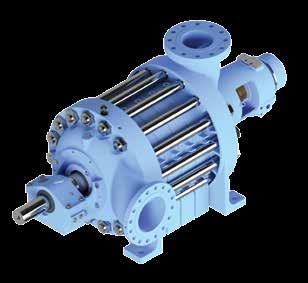
The balance valve assembly is designed to enable the wearing parts to be replaced at minor cost. The stainless steel balance valve head will never have to be replaced, since it’s provided with a separate wear face.
“This is one of a series of examples of how we build durability and practicality into our PL and PJ series,” Montgomery concludes.
IMIESA October 2019 67
pI pes, pumps & valves
The PJ250AS vertical five-stage model manufactured by Mather+Platt
A Mather+Platt
PJ250H five-stage horizontal pump
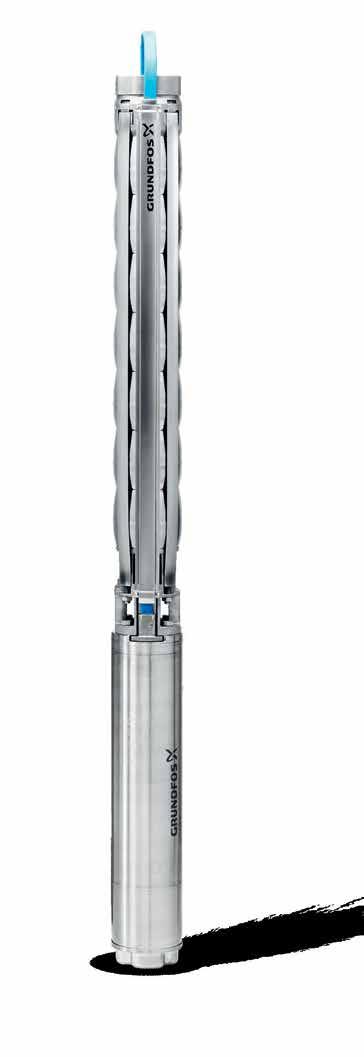
HOW DOES CORROSION AFFECT YOUR SYSTEMS?
REDUCE THE RISK OF DAMAGES WITH GRUNDFOS SP PUMPS


100% HIGH-GRADE STAINLESS STEEL
The SP is manufactured with AISI 304 Stainless steel inside and out to ensure durability and reliability. Extra high-grade stainless steel variants for aggressive liquids are available.
GRUNDFOS SUBMERSIBLE SOLUTIONS DELIVERING PUMP SYSTEMS WITH NO SURPRISES
Our complete system combines a SP submersible pump, an MS/MMS motor made to match the pump, a dedicated electronic motor protection unit or variable speed drive, plus a remote management system. One of the biggest benefits of applying this complete SP system is a significant savings potential.
For more information or to find your nearest Grundfos Distributor, visit za.grundfos.com/campaigns/submersible-solutions



Trademarks displayed in this material, including but not limited to Grundfos, the Grundfos logo and “be think innovate” are registered trademarks owned by The Grundfos Group. All rights reserved. © 2019 Grundfos Holding A/S, all rights reserved.
Relief for drought-stricken Sutherland
An ongoing six-year drought in Sutherland in the Karoo is having hard-hitting effects on farmers and their livestock, as water levels continue to drop.
Although farmers generally prepare for oneto two-year droughts, the current extended drought has left Sutherland’s terrain under severe stress, with underground water tables dropping and plant life dying off.
Sheep farming forms the backbone of the Sutherland economy, with the number of sheep in the area typically amounting to around 400 000. In April, Sutherland’s sheep population sat at just 57 000, as sheep continue to die in high numbers due to hunger or being unable to fight bacteria as a result of the drought.
The economy has taken a severe knock and farmers, farm workers, and all the families who are dependent on farming in the area are facing increasing financial stress. Although the area is expecting to receive rain, it is predicted that the rains will only allow sufficient food growth of 30% for the current livestock numbers. That means that the area will be dependent on donations and feed being brought in from outside areas.
The Karoo, the central high plateau of South Africa, gets as little as 400 mm of rain annually, which falls mainly in summer. The winter months are almost completely dry. Sutherland itself sees about 243 mm of precipitation annually.
The Gouritz River catchment area that covers the bulk of the Karoo region has seen an increase in average dam levels for the first time in 2019. That average level currently stands at 19.3%. This includes the Gamka Dam in Beaufort West, which is currently only 9.4% full.
Grundfos brings relief
Through the Save the Sheep campaign, a
allow for pipes to be sunk deep enough to access the currently available water.
Grundfos, together with Gift of the Givers and Save the Sheep, stepped in to assist with drilling for water in the area for all farmers who need it. The demand quickly grew for water to be pumped for livestock as well as irrigation.
Grundfos has been assisting with drilling boreholes and the installation of pumps, enabling farmers to access the area’s groundwater resources. An offer was also made to farmers of an additional pump bundled into the purchase of the initial discounted purchase price.
The company’s installation agents are putting together pumps with all the necessary infrastructure in place so that farmers only need put the pump in the hole and connect the switch. This means that in less than 45 minutes, the whole pump is set up and water is flowing. Currently, just over 130 holes are left to be bored.
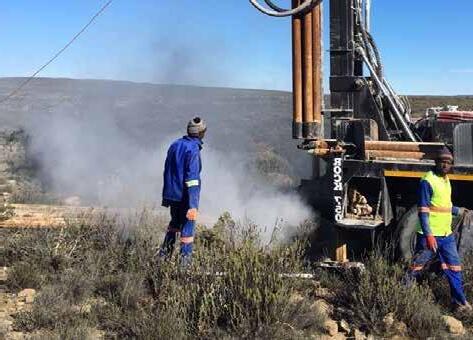
“Nothing prepares you for what these farmers are going through. To see tears roll over the cheeks of a farmer at the first site of water really affirms why we do what we do,” says Willandri Cockroft, marketing manager, Grundfos South Africa.
The first 30 pumps have been bought and, at the current rate, are pumping more water than was expected. Gift of the Givers is helping to finance the pumps to ensure greater affordability for farmers in the area. Starting with Sutherland, the goal is to spread to the rest of the Karoo, providing muchneeded relief as far as possible.
The Karoo, the central high plateau of South Africa, gets as little as 400 mm of rain annually, which falls mainly in summer




pI pes, pumps & valves IMIESA October 2019 69


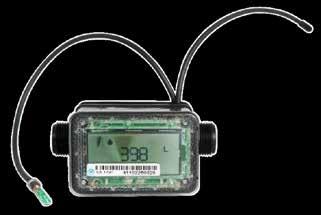

www.utility-systems.co.za enquiries@utility-systems.co.za +27 31 700 4143
RE-IMAGINED LOOK. SAME TECHNOLOGY-DRIVEN COMPANY. SMART WATER MANAGEMENT
Debunking the myths around HDPE mechanical joining
Although fusion is often considered the top joining method for HDPE, Marcel Ley, regional manager, Victaulic South Africa, argues that mechanical joining is the best method to ensure job site safety, reduce completion time and provide financial benefits.
For years, butt fusion and electrofusion have been considered the top joining methods for HDPE piping; however, Ley argues that people commonly overestimate the performance advantages of fusion and, until now, it has been widely accepted as the easiest, most efficient method for joining HDPE pipe.
Although mechanical joints are widely embraced in metallic piping applications, many highlight concerns surrounding the performance and reliability factors of mechanical joints in relation to HDPE piping. According to Ley, many myths still persist across various industries, leading practitioners to believe that mechanical joining is not a suitable method to consider.
Myth 1
The first myth is that HDPE piping with mechanical joints does not perform optimally when buried.
“Victaulic’s mechanical joints have been specifically designed with buried applications in mind. Victaulic’s products have been fabricated out of durable ductile iron housings and fluoropolymer-coated hardware, ensuring that Victaulic couplings are protected against an array of conditions,” says Ley.
If additional protection is required, supplementary coating and wrap options are available.
Myth 2
The second myth surrounds the concern that fusing provides stronger joints. According to Ley, recent data and studies may prove otherwise.
“Fused joints are susceptible to a number of variables such as the skill of the technician, surface contamination, and hot or cold conditions – all impact the overall integrity of the joint. Further, there are currently no visual

or non-destructive manners in which to inspect the quality of the joint,” he says.
Myth 3
Third, many believe that grooving pipe ends creates a point of weakness; however, Victaulic solutions have been designed specifically to allow the coupling keys to engage the groove profile, therefore providing a fully restrained joint up to the working pressure of the pipe. Victaulic’s grooving tools, and training on their operation, ensure that the grooves are tightly controlled within the design specifications. Moreover, the joint is designed so that the groove is filled with the keys on the coupling’s metal housing. Essentially, the reduced pipewall thickness at the groove is reinforced by a restrained ring of iron – a much stronger material than HDPE to begin with. This design adds to the strength of the joint, rather than detracts from it.
Myth 4
“Another myth is that the method of fusing remains a faster alternative to joining; and although many may believe this, the reality is
that fusing HDPE is a slow process, even in ideal conditions,” says Ley.
Variables ranging from weather conditions to the skill of installers and the quality of their machinery impact the success of the joint. Victaulic couplings ensure an installation time 10 times faster than fusing, using only simple hand tools. The installation of the joint is not determined by weather conditions, and offers the ideal solution to joints in tighter spaces.
Myth 5
Finally, many believe that mechanical coupling solutions are expensive alternatives. As mechanical couplings are faster and easier to install, and require little maintenance, projects are able to save on labour and skilled installation costs, which will ultimately negate the cost of the couplings, explains Ley.
“As a global innovator in mechanical pipe joining solutions, Victaulic continues to transform various industries with the most advanced engineering technologies and services that allow customers to tackle even the most unique construction challenges.”
IMIESA October 2019 71 pI pes, pumps & valves


Housing as urbanism
The legacy of apartheid has left South African cities sprawled and racially segregated. But this current urban form is socially, environmentally, politically and financially unsustainable. The concept of ‘housing as urbanism’ can help to address this going forward. By Brendon van niekerk*
The concept of ‘housing as urbanism’ considers the social, political and economic components of housing. This, in reality, translates to housing that is closer to employment, municipal services, public spaces, healthcare, schooling and social services, while also providing the household with the physical infrastructure necessary for good quality of life.
However, these considerations have not been included in the mass roll-out of lowincome housing programmes in South Africa. This monofunctional urban sprawl has led to a very inefficient urban form.
A series of case studies show that, in South Africa, a more compact urban form is not necessarily less expensive than a sprawled urban form. However, over the long term, the overall cost of housing developments that are better located, subscribing broadly to the principles of ‘housing as urbanism’, is likely to be less expensive to both municipalities and residents.
Housing policy
To date, planning laws in South Africa seem to have had little impact on the reversal of the spatial structure of the ‘apartheid city’. The state-led Reconstruction and Development Programme (RDP), which offered free housing to the poor, led to further monofunctional land use and urban
sprawl, and the concentration of the urban poor on peripheral, poorly serviced land.
More recently, however, there has been a significant shift towards sustainable urban integration and densification in the latest government policy – the Integrated Urban Development Framework. The logic for a move towards densification and compaction appears to be informed by social, environmental and redistributive economic arguments, and should work to improve the urban poor’s access to the ‘urban advantage’.
The challenges of South African cities
Although South African cities have made significant progress in the provision of services over the past 20 years, the general consensus is that South African cities are spatially fragmented, unequal and sprawled.
The morphology of South African cities has been called one of the most visible and enduring physical legacies of the apartheid era. These cities are characterised by a fractured spatial make-up, poor-quality public transport systems and peripheral lowincome settlements made up of generally substandard and inappropriate housing. South African cities have also been called exclusionary based on the peripheral location of many poor urban residents.
Settlements of the urban poor are generally located far from economic opportunities, leading to pockets of wealth and poverty, ultimately reinforcing inequality and further burdening poor households.
The constraint of mobility is still in place in the form of distance to employment opportunities, price of transport, lack of adequate and well-maintained transport infrastructure, and the perceived lack of safety of the available transport options.
More than 50% of South African urban households spend more than 20% of their monthly household income on transportrelated costs.
Case study: Pretoria
In 2000, a study in the metropolitan area of greater Pretoria (now Tshwane) investigated whether the government’s promotion of densification and compaction would decrease the capital cost of providing water, sanitation and electricity due to economies of scale.
The study applied a ‘bulk infrastructure potential cost model’, which found that the capital costs of providing bulk infrastructure per capita does not simply decrease in areas that are denser and/or centrally located.
In the case of Tshwane, it was concluded that there is no linear relationship between density, distance to city centre, and capital
72 IMIESA October 2019 Human s ettlements
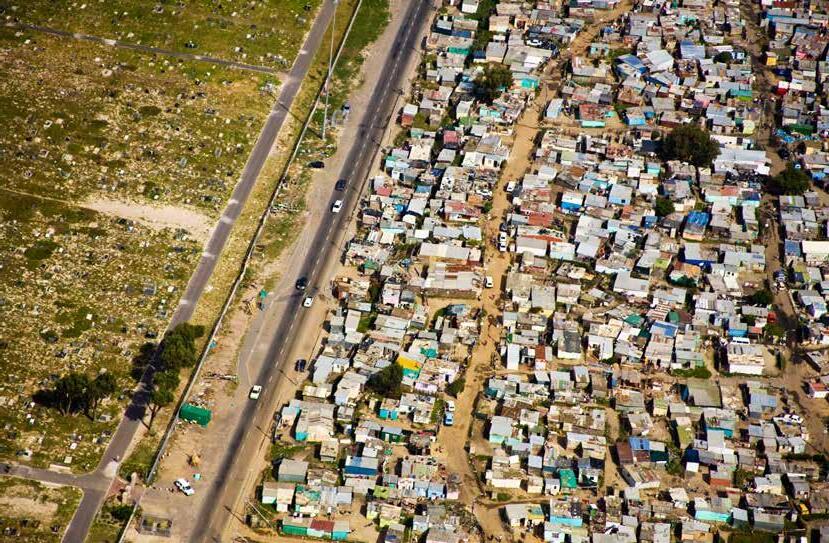
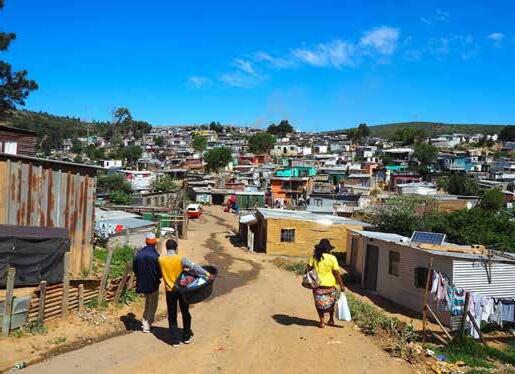
costs of infrastructure. Total capital costs increased with increasing density for all services but for water and sanitation, they decreased on a per capita basis up until a point, after which they begin to increase. Topographical factors increase the costs of water and sanitation infrastructure provision drastically. Electricity capital costs increase on a per capita basis for increasing density. It was thus concluded that the sitespecific factors make the transference of any finding from this or any other study regarding the capital costs for water, sanitation and electricity for differing density development inappropriate.
Case study: hypothetical cities
In 2011, the Financial and Fiscal Commission of South Africa commissioned PDG to determine whether sprawl in South
African cities leads to a less-efficient city, looking at the capital and operating costs of transport, municipal infrastructure, land and housing over a 10-year period.
A ‘city efficiency costing model’ was applied to two hypothetical cities: a sprawled city and a compact city, both based on the similar characteristics that South African cities share as a result of apartheid planning policies and housing subsidy structures.
The study considered the costs of new infrastructure and the renewal of existing infrastructure, and the operating costs of municipal services. It concluded that, over a 10-year period, a sprawled city is more expensive than a compact city.
The capital costs for the sprawled scenario were found to be 2.1% more expensive, while the operating costs of the compact city were 7% lower, amounting to approximately
R6.8 billion per annum over 10 years. Households of all incomes would pay less in the compact scenario.
The report states that if the findings are extrapolated to the six largest cities in South Africa, the difference between the two scenarios would be around 1.4% of GDP by year 10, increasing with time.
Case study: eThekwini and Johannesburg
An empirical investigation was carried out in 2004, in eight areas in eThekwini and Johannesburg, to assess the actual costs and benefits of the location of housing in the lives of urban residents.
It was found that the cost of land varied between centrally located and peripherally located areas, as well as within these areas themselves. The cost of providing bulk infrastructure to new settlements also varied according to the excess capacity in the system and the need for further upgrades.
Sites located further from the CBD incur higher transport costs. However, in some areas, the proximity to middle- and upper-income residential areas was more important, due to employment of informal,
IMIESA October 2019 73 Contra C tor d evelopment Human s ettlements

unskilled labour in these areas. The size of the entire metropolitan area, rather than location within it, as well as modal choice, is also an important factor.
The findings that emerged do not support the hypothesis that more central locations have lower overall costs and offer higher benefits. A more nuanced perspective on location, rather than the dichotic ‘central’ and ‘peripheral’, is necessary.
Case study: Western Cape
In 2013, a fiscal impact study was conducted on the financial sustainability of current growth patterns in cities of the Western Cape.
A ‘municipal services financial model’ was used to calculate the municipal financial sustainability of seven municipalities based on different urban growth patterns over a 10-year period.
The findings showed a 17% decrease in capital expenditure and a 20% reduction in operating expenditure over 10 years in the more compact scenario. The negative financial impact of sprawl was also more significant in larger towns, again reinforcing the notion that overall urban size does matter.
The study also found that low-income households in many of the municipalities were unable to afford transport, and were therefore ‘trapped’ where they live. For example, the spatial growth patterns would result in low-income households in Cape Town spending approximately 18% more on transport than in a more compact scenario.
Case study: Cape Town
Another study investigated whether the higher capital cost of low-income housing in well-located areas in Cape Town would
be less than the cost of providing transport services to an equivalent site in a peripherally located area over a 20-year period.
Two subsidised housing developments, Greenville and Heideveld (see Figure 1), were selected. Greenville is a large, outlying development with low levels of accessibility to the CBD and low land values. Heideveld is a medium-sized development with a moderate level of accessibility and moderate land values.
The study showed that transport was the main cost differential between the sites.
The net present value (NPV) of the capital costs of the more centrally located site is R12 million higher than the peripheral site; however, this is more than offset by the NPV of the operating costs, which are R37 million cheaper for the centrally located site.
This difference in the operating costs is predominately due to the difference in transport expenditure.
A new policy direction?
South Africa’s cities are sprawling, despite government’s current attempts at controlling it.
Regrettably, low-income housing that conforms to principles of urbanism has largely been seen as unnecessary and not worth the additional bureaucratic processes and capital outlay to develop. The fiscal framework and Housing Code have also, until recently, dis-incentivised municipalities to construct urbanist housing.
Unfortunately, the factors that influence the sprawled versus compact
FIGURE 1 Greenville and Heideveld case study locations
city debate are too numerous and complex for conclusive findings to be made generically. In order to make decisions that can impact less negatively on both the municipal fiscus and the expenditure of the inhabitants, municipalities should include an analysis into the long-term financial impact of a development in the planning approval process. The factors which need to be considered include infrastructure thresholds, capacities, location, land-use mix, and density variations over time and space.
When social or low-income housing is being considered, the long-term costs to the inhabitant should be an important consideration to the municipality, including economic, social, environment and political factors.
A targeted approach to densification and transit-oriented development can achieve the objectives of ‘housing as urbanism’ and, consequently, a more efficient city. A more nuanced understanding of the true fiscal and financial costs of developments that accrue due to their location in space can lead to better decision-making.
It is clear that decisions that consider the principles of ‘housing as urbanism’ can assist in the creation of a more efficient urban form, freeing up resources for both urban residents and public sector organisations alike.
*Brendon van Niekerk is a consultant at PDG. Contact the author at brendon@pdg.co.za.

74 IMIESA October 2019 Human s ettlements

Old landfills – a resource tank waiting to be unlocked?
The future management of old landfills can offer sustainability and economic benefits, or it can be a huge liability. By neeraj mannie*
Over its life, a landfill receives a plethora of disposed-of products and materials.
With the current focus on sustainable business practices and creating circular economies due to the over-use and depletion of virgin materials, manufacturers are forced to reconsider the use of such materials or how can they recover them from landfills as a source of new supply.
A viable alternative
To meet sustainability initiatives, consideration needs to be given to the viability of material recovery from old landfills and the management of the remnants of these landfills, noting environmental and social management.
As we are all aware, there is a global drive to reduce methane emissions from landfills, local pollution and impacts on communities. If we were to look at remediating landfills, the costs are likely to be significant and could be prohibitive to executing remediation.
However, if stakeholders considered the recovery and recycling of viable products (provided there is a sizeable market), then the cost of remediation will be a lot lower and the net effect of impact will be reduced.
Challenges
There are, however, challenges to resource recovery from landfills. The contamination of recyclable materials poses a major risk, as not all materials can be effectively recovered. The costs of decontamination could also be much greater, making it economically unviable. Meeting standards for product quality assurance will be challenging.
The size and type of landfill operation, along with the waste characterisation or accurate records of waste streams deposited in the landfill, are needed. Knowledge of the volume of soil cover placed in each lift will also give an indicator of the time and cost required to remove the soil. For industrial landfills, a good record of the amount of hazardous waste disposed of at the landfill is important, as a leaching toxicity test needs to be undertaken.
Furthermore, plans for where the excess waste will be stored, the types of machinery to be used to excavate the waste and the on-site separation or recovery process, odour and health and safety considerations, and the capital investment are key determinants in the feasibility assessment.
Other notable concerns are the potential social and environmental impacts that the
recovery process could create in the area in which it is undertaken. Risks need to be accounted for and the associated costs factored into the assessment of the project.
Overcoming the challenges
To overcome some of these challenges, a critical assessment of all the challenges needs to be done, and extensive planning with the various teams is needed. To ensure economic success, having secured the market for the materials is going to be the project driver as will agreeing on the quality at which the recovered materials will be delivered.
The advent of the Fourth Industrial Revolution can provide the technology to undertake material recovery from landfills, digitising the entire resource process to effectively manage the project. Waste-toenergy projects could also benefit from material recovery, as there are sources of materials with high calorific value. Through proper due diligence, a reasonable decision can be made to determine whether an old landfill offers the economic potential one is looking for.
*Neeraj ‘Nick’ Mannie is a specialist advisor at Mannie Inc. – mwmannie@mweb.co.za.
IMIESA October 2019 75
waste m ana G ement
BIENNIAL PROJECT


TUESDAY
27TH OCTOBER 2020
CAPE TOWN

To recognise outstanding achievements in municipal infrastructure, we are calling for entries that showcase projects that demonstrate the best of civil engineering as a science and how engineering enhances the lives of the local communities, through excellence in:
Planning and design
Construction methods

Innovation and originality
Meeting social and technical challenges
Contributing to the well-being of communities
CATEGORIES

1


ENGINEERING EXCELLENCE IN STRUCTURES & CIVILS
E.g. Projects demonstrating engineering science, use of alternate materials, innovative construction processes, etc.

2 3
COMMUNITY UPLIFTMENT & JOB CREATION

ENVIRONMENT & CLIMATE CHANGE

E.g. Projects demonstrating labour-intensive construction, skills development, community awareness/participation, etc.


E.g. Environmental rehabilitation, renewable energy, drought solutions, coastal initiatives for rising sea levels, pollution control, educational/ technical initiatives, etc.

CLOSING DATE FOR SUBMISSIONS
13 JULY 2020


Only projects that have reached practical or substantive completion by 30 June 2020 will be accepted for the Excellence Awards.
Adjudicators reserve the right to reallocate entries in the 3 categories.
ENTRY FORMS AND AWARD CRITERIA
Available for download on the website: www.imesa.org.za






EXCELLENCE
CALL
ENTRIES
AWARDS
FOR
IMESA THE INSTITUTE OF MUNICIPAL ENGINEERING OF SOUTHERN AFRICA (IMESA)
QUESTIONS Contact
on +27 (0)31 266 3263 or email conference@imesa.org.za
Debbie Anderson
The disposal of liquid waste in landfills, as well as hazardous waste exceeding a calorific value of 20 MJ/kg, is now banned –effective 23 August 2019 – forcing a change in the way industry manages these waste streams.
Section 5 (1) (a–u), as well as Section 5 (2) (a–c), of the National Norms and Standards for the Disposal of Waste to Landfill (GN R 636 of 23 August 2013) provides for a non-exhaustive list of waste types that are prohibited from disposal to landfill in South Africa. These include reactive wastes, recyclable waste oils, whole waste tyres, lamps and lead acid batteries.

 Kate Stubbs, director: business development and marketing, Interwaste
Kate Stubbs, director: business development and marketing, Interwaste

Landfill ban presents opportunities
“While many businesses may not yet have prepared for this new legislative framework, there are already available solutions that are targeted towards complying with this new legislation,” explains Kate Stubbs, director: business development and marketing, Interwaste.
Interwaste has developed significant capacity over the years for the treatment, recycling and/ or recovery of qualifying wastes at its licensed waste management facilities. Examples include the recycling of qualifying liquid and hazardous sludge wastes (with CV >20 MJ/kg)
via Interwaste’s blending facility in Germiston, Gauteng. The end product is a waste-derived fuel intended for industrial applications.
“As government aims towards a circular economy and improving our environmental standards as a country, there will no doubt be further stringent legislation down the line,” Stubbs continues.
“As such, it is up to us as waste companies to take a proactive approach by seeking relevant investment and technology development opportunities for alternative waste disposal solutions,” Stubbs concludes.

October 2019 77 JS305 EXCAVATOR THE POWER TO EXCEL Best Business Decision JOHANNESBURG: 011 826 6710 MIDDELBURG: 013 244 1839 PRETORIA: 012 548 2956 BLOEMFONTEIN: 051 432 3978 DURBAN: 031 700 8278 RICHARDS BAY: 035 751 2718 CAPE TOWN: 021 949 7442 PORT-ELIZABETH: 041 453 1819 EAST-LONDON: 043 732 1902 GEORGE: 044 878 0366 MTHATHA: 047 531 1688 CONTACT YOUR NEAREST BRANCH TODAY: Genuine parts 24/7/365 Service Multifunctional Operation Asset Finance to suit your needs Exclusive JCB Finance financial offers Lead-in period & skip payments available Various configuration options available waste m ana G ement
IMIESA

f loors that don’t crack
Shortly after the construction of a new industrial building, severe settlement cracking was observed in its concrete floors, demanding urgent attention. The client, Graham Beck Wine Estate, had specified a flooring system designed to withstand low to heavy traffic. The flooring surface also needed to have an attractive and clean finish. In the end, this was achieved following intensive remedial works.
As a starting point, Sika recommended the application of Sikadur-52 ZA – a two-
part, low-viscosity, injection-liquid based on high-strength epoxy resins. This product was used to fill and seal the cracks in the concrete floors. Following advice from Sika’s technical specialists, a waiting period of three to four weeks followed to ensure the complete sealing

of the existing cracks, and to check that no further cracking had occurred.
After first priming the concrete floor substrate with Sikafloor-161 – a two-part, low-viscosity epoxy resin – Epoxy Flooring Systems applied the PurCem floor coatings. The one specified for the low to medium traffic areas was Sikafloor-21N PurCem. This is a multicomponent, medium- to high-strength, coloured, polyurethane-modified cement and aggregate screed with self-smoothing properties. It was selected for a smooth, flat and decorative wearing surface. A 4 mm layer was applied on the low to medium traffic areas.
For the medium to high loading and high traffic areas requiring a more durable floor coating, Sikafloor-20N PurCem was used. This product, applied at 6 mm thickness on the wet floor areas, has a textured aggregate surface, providing medium- to heavy-profile slip resistance.
At the final stage, Sikaflex Pro-3 i-Cure – an elastic joint sealant – was used to seal all the connection joints where the Sikafloor-20N PurCem and Sikafloor-21N PurCem flooring systems had been applied.
A solid foundation for growth
An iconic brand within the South African market, AfriSam continues to make a major contribution to the evolving infrastructure landscape, with a legacy that dates back 85 years.
Landmark projects include: the Carlton Centre in Johannesburg’s CBD; the Nelson Mandela Bridge, linking Braamfontein and Newtown; the Lesotho Highlands Water Project Phase I; numerous new developments in Sandton, including The Leonardo, now believed to be the tallest building in Africa; and the Zeitz MOCAA museum and hotel within Cape Town’s V&A Waterfront.
Although the company has undergone changes in shareholding and names over its 85-year existence, AfriSam has remained true to its formula as a leading construction materials producer, according to Rob Wessels, acting CEO, and Richard Tomes, sales and marketing executive. This, they concur, has been pivotal to AfriSam’s success, despite the recent challenging economic cycles
experienced by the construction industry. Wessels says AfriSam has had to “right-size the business” and adapt where necessary to remain competitive, as well as continue to be the supplier of choice. “Business performance in tough times comes through shifting and broadening our customer base, and by continuing to focus on the quality of our product, technical advice and the relationships we have with our customers,” he says.
“AfriSam has a reputation for providing quality product and expertise, and getting things right – and we’re determined to maintain this,” he continues.
Among the initiatives AfriSam undertakes to promote quality within the industry is its anchor sponsorship of the Concrete Society of Southern Africa’s Fulton Awards. This, Tomes says, is in line with the company’s mission of “creating concrete possibilities by pushing the boundaries of concrete products, both in terms of sustainability and technical performance.”
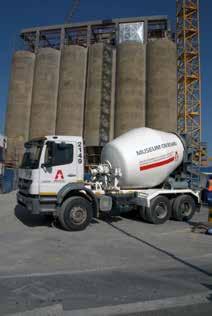
AfriSam is also the co-founder of the AfriSamSAIA Award for Sustainable Architecture + Innovation, which recognises the importance of green buildings and acknowledges the contributions made by forward-thinking industry players towards bringing sustainable innovation to human habitats.
78 IMIESA October 2019
C EMENT & C ONCRETE
A section of the repaired foor
The Zeitz MOCAA museum and hotel under construction within Cape Town’s V&A Waterfront
Simplifying large tile adhesion
Falling into the C2F class, Mapei’s Adesilex P4 is a rapidsetting, semi-fluid, full-contact adhesive. It offers the added benefit of 100% tile coverage, eliminating the need for back-buttering on large-format tiles. This results in cost savings in both time and consumption per square metre (subject to required thickness). The product is easily trowelable and allows for light traffic within four hours.
As a smoothing compound, it can be used on interior and exterior surfaces up to a maximum thickness of 20 mm. Providing the substrate is clean with no loose debris, it can absorb deflections on the substrate and provides easy levelling and localised smoothing. The product can even be used as a mortar for brick and concrete block walls, wherever quick curing and high strengths are required
“It’s important to remember that if the product is used as both a smoothing


compound and a tile adhesive, the smoothing layer needs to be hardened and prepared correctly before proceeding with the tile application,” says Zamaswazi Ntobela, product manager: Ceramics, Mapei South Africa.
Adesilex P4 is suitable in heavy traffic zones such as offices, shopping malls, hospitals and schools. Its wide temperature range means it can just as easily be used over underfloor heating installations or any other application where temperature extremes may occur. I nde X to advert I sers
Afrimat Shared Services IFC Afrisam South Africa 9 Ammann 39 ARRB Systems 18 Aveng (Nafasi Water) 49 Averda 65 Bakwena Platinum Corridor 27 Chaithoo 14 Colas 30 ELB Equipment 61 Entsika Consulting OFC Gabion Baskets 43 GeoGroup 45 Grundfos 68 Herrenknecht 46 IMESA 36, 76, 80 JG Afrika 35 Kemach JCB 77 KSB Pumps & Valves 64 Lanxess 40 Lektratek Water Technology 48 Mariswe 37 Martin & East 57 Mather+Platt 66 Much Asphalt 10 NOSA 52
C EMENT & C ONCRETE ABOVE
RIGHT
easily
allows for light traffic within four hours IMIESA October 2019 79 Quality Filtration Systems 38 Rainbow Reservoirs 2 Sabita 29 Shisalanga OBC, 24 Sika 41 Sizabantu Piping Systems IBC South African Road Federation LI, 20 Southern Pipeline Contractors 4 Structa 58 Umgeni Water 54 Utility Systems 70 Veolia Water Technologies South Africa 50
Adesilex P4 eliminates the need to back-butter large-format tiles
The product is
trowelable and
IMESA AFFILIATE MEMBERS

PROFESSIONAL AFFILIATES

AECOM siphokuhle.dlamini@aecom.com
Afri-Infra Group (Pty) Ltd banie@afri-infra.com
ALULA (Pty) Ltd info@alulawater.co.za
AQUADAM (Pty) Ltd sales@aquadam.co.za
Aurecon Fani.Xaba@aurecongroup.com
Aveng Manufacturing Infraset werner.booyens@infraset.com
Averda claude.marais@averda.com
Bigen Africa Group Holdings otto.scharfetter@bigenafrica.com
BMK Group brian@bmkgroup.co.za
Bosch Munitech info@boschmunitech.co.za
Bosch Projects (Pty) Ltd mail@boschprojects.co.za
BVI Consulting Engineers marketing@bviho.co.za
Civilconsult Consulting Engineers mail@civilconsult.co.za
Corrosion Institute of Southern Africa secretary@corrosioninstitute.org.za
Development Bank of SA divb@dbsa.org.za
DPI Plastics Farhana@dpiplastics.co.za
EFG Engineers eric@efgeng.co.za
Elster Kent Metering Leonardus.Basson@honeywell.com
ERWAT mail@erwat.co.za
GIBB marketing@gibb.co.za
GIGSA secretary@gigsa.org
GLS Consulting nicky@gls.co.za
Gorman Rupp Cordeiro@gormanrupp.co.za
Gudunkomo Investments & Consulting info@gudunkomo.co.za
Hatch Africa (Pty) Ltd info@hatch.co.za
Herrenknecht schiewe.helene@herrenknecht.de
Huber Technology cs@hubersa.com
Hydro-comp Enterprises info@edams.co.za
I@Consulting info@iaconsulting.co.za
INGEROP mravjee@ingerop.co.za
Integrity Environment info@integrityafrica.co.za
IQHINA Consulting Engineers & Project Managers info@iqhina.co.za
iX engineers (Pty) Ltd hans.k@ixengineers.co.za
JBFE Consulting (Pty) Ltd issie@jbfe.co.za
JG Afrika DennyC@jgafrika.com
KABE Consulting Engineers info@kabe.co.za
Kago Consulting Engineers kagocon@kago.co.za
Kantey & Templer (K&T) Consulting Engineers ccherry@ctokamteys.co.za
Kitso Botlhale Consulting Engineers info@kitsobce.co.za
Lektratek Water general@lwt.co.za
Lithon Project Consultants (Pty) Ltd info@lithon.com
Makhaotse Narasimulu & Associates mmakhaotse@mna-sa.co.za
Malani Padayachee & Associates (Pty) Ltd admin@mpa.co.za
M & C Consulting Engineers (Pty) Ltd info@mcconsulting.co.za
Maragela Consulting Engineers admin@maragelaconsulting.co.za
Mariswe (Pty) Ltd neshniec@mariswe.com
Martin & East gbyron@martin-east.co.za
Mhiduve adminpotch@mhiduve.co.za
Mogoba Maphuthi & Associates (Pty) Ltd admin@mmaholdings.co.za
Moedi Wa Batho Consulting Engineers (Pty) Ltd info@wabatho.co.za
Much Asphalt bennie.greyling@muchasphalt.com
NAKO ILISO lyn.adams@nakogroup.com
Nyeleti Consulting merasmus@nyeleti.co.za
Odour Engineering Systems mathewc@oes.co.za
Ribicon Consulting Group (Pty) Ltd info@ribicon.co.za
Royal HaskoningDHV francisg@rhdv.com
SABITA info@sabita.co.za
SAFRIPOL mberry@safripol.com
SALGA info@salga.org.za
SAPPMA admin@sappma.co.za / willem@sappma.co.za
SARF administrator@sarf.org.za.co.za
SBS Water Systems mava@sbstanks.co.za
Sembcorp Siza Water info-sizawater@sembcorp.com
Sigodi Marah Martin Management Support lansanam@sigodimarah.co.za
SiVEST SA garths@sivest.co.za
Sizabantu Piping Systems (Pty) Ltd gregl@sizabantupipingsystems.com
SKYV Consulting Engineers (Pty) Ltd kamesh@skyv.co.za
SMEC capetown@smec.com
Sobek Engineering gen@sobek.co.za
Southern African Society for Trenchless Technology director@sasst.org.za
Southern Pipeline Contractors (Pty) Ltd spc@vinci-construction.com
SRK Consulting jomar@srk.co.za
Star Of Life Emergency Trading CC admin@staroflife.co.za
Syntell julia@syntell.co.za
TECROVEER (Pty) Ltd info@tecroveer.co.za
TPA Consulting roger@tpa.co.za
Ulozolo Engineers CC admin@ulozolo.co.za
V3 Consulting Engineers (Pty) Ltd info@v3consulting.co.za
Vetasi south-africa@vetasi.com
VIP Consulting Engineers esme@vipconsulting.co.za
VUKA Africa Consulting Engineers info@vukaafrica.co.za
Water Institute of Southern Africa wisa@wisa.org.za
Wam Technology CC support@wamsys.co.za
Water Solutions Southern Africa ecoetzer@wssa.co.za
Wilo South Africa marketingsa@wilo.co.za
WRP ronniem@wrp.co.za
WRNA washy@wrnyabeze.com
WSP Group Africa ansia.meyer@wsp.com
IMESA


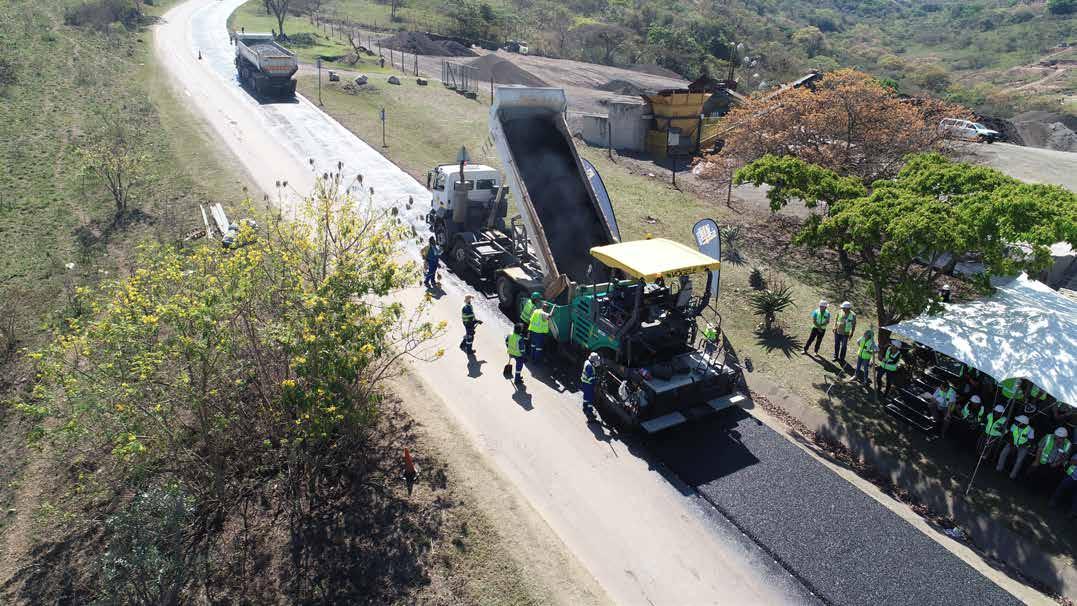






















































































 Randeer Kasserchun, president, IMESA
Randeer Kasserchun, president, IMESA







































































































































































































 AMBITIONS
AMBITIONS













































 Natalie Reyneke, associate, MDA Attorneys
Natalie Reyneke, associate, MDA Attorneys



































































